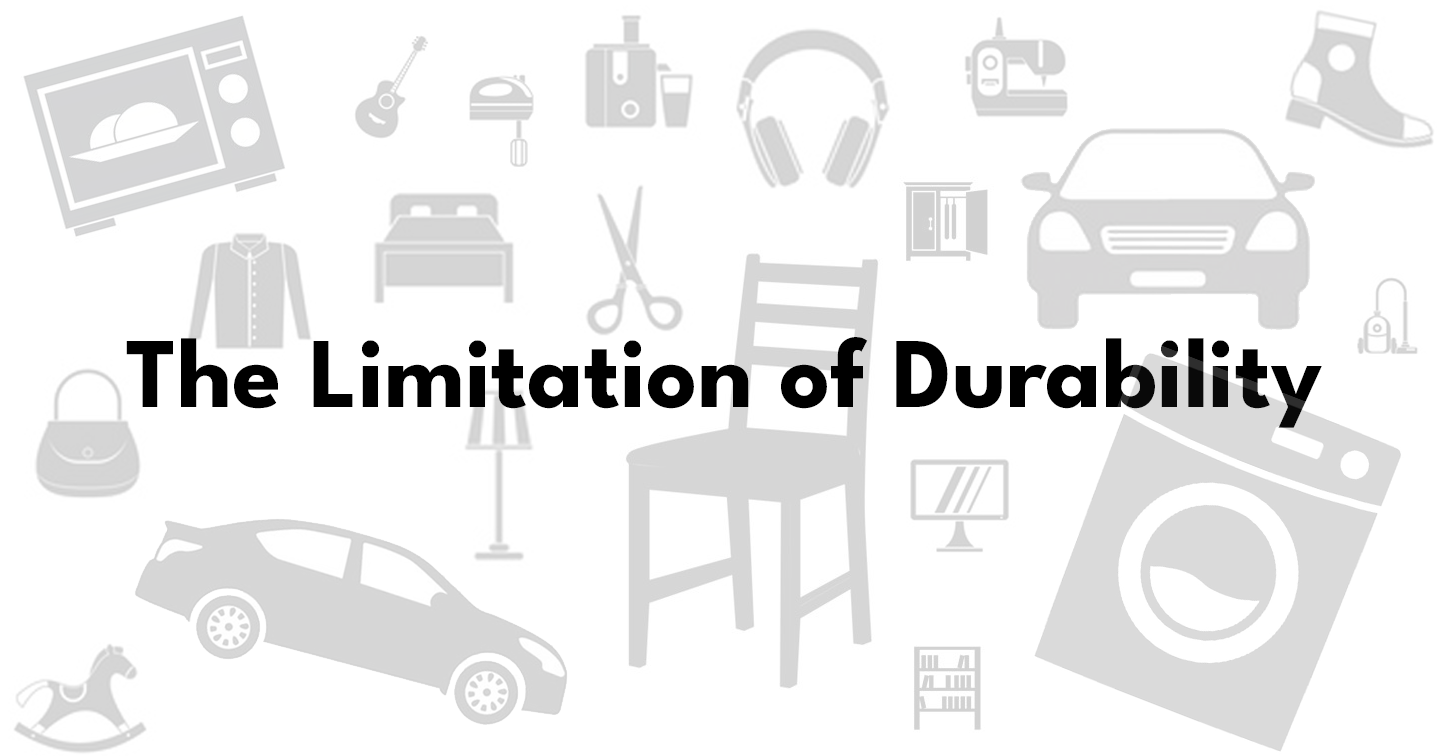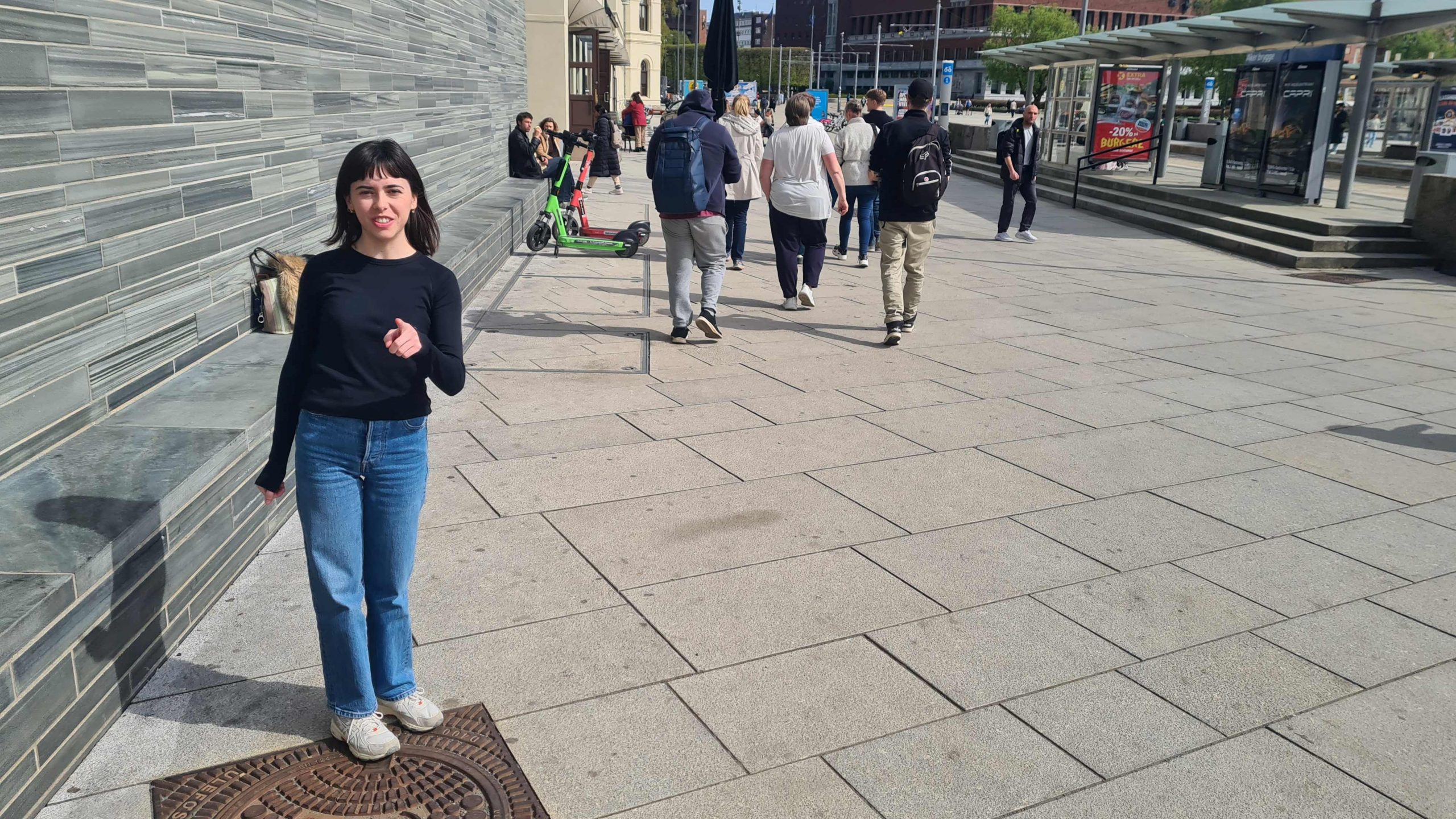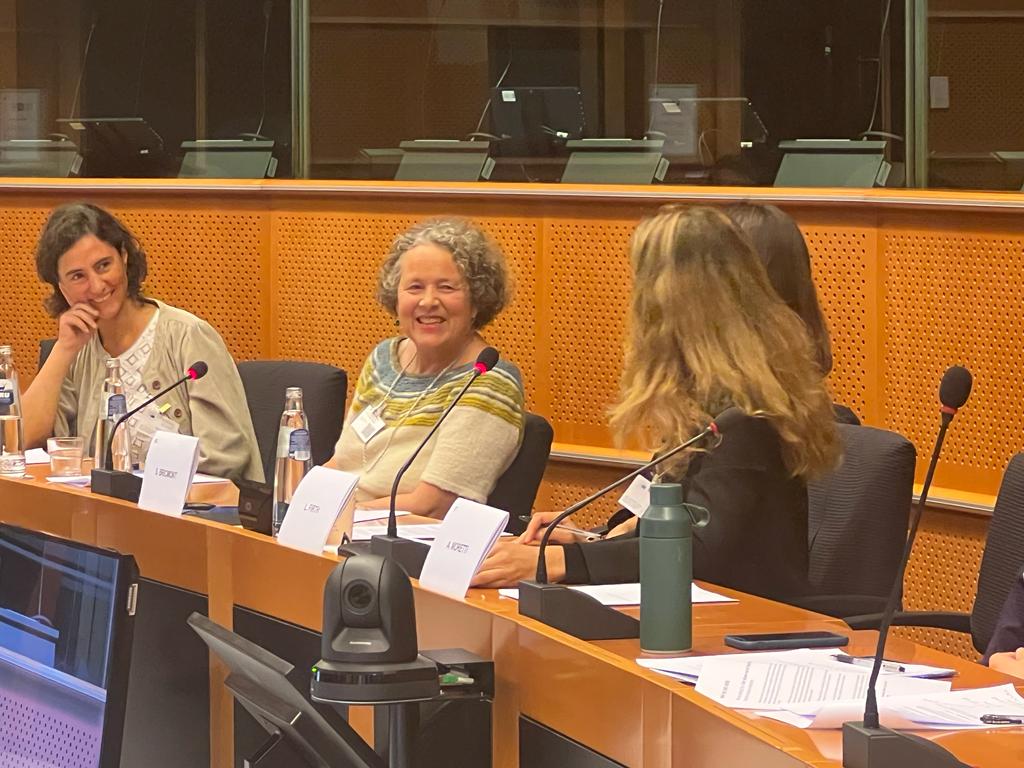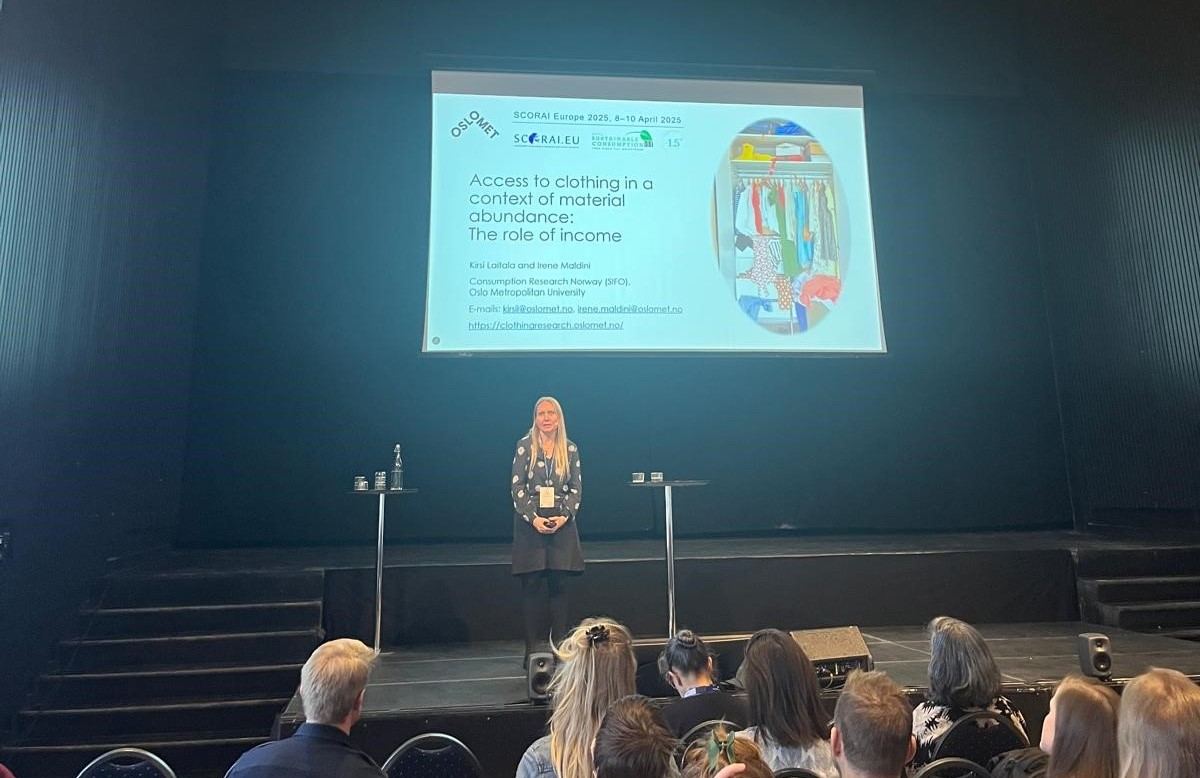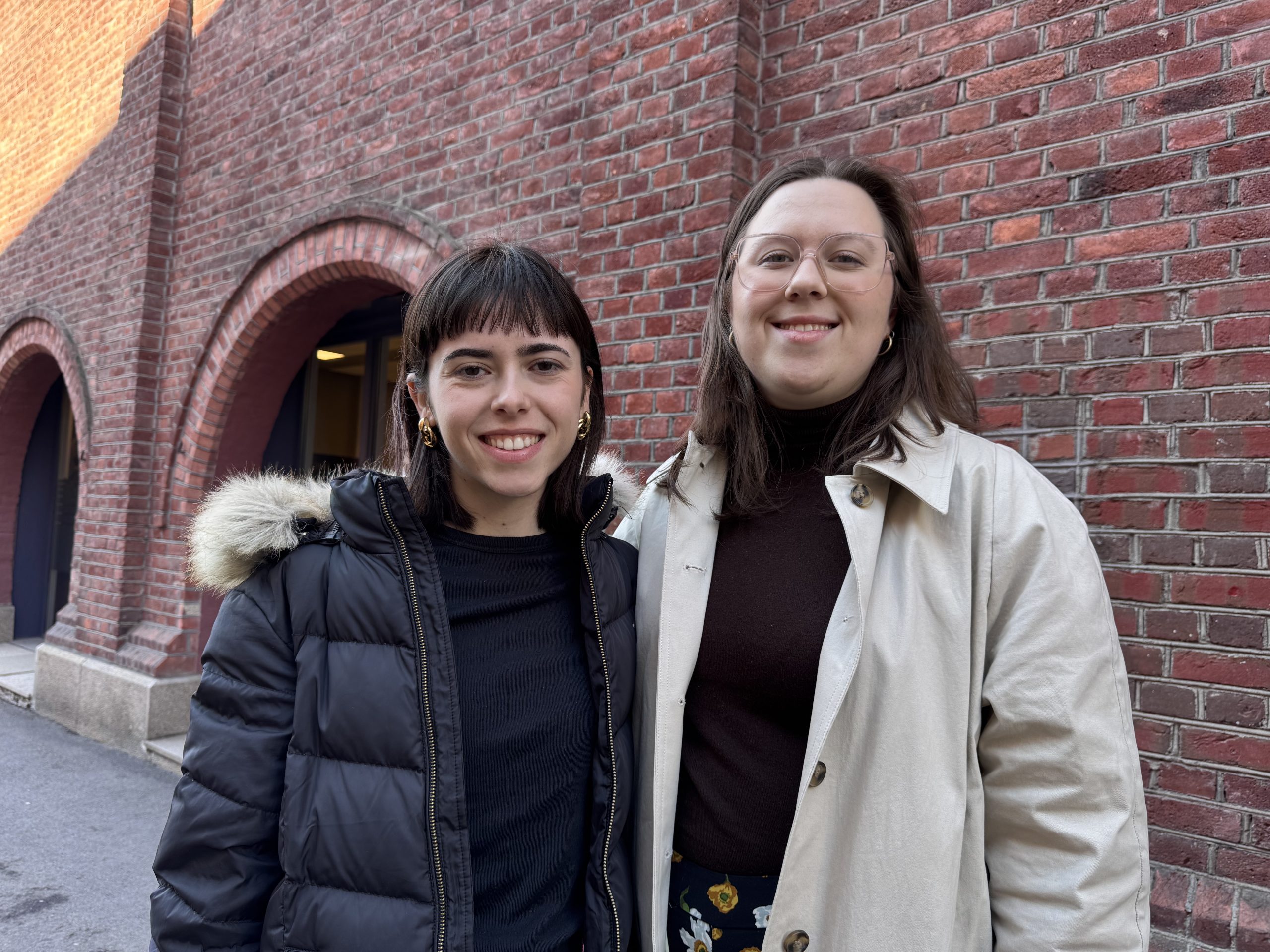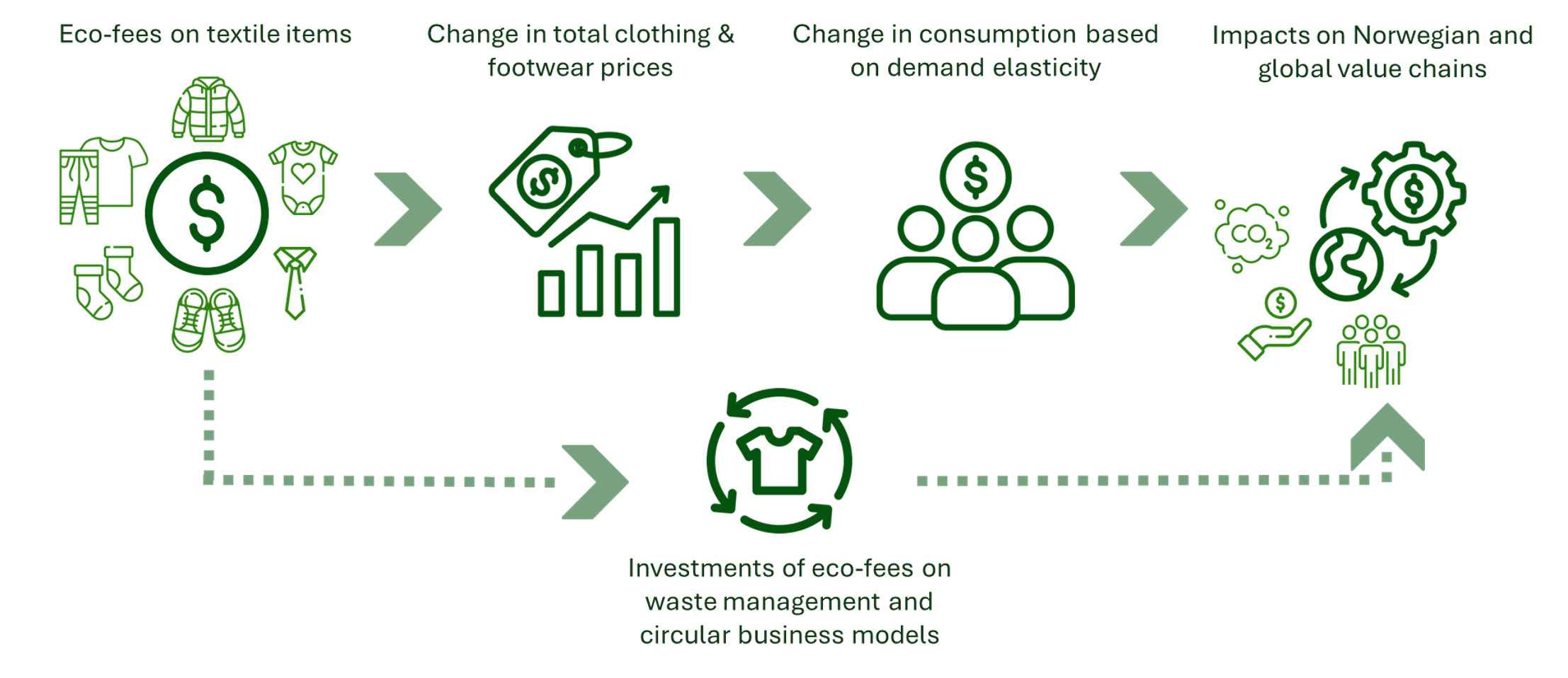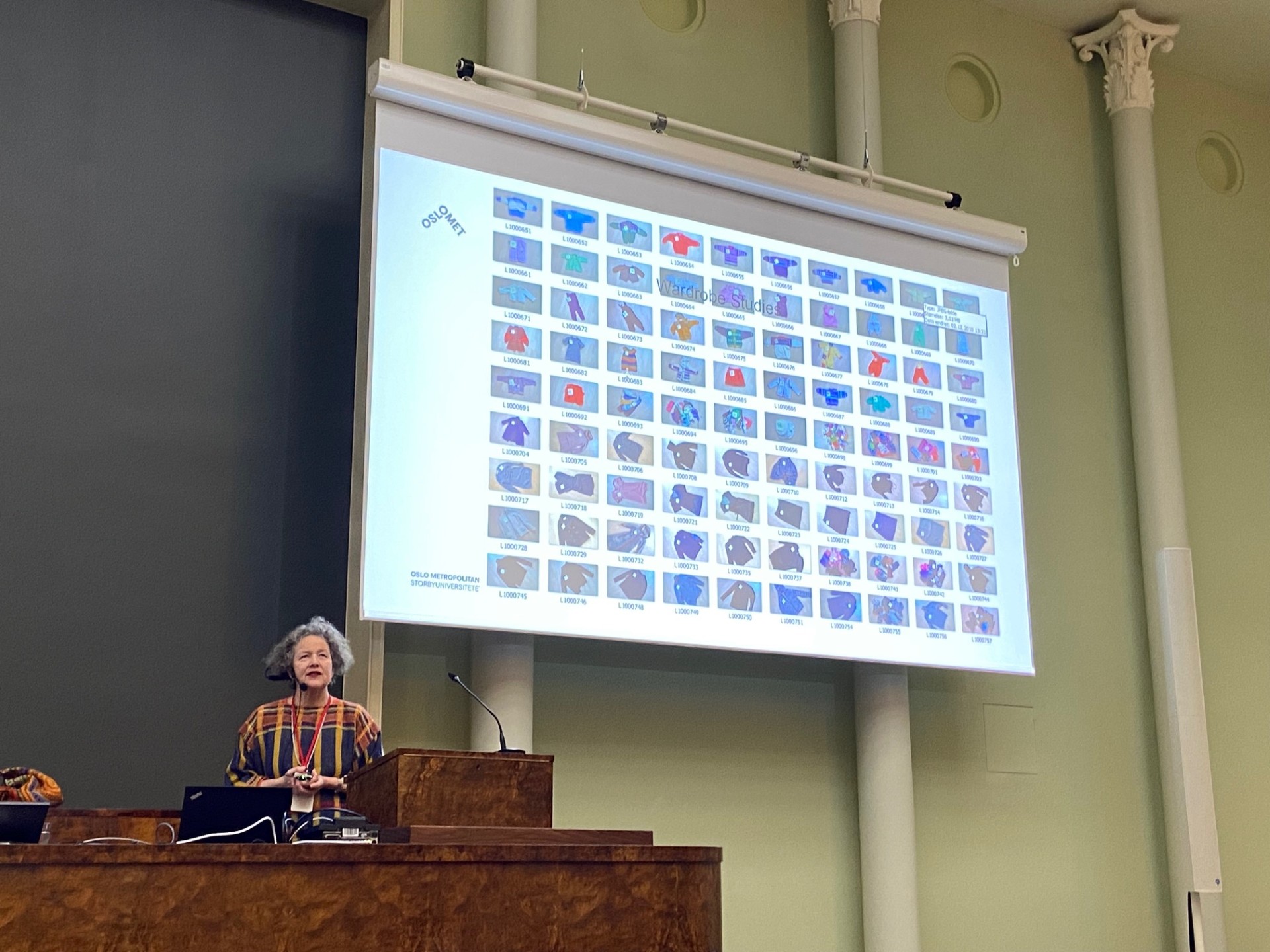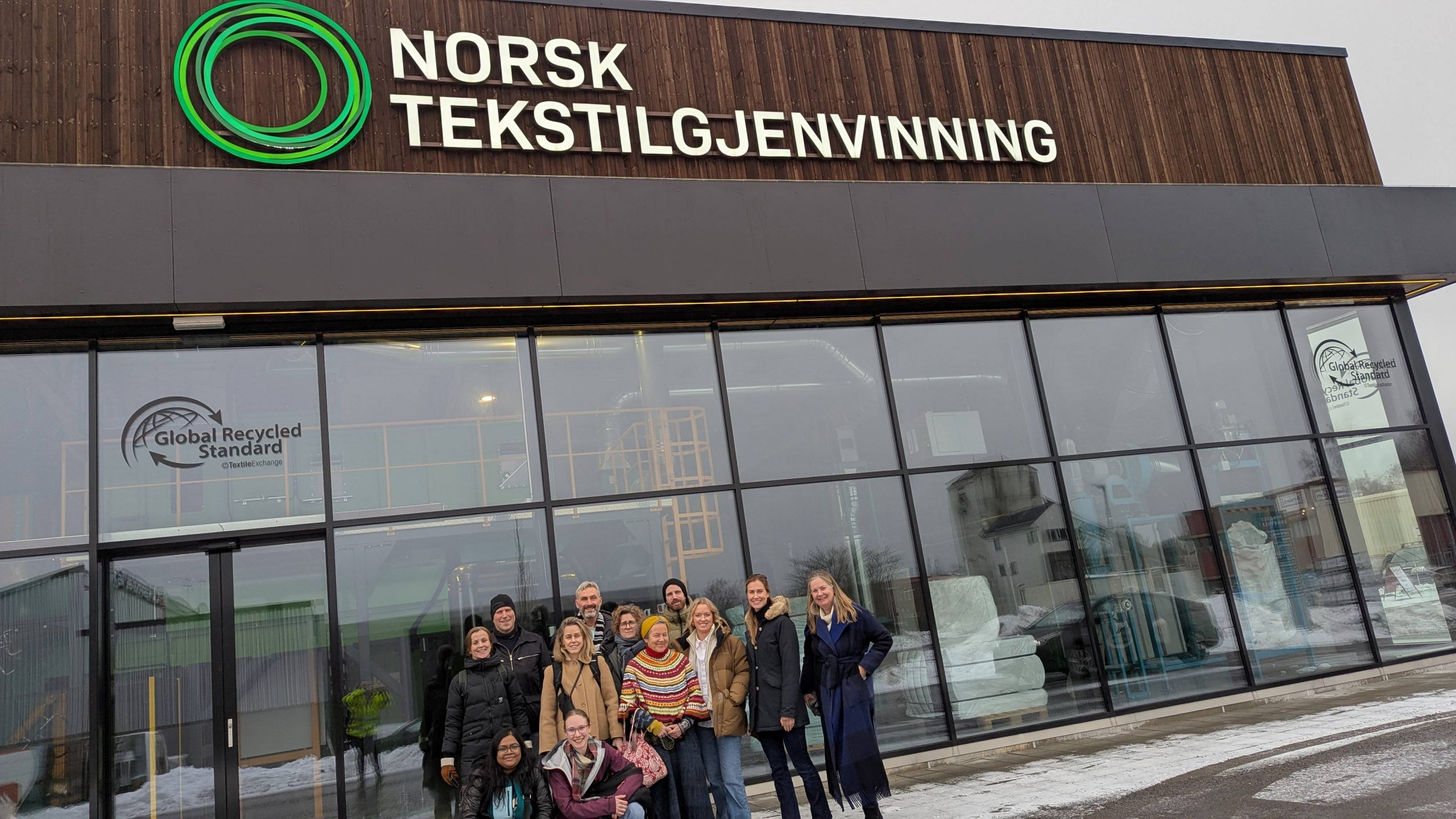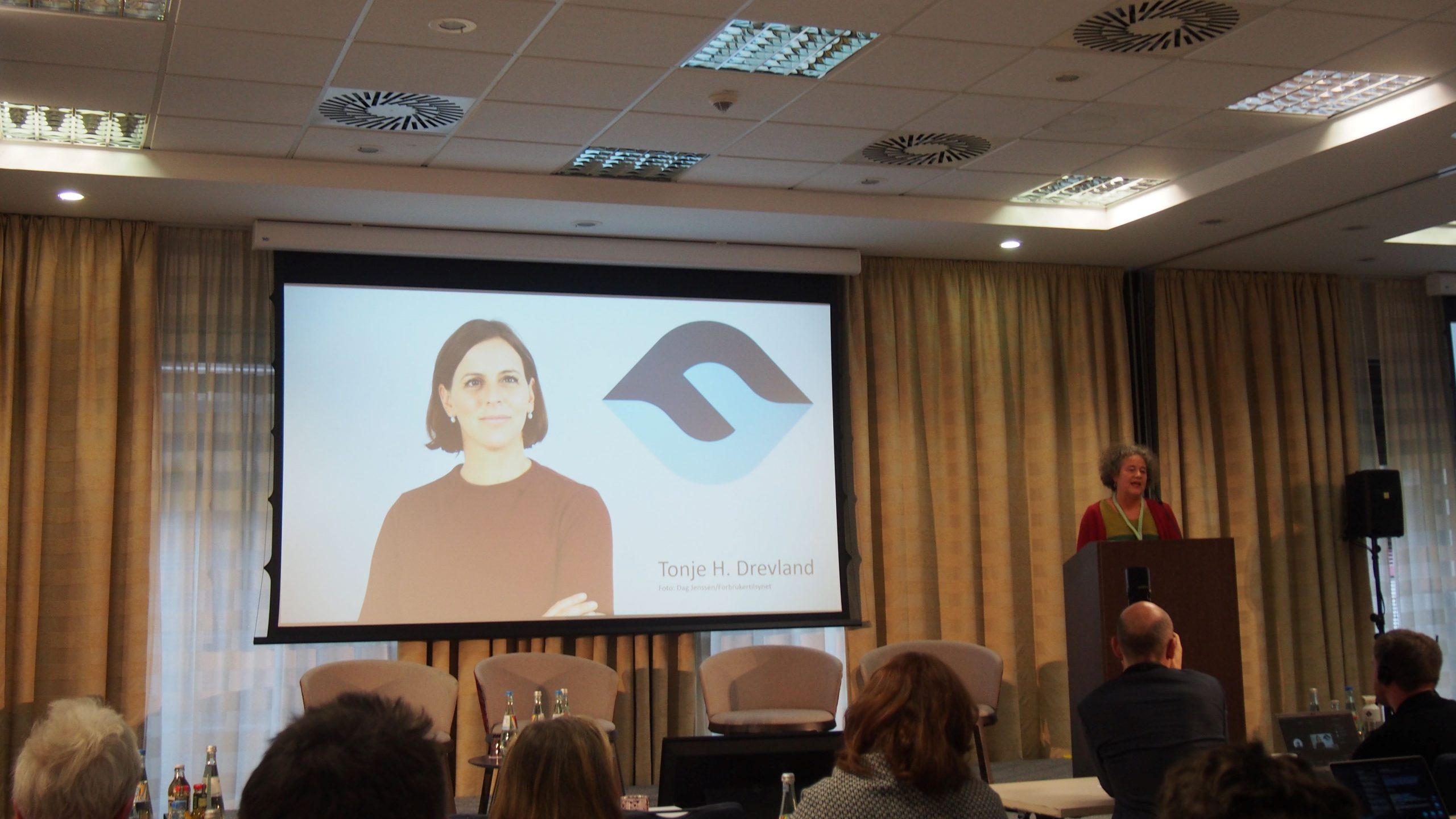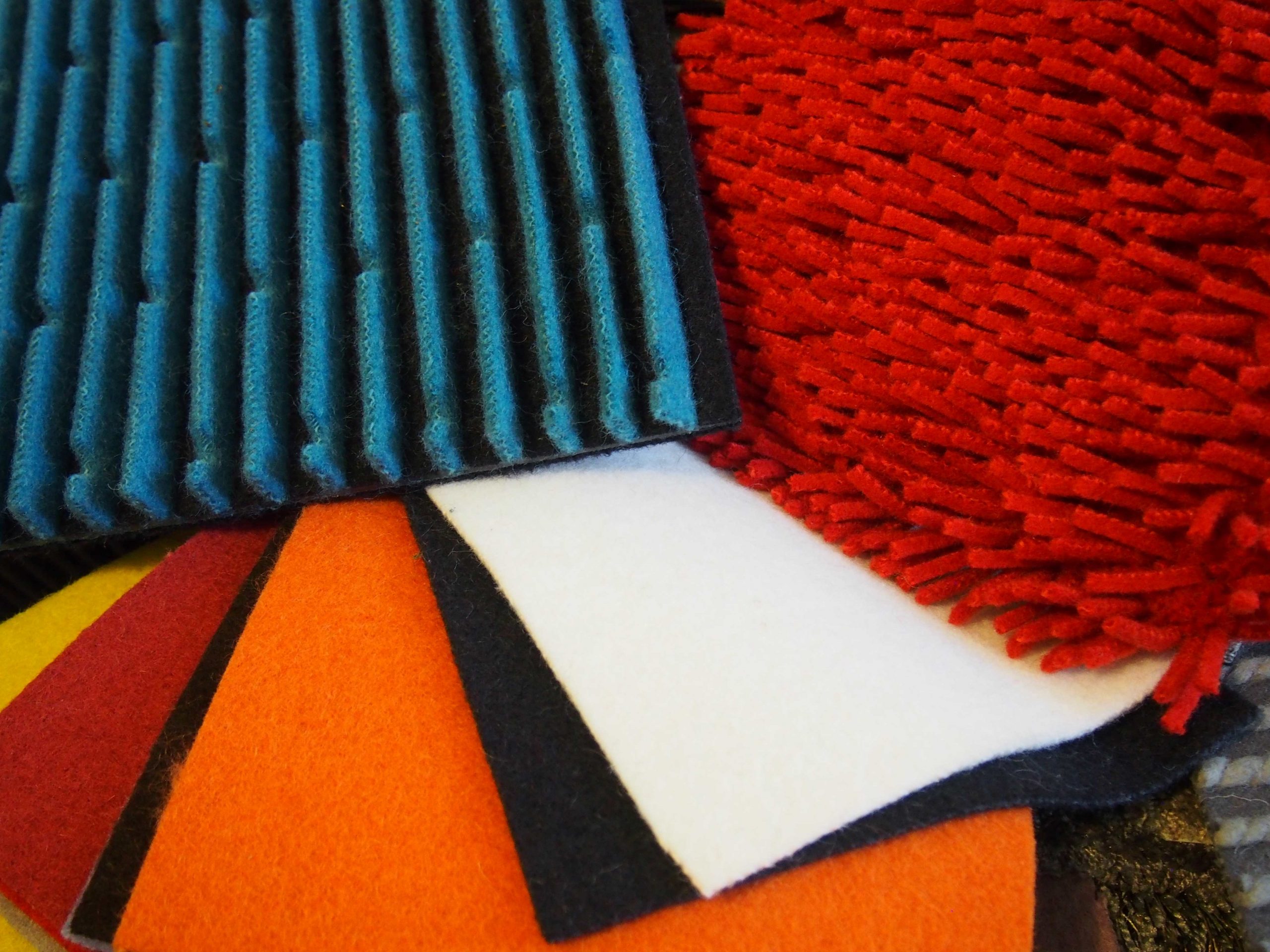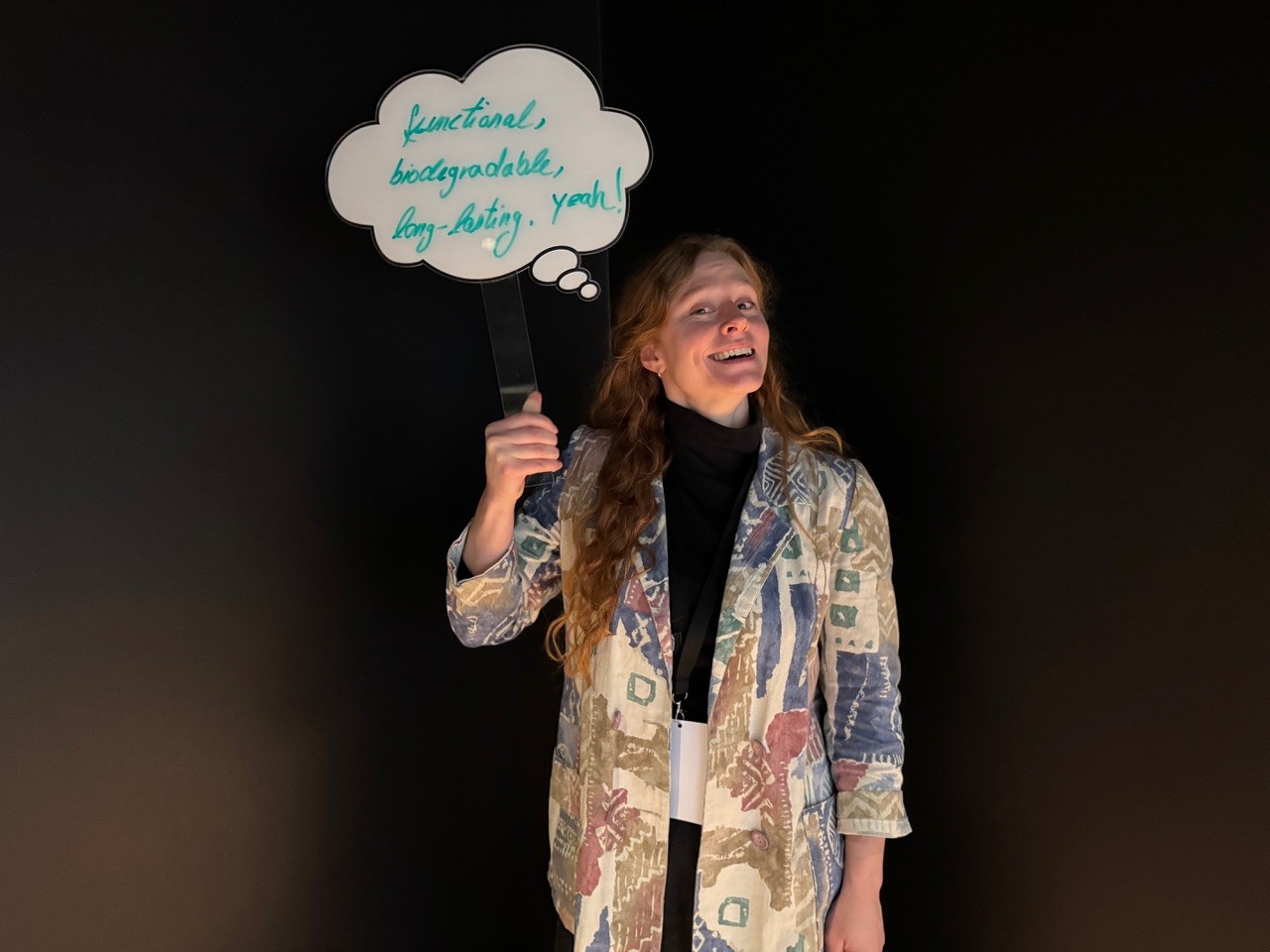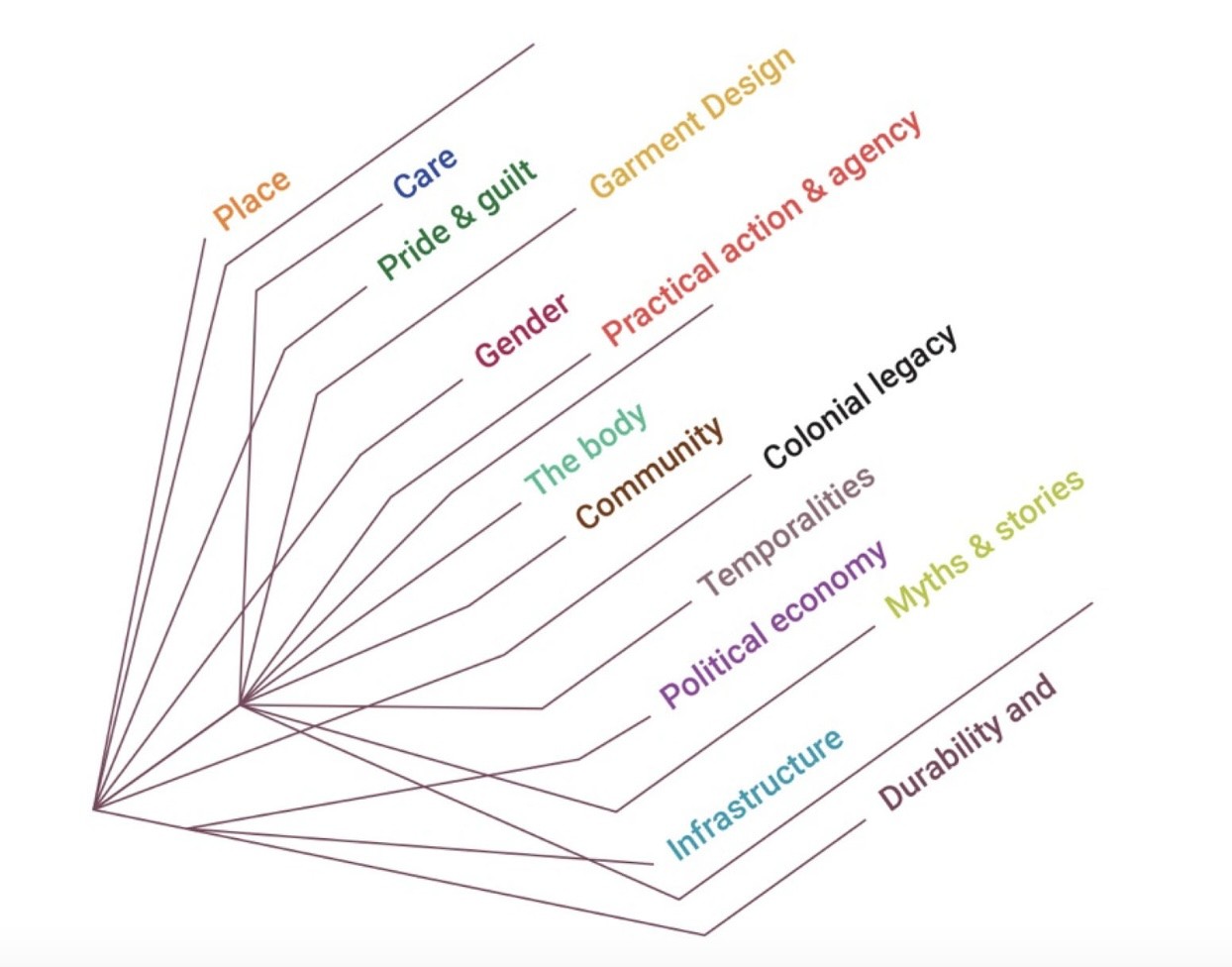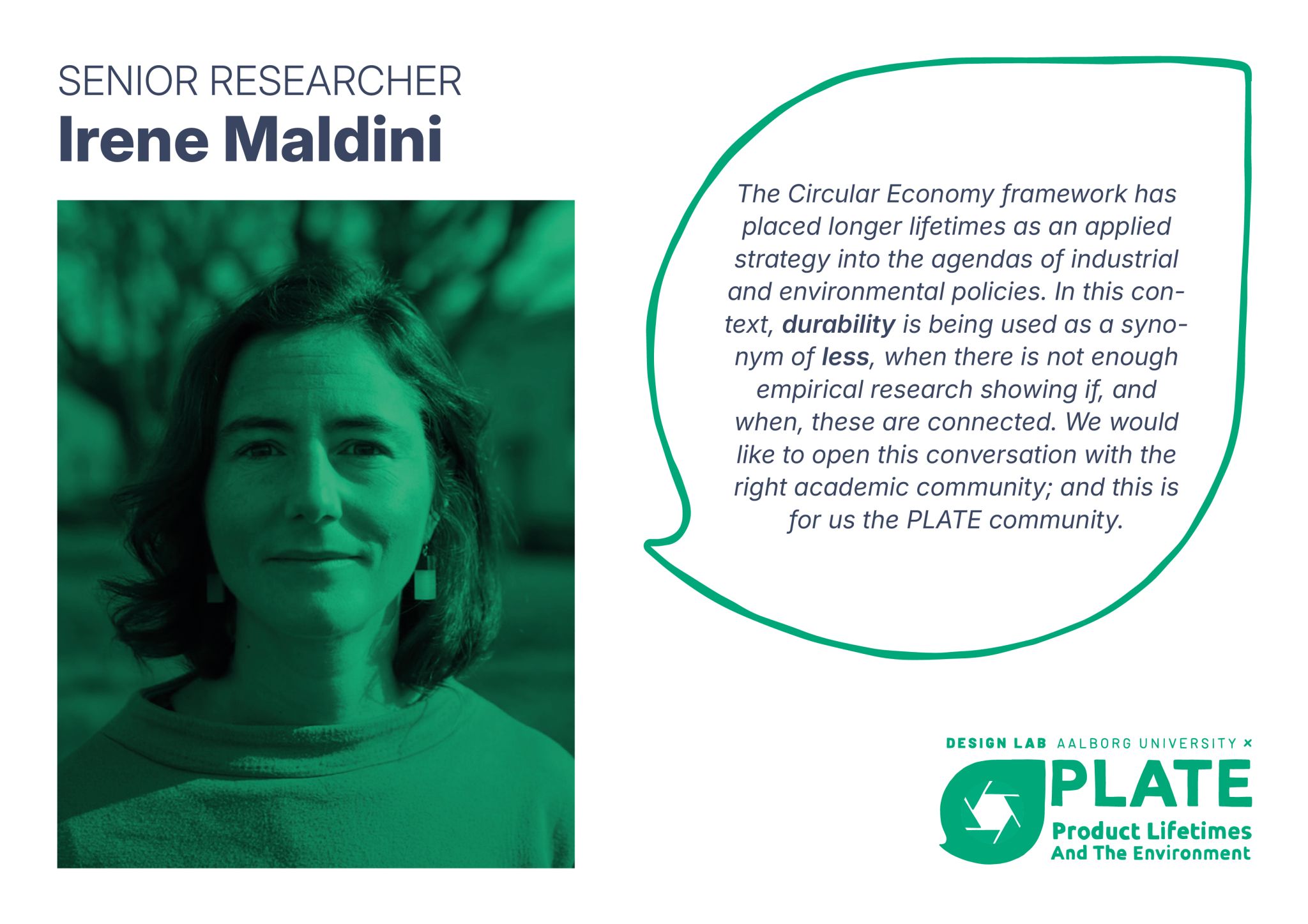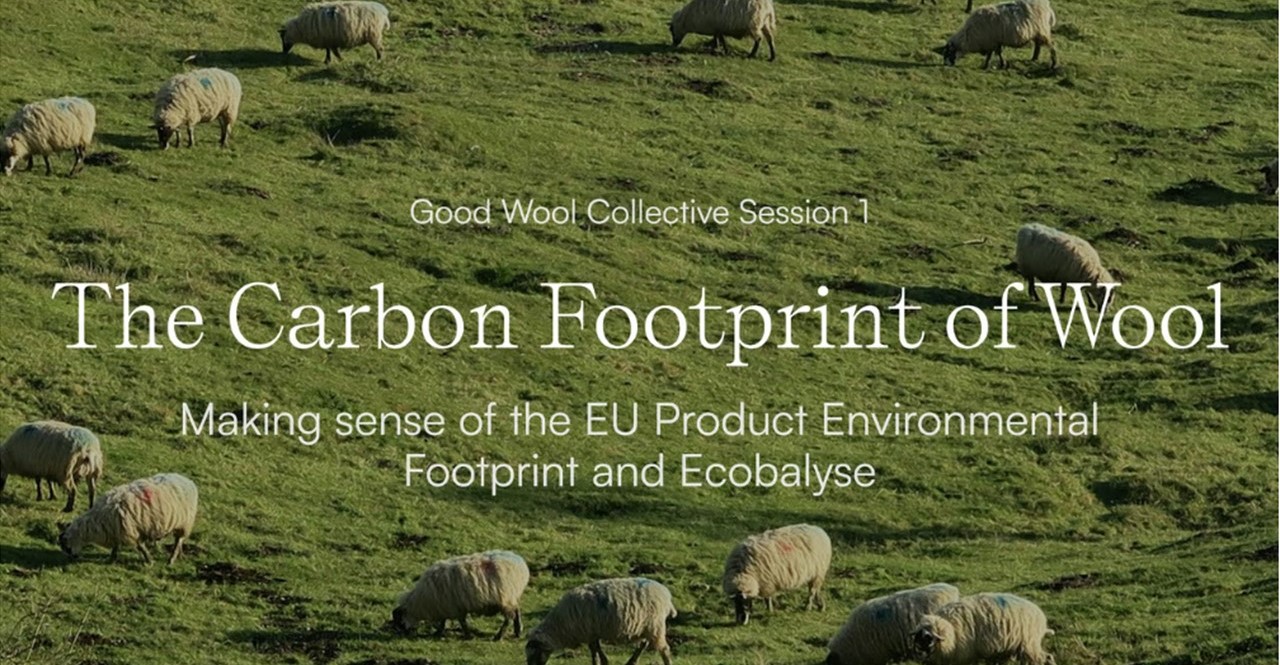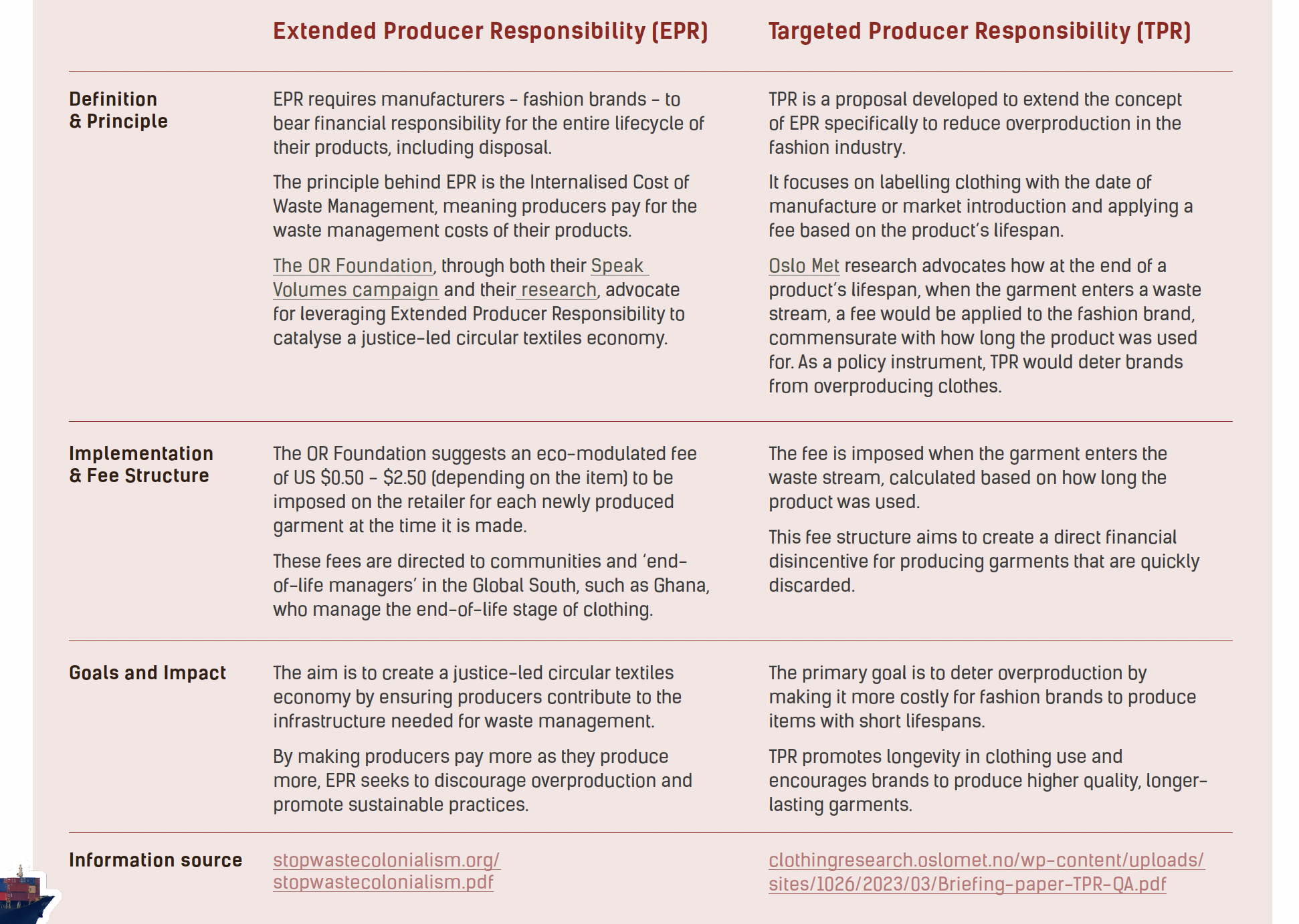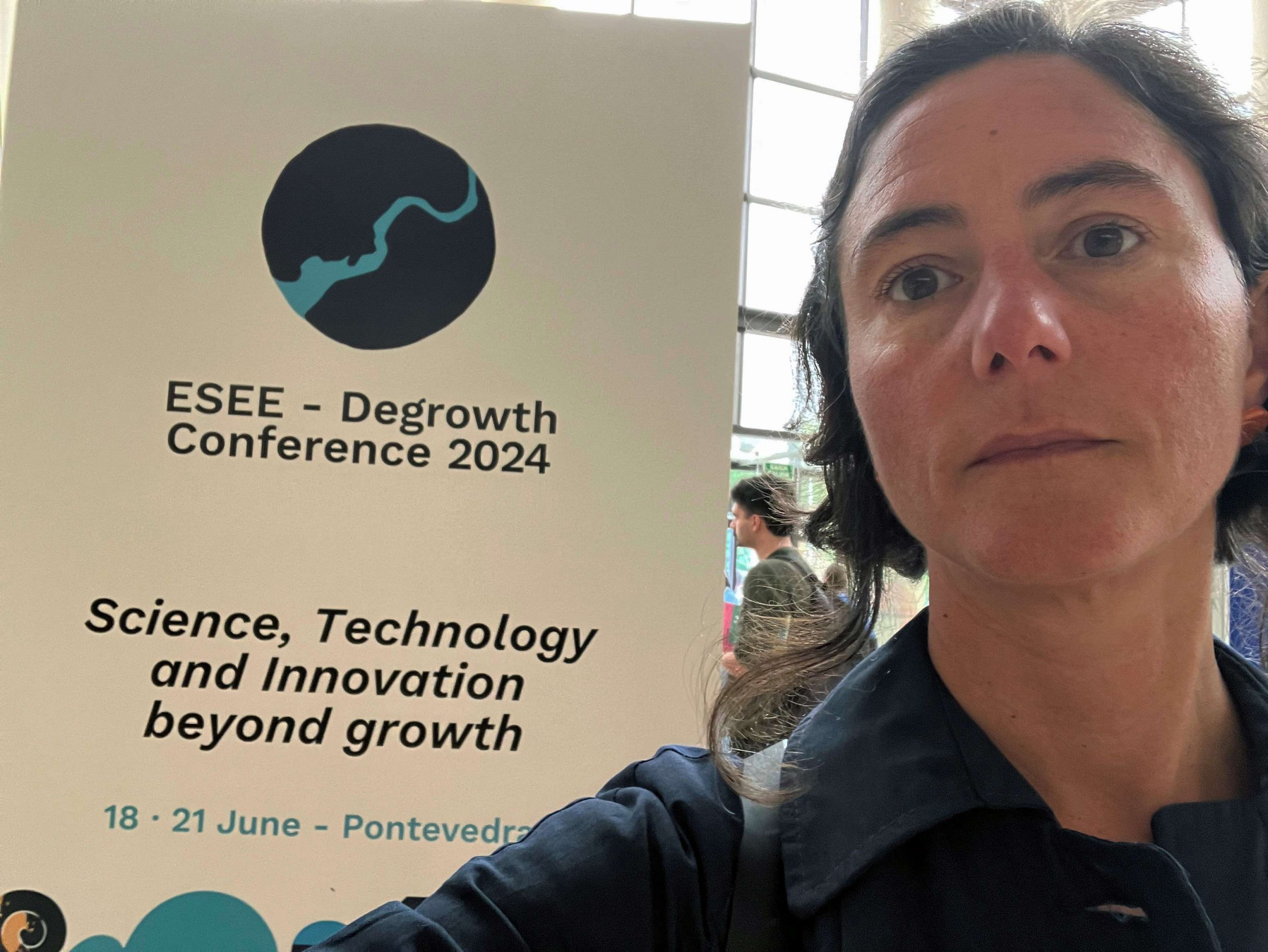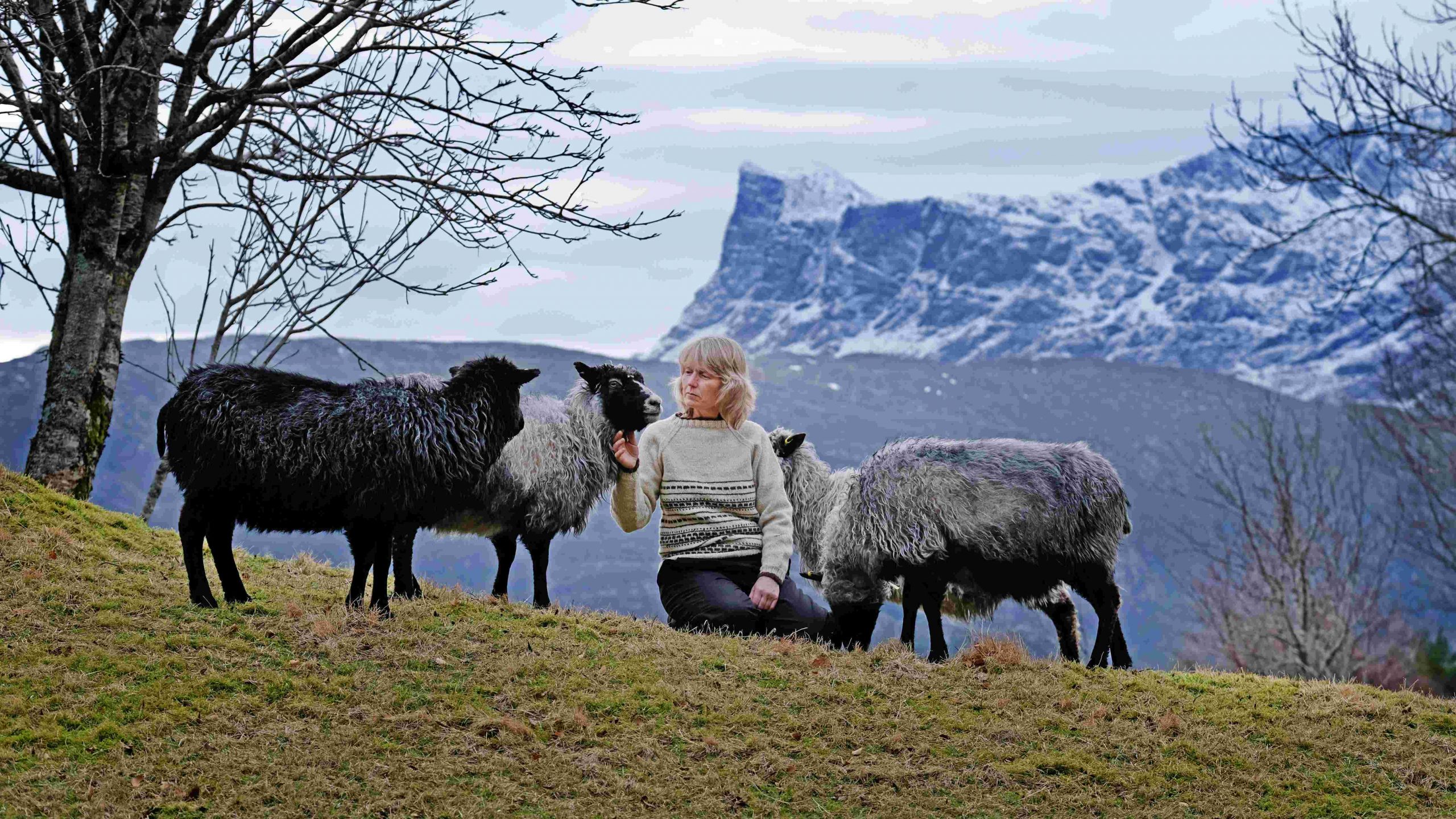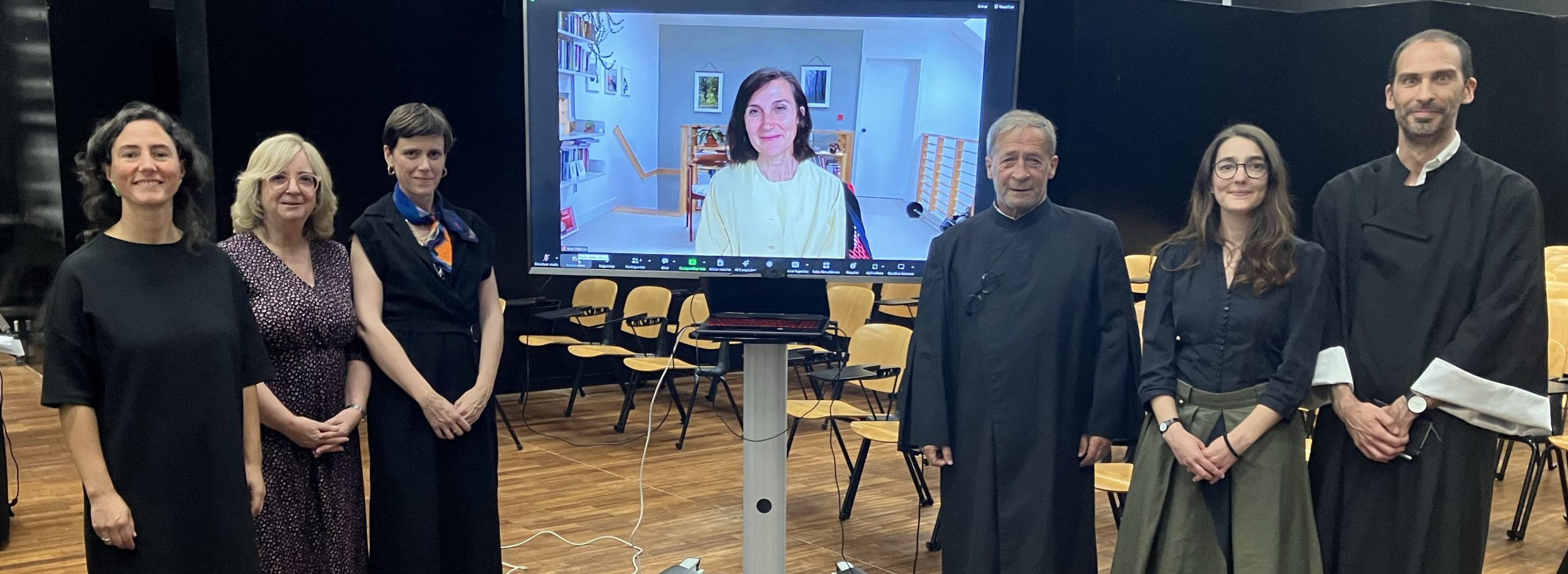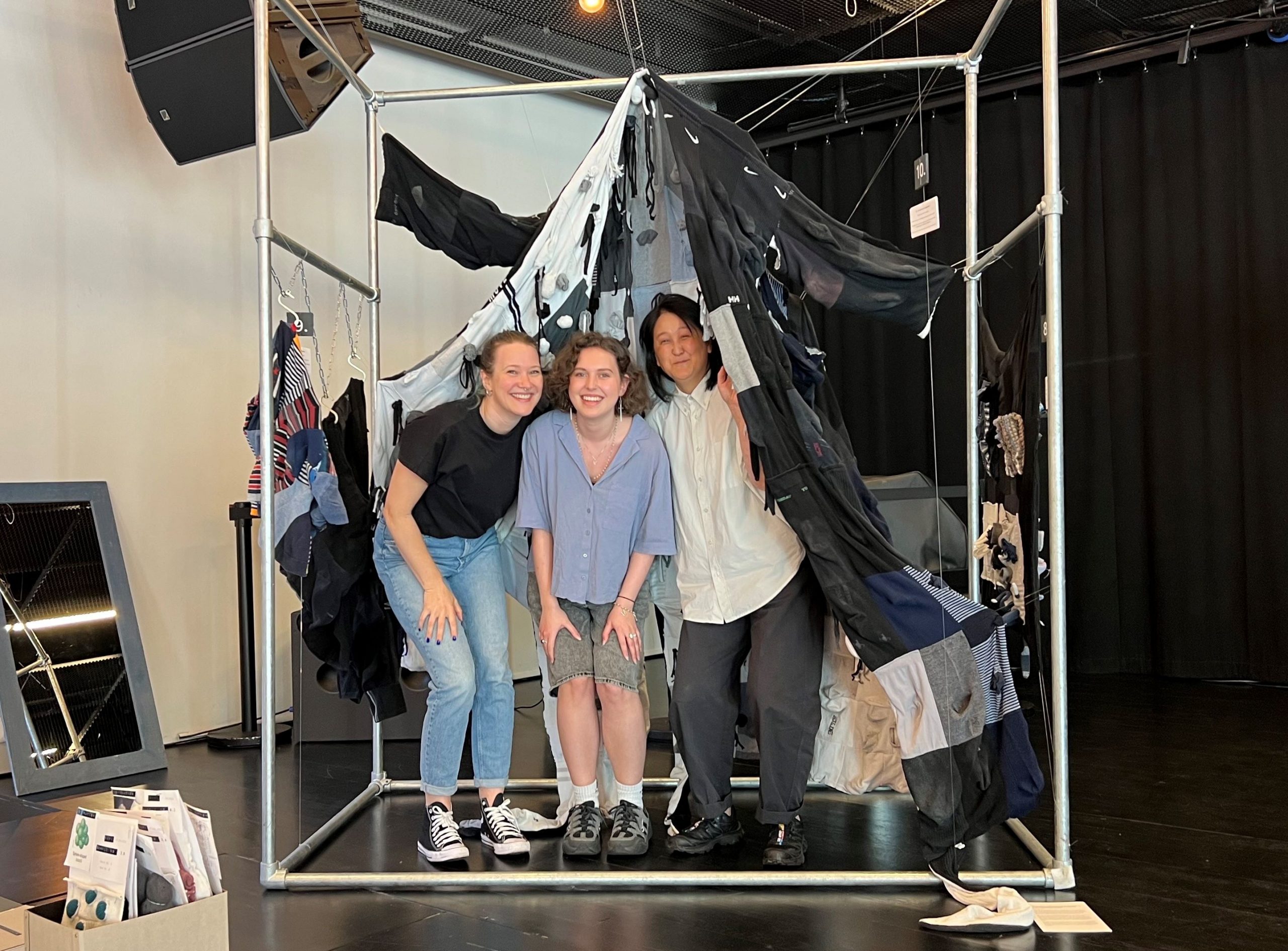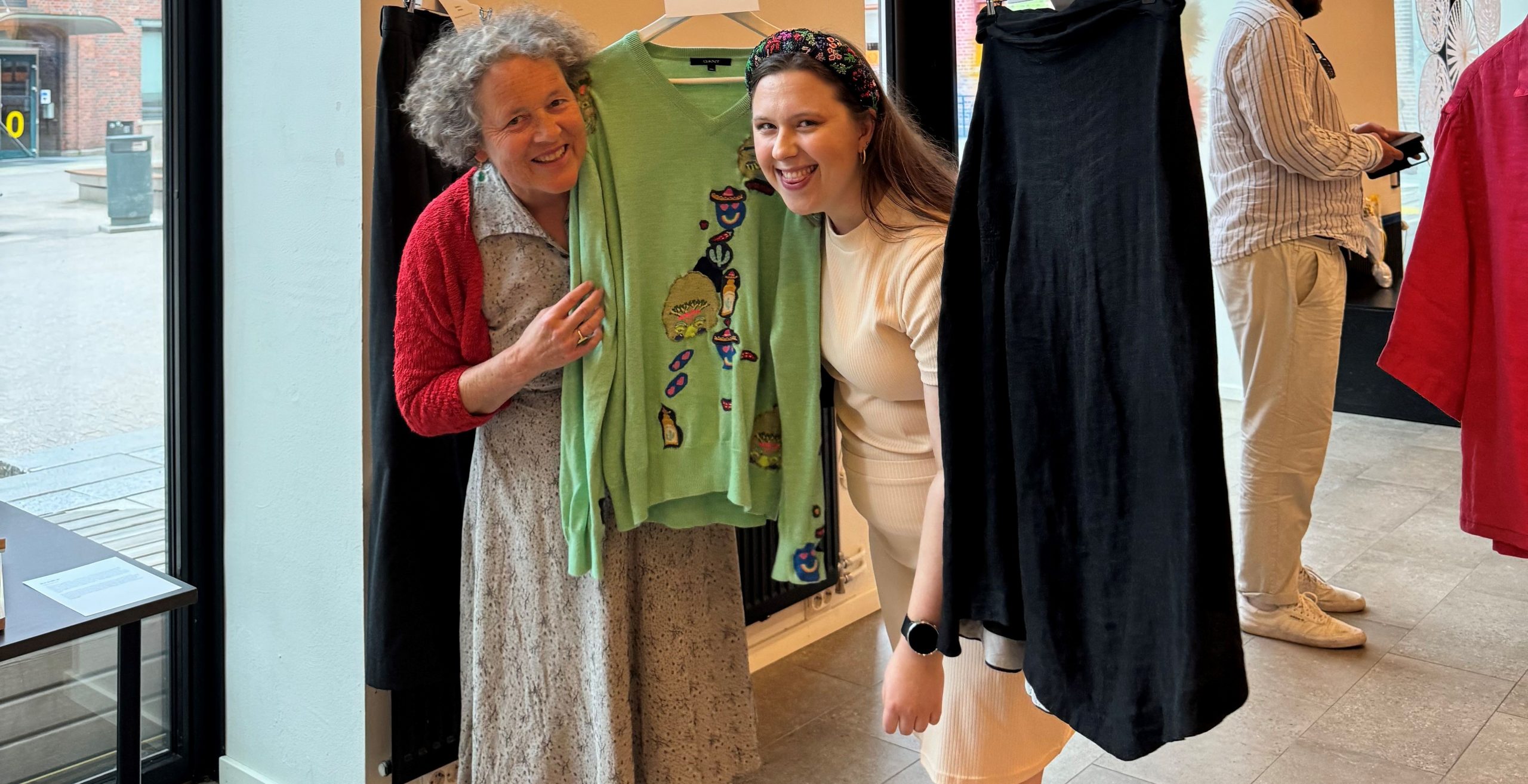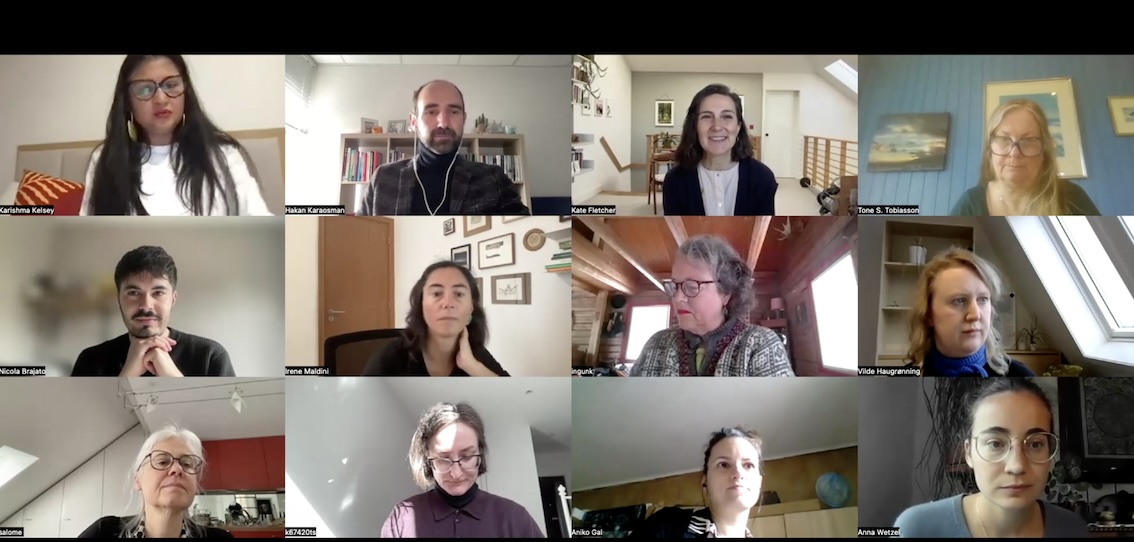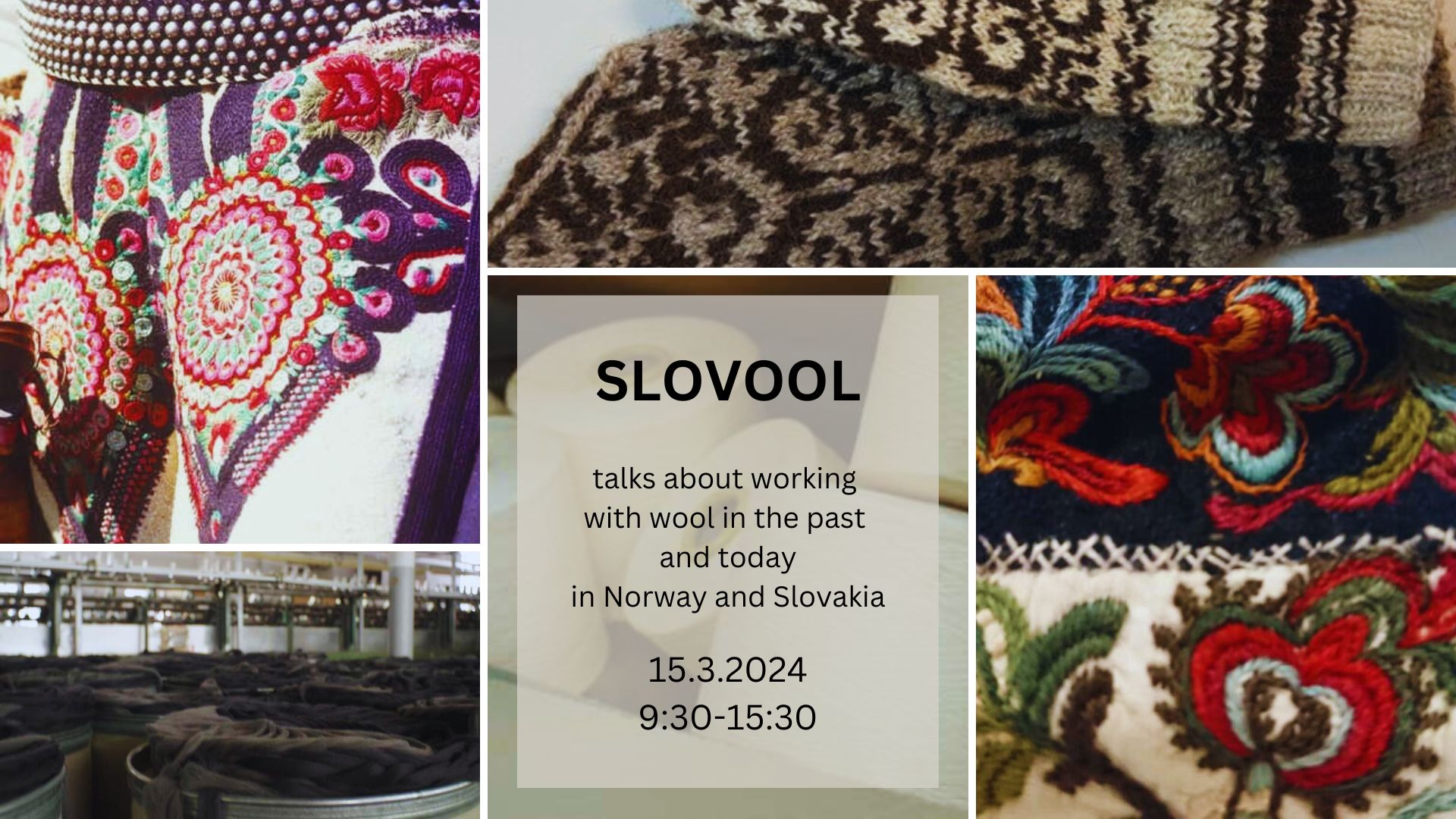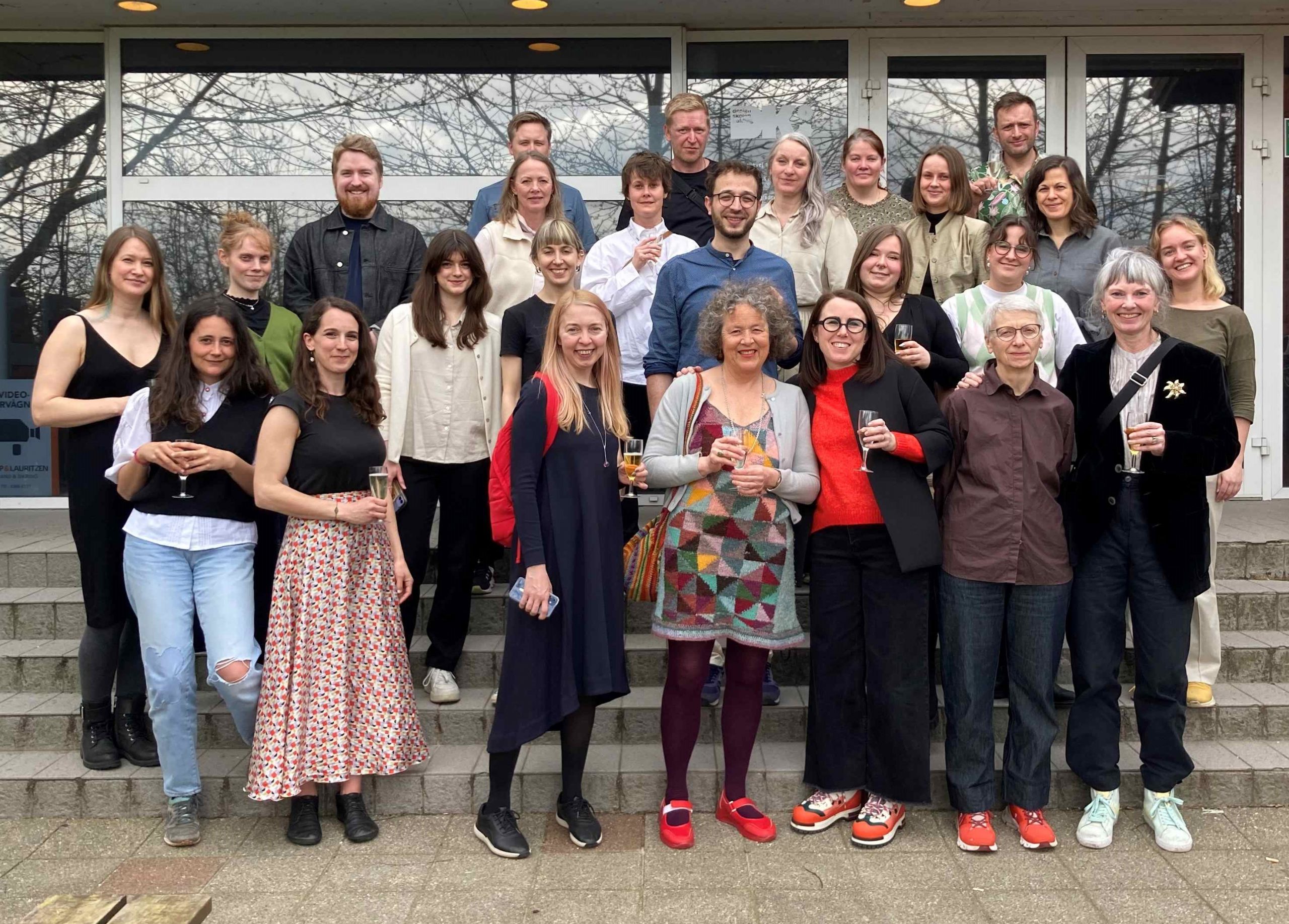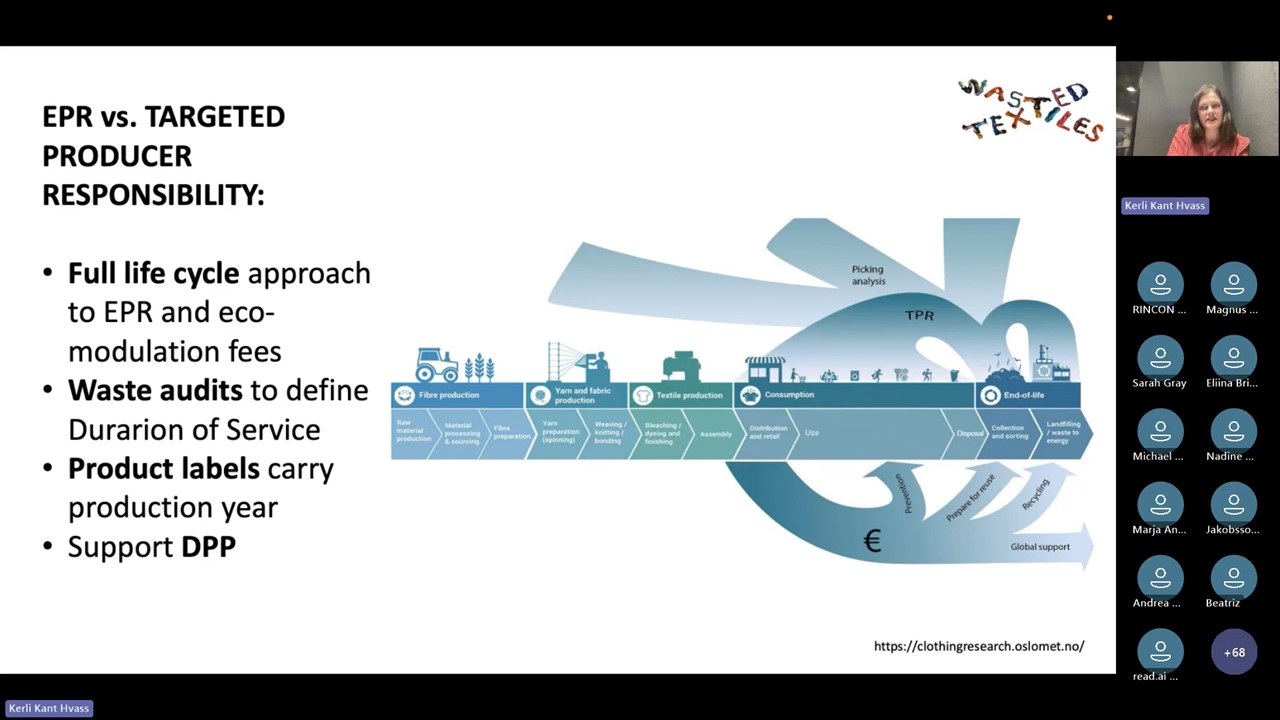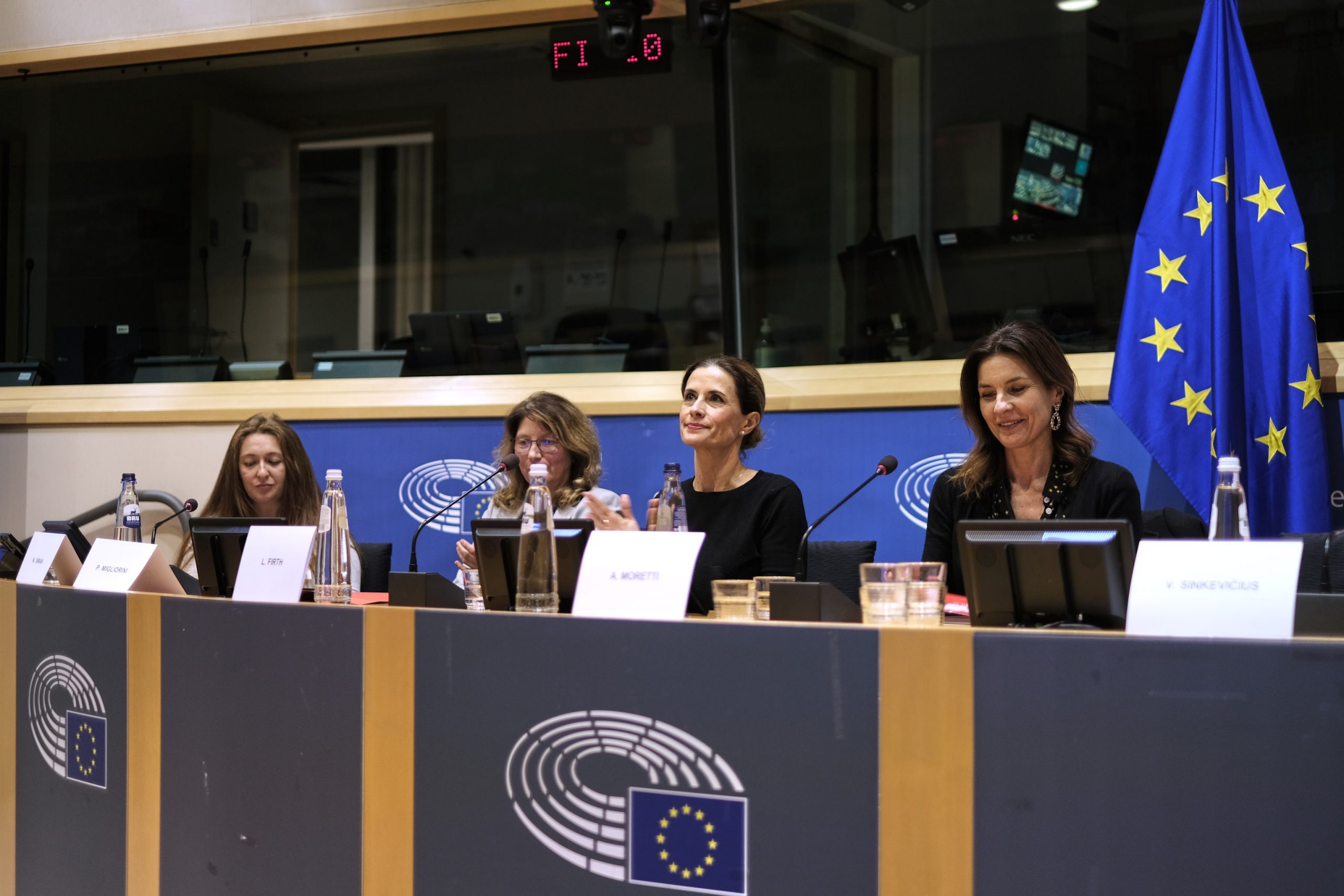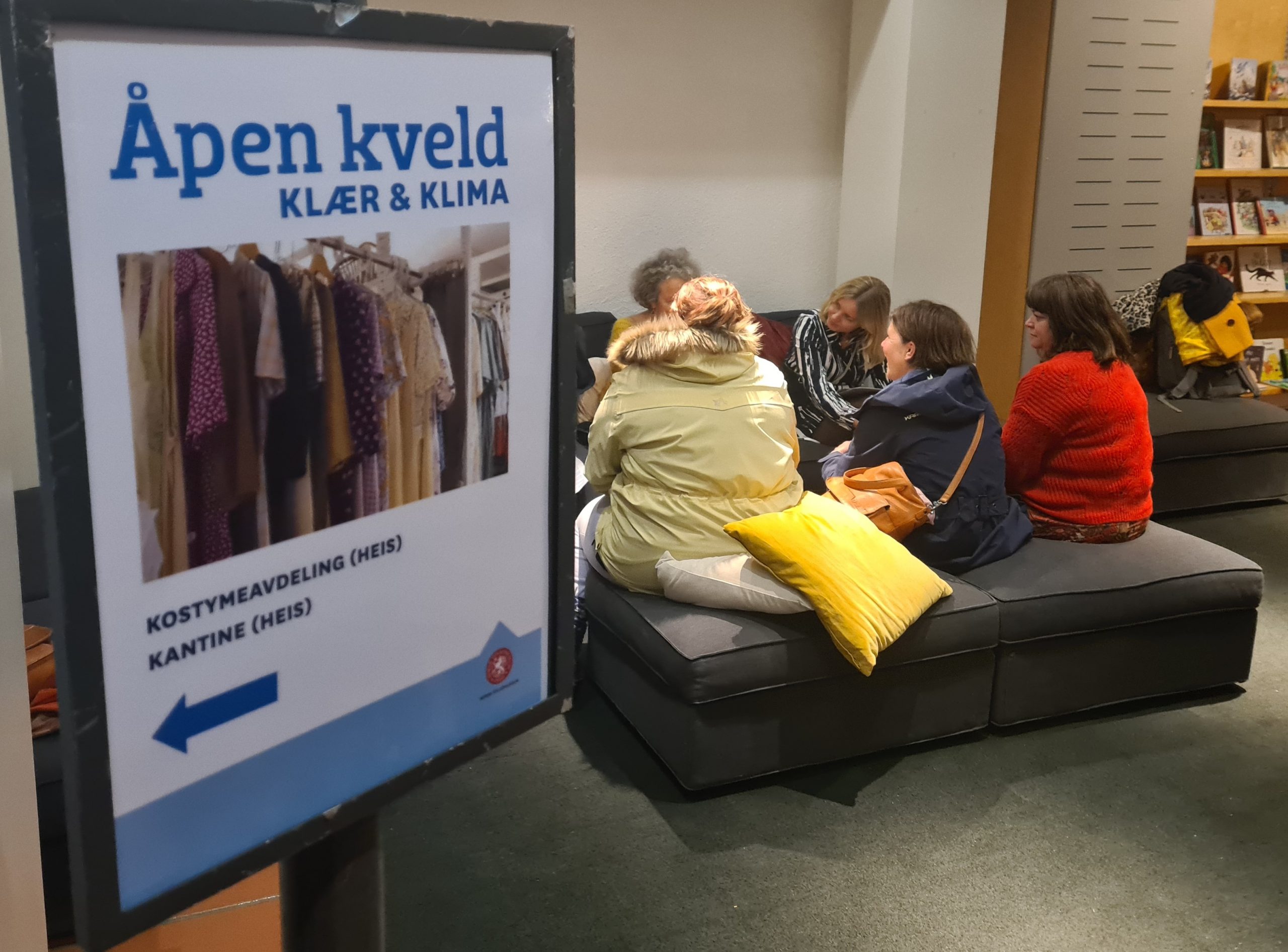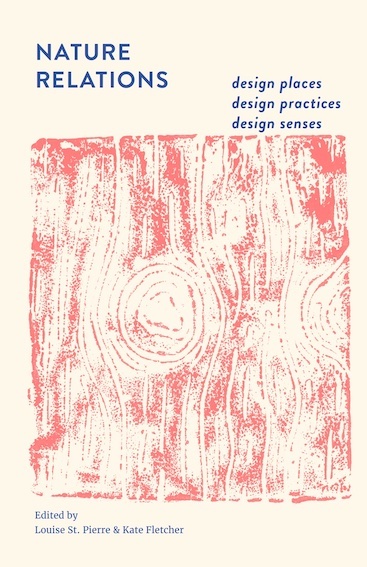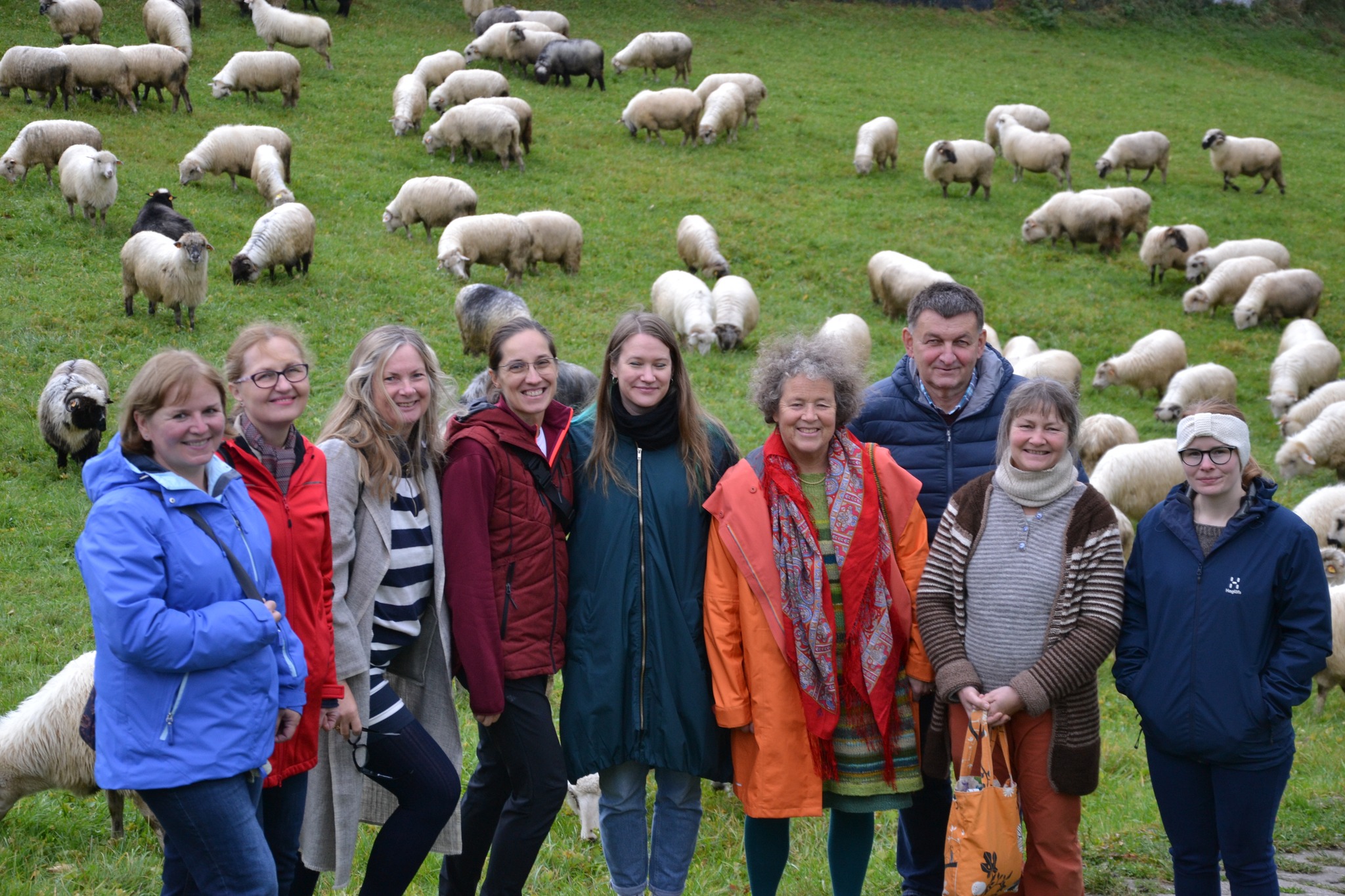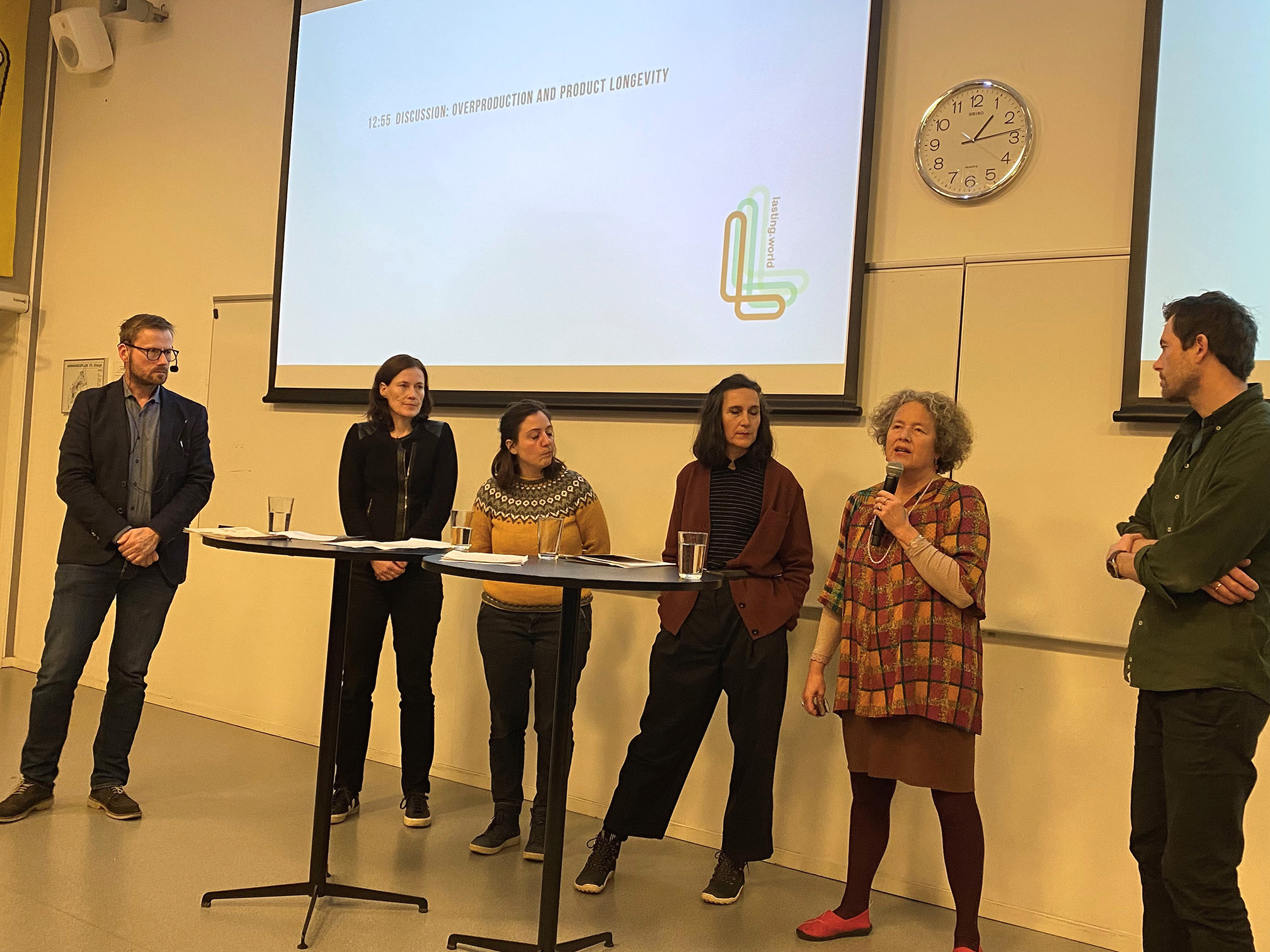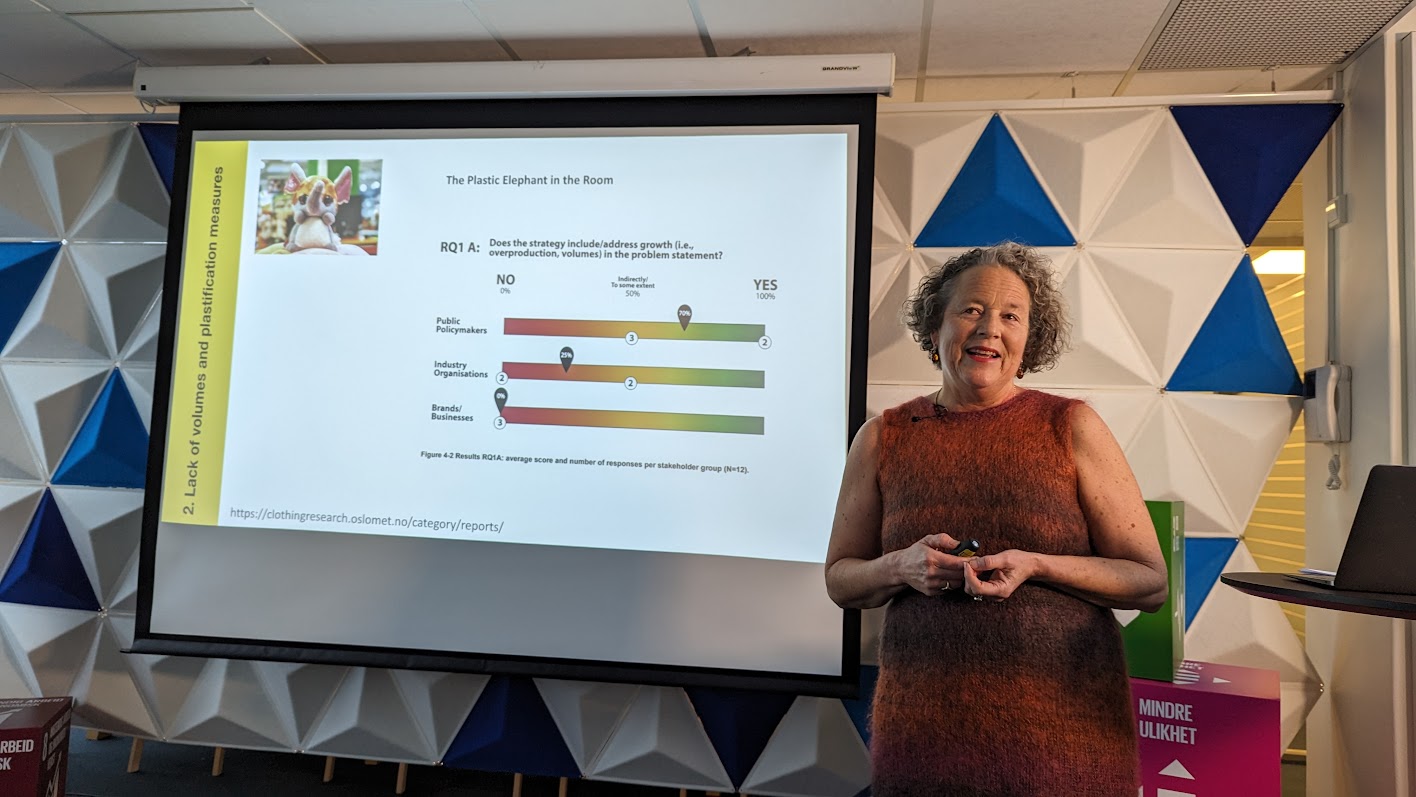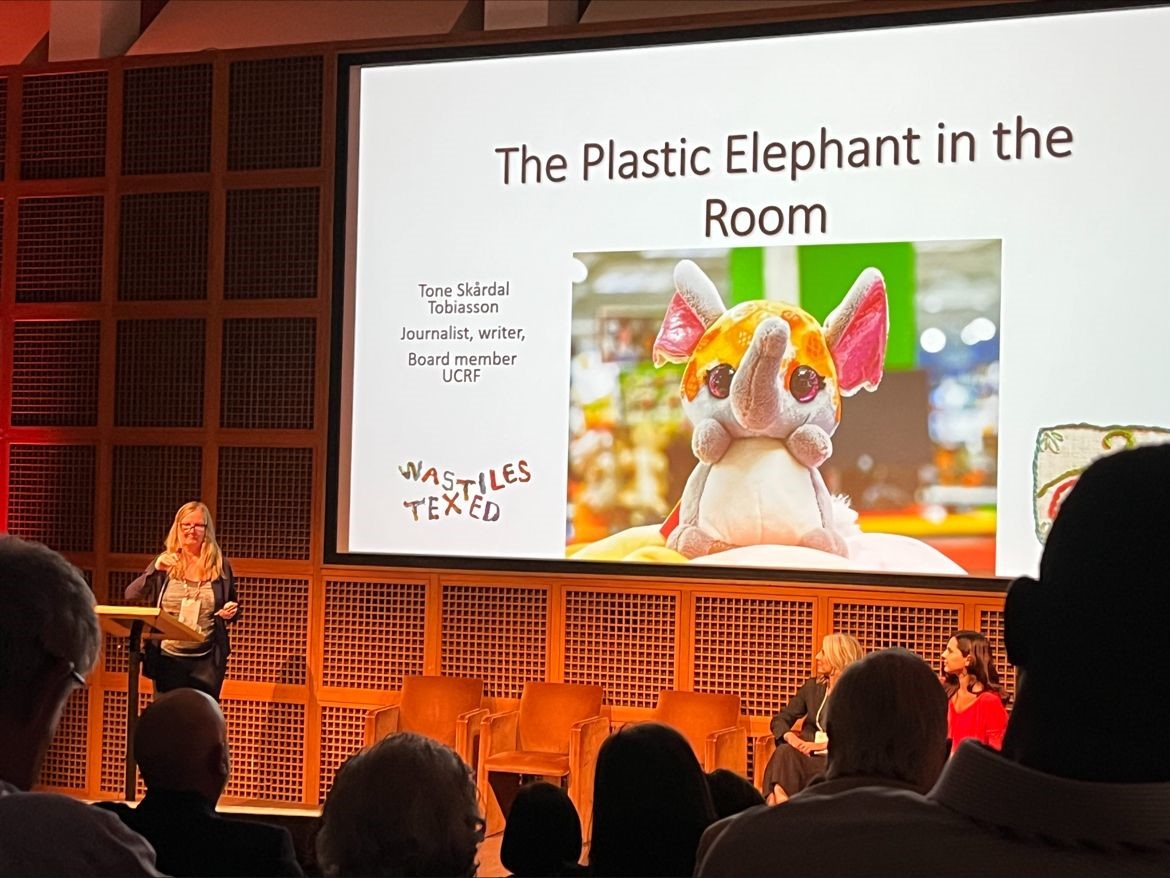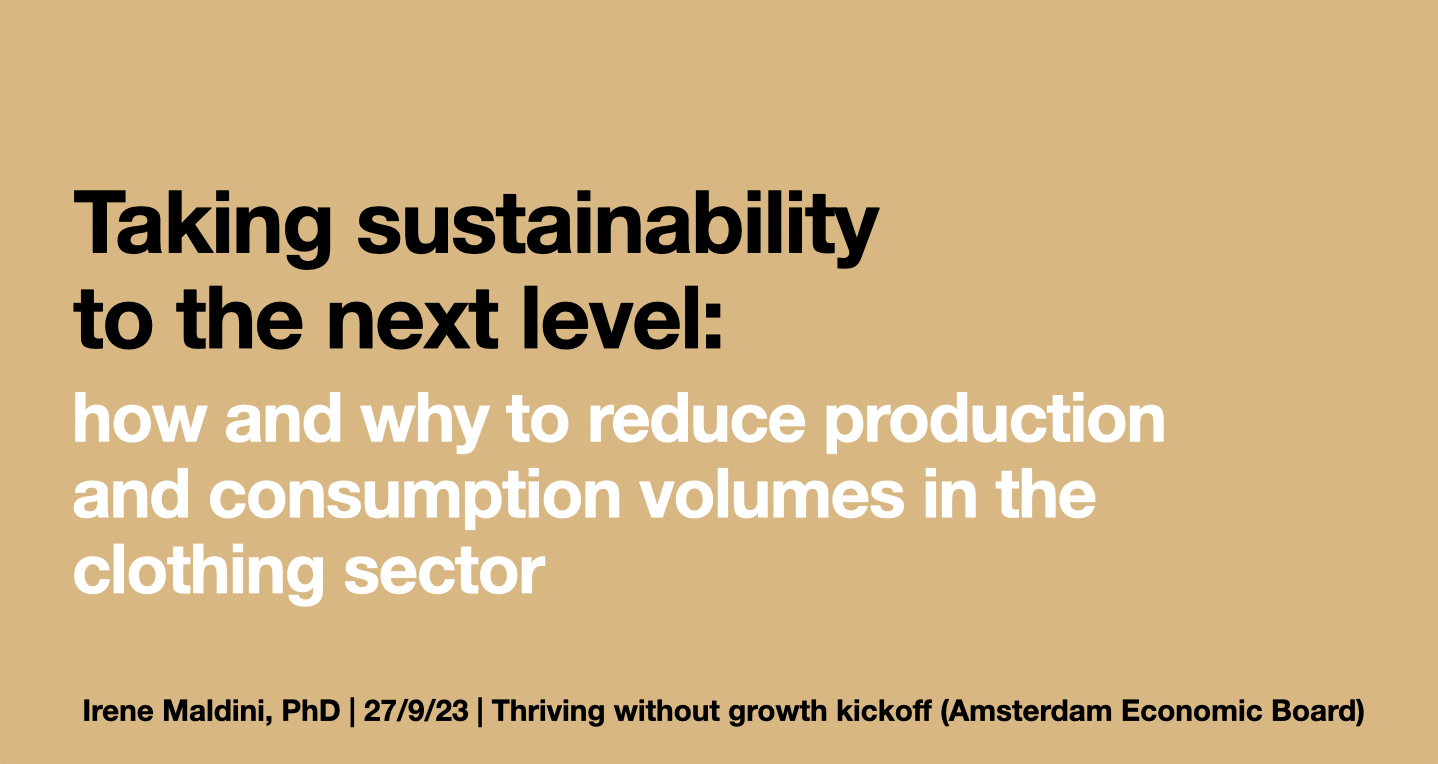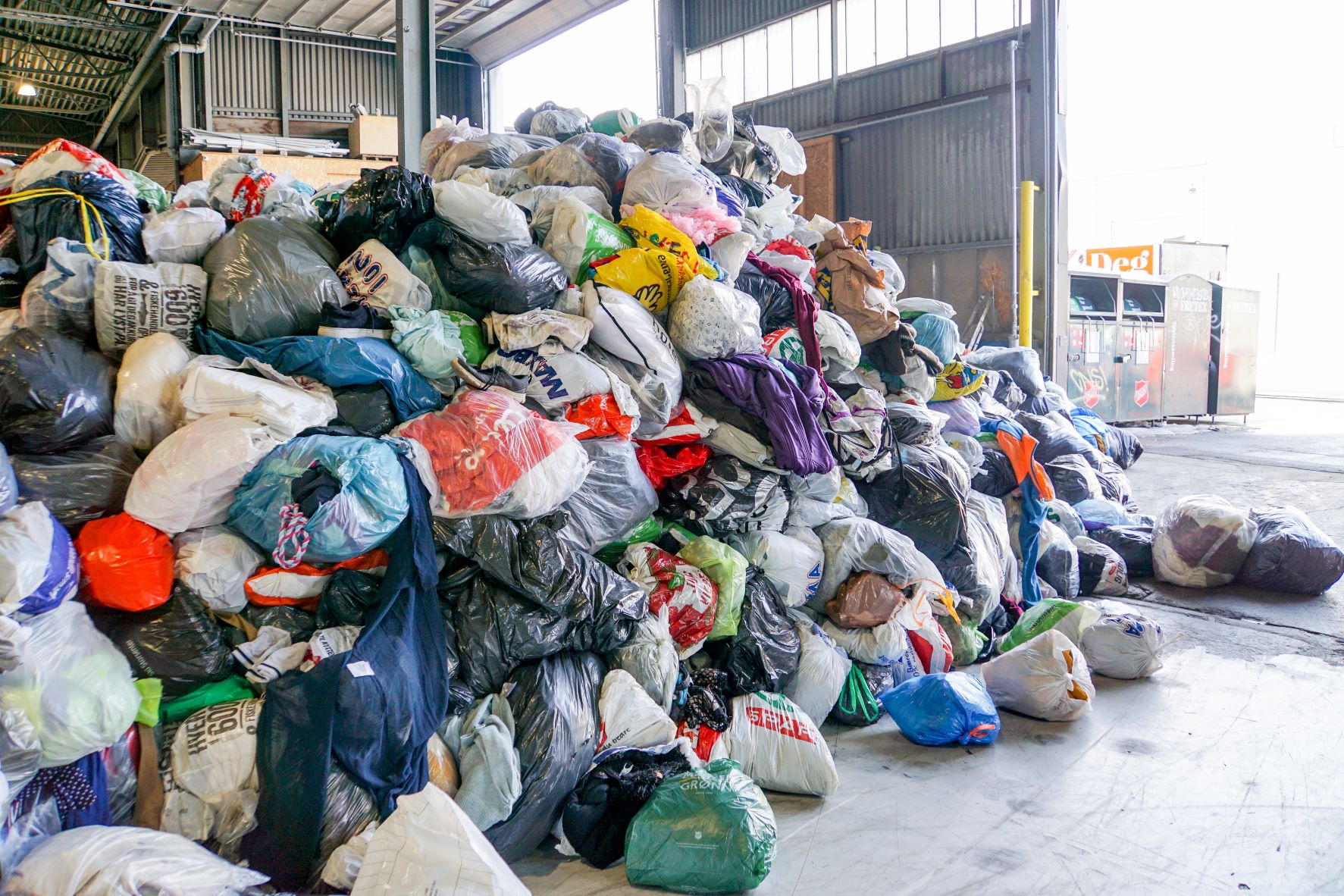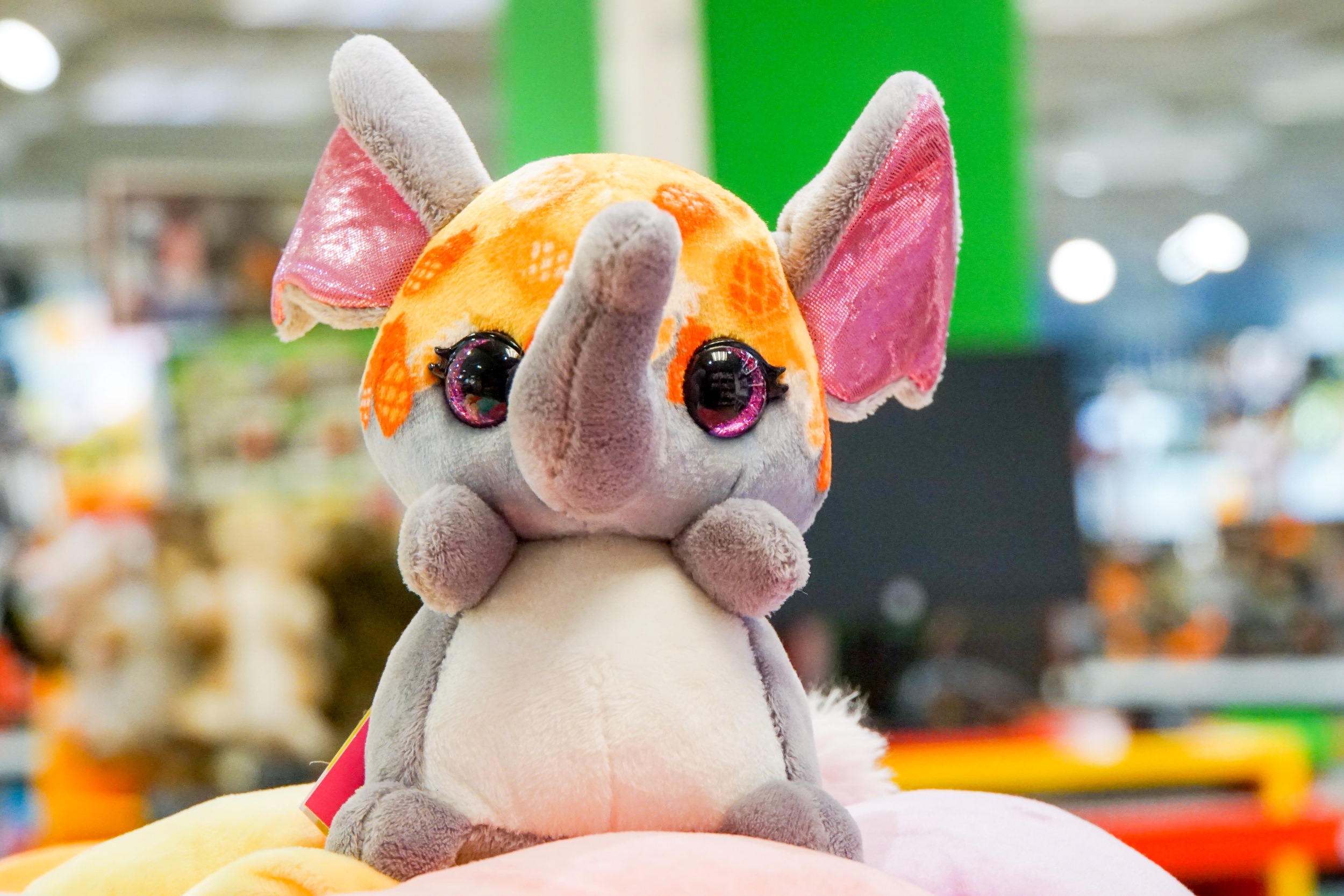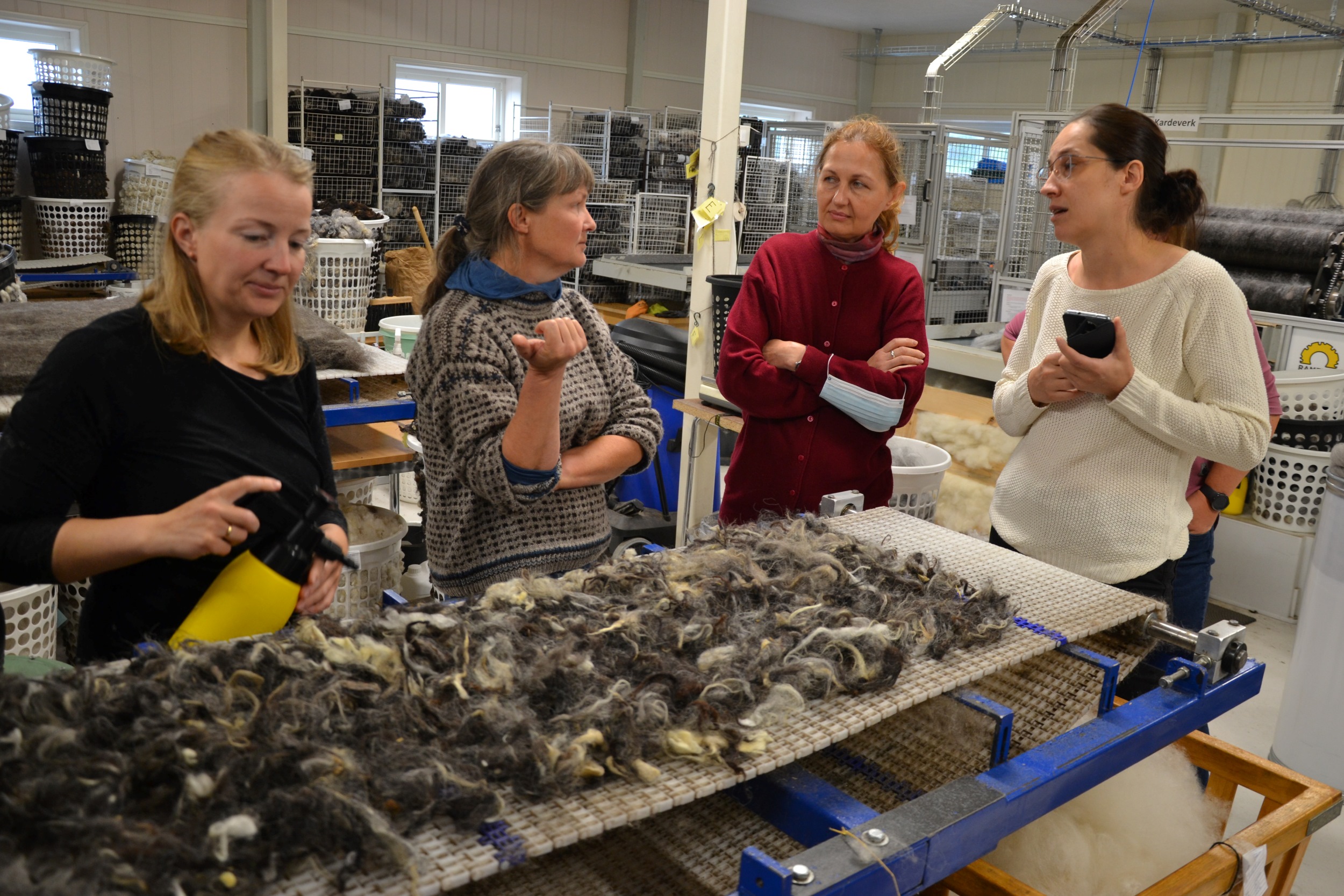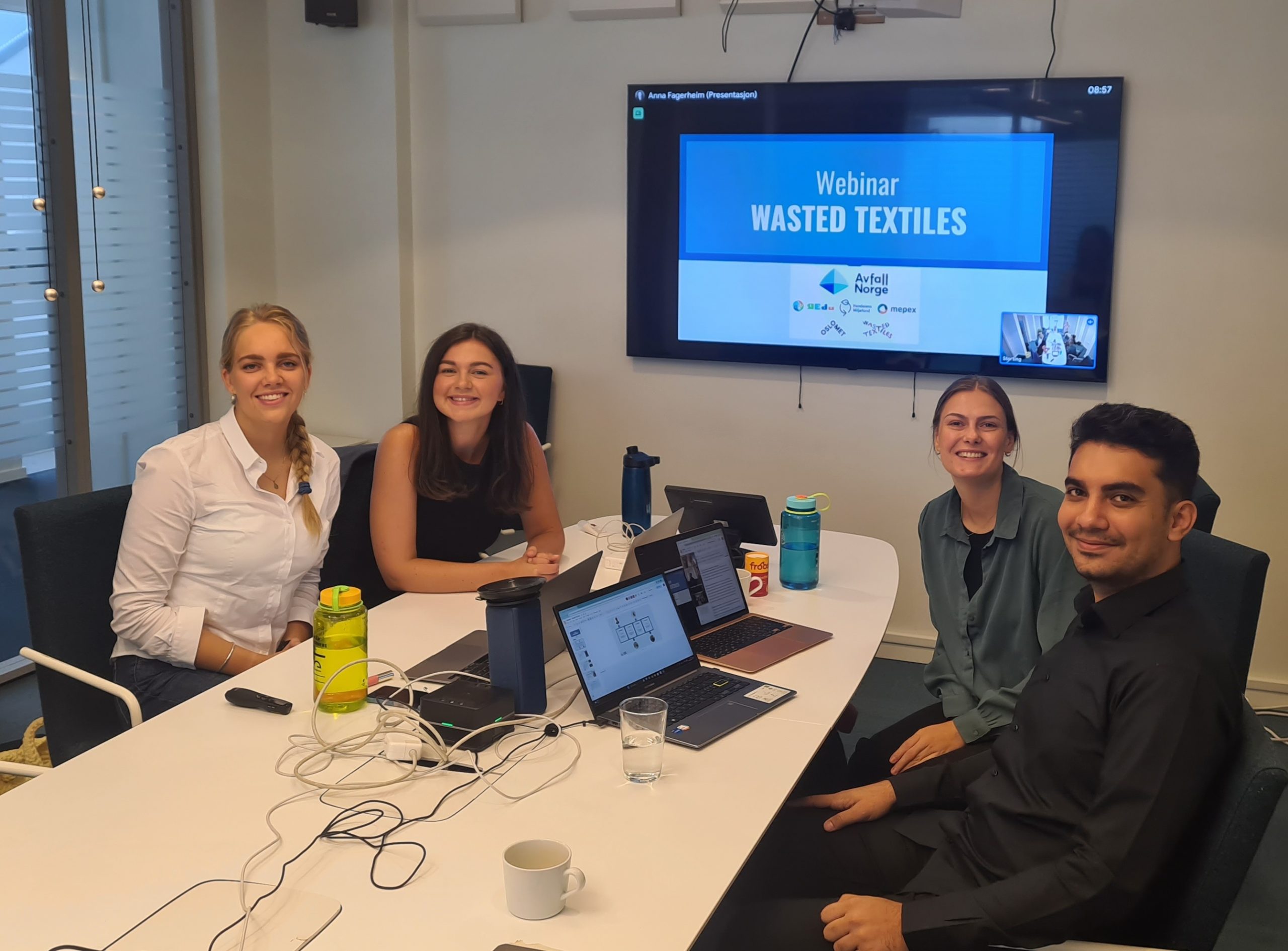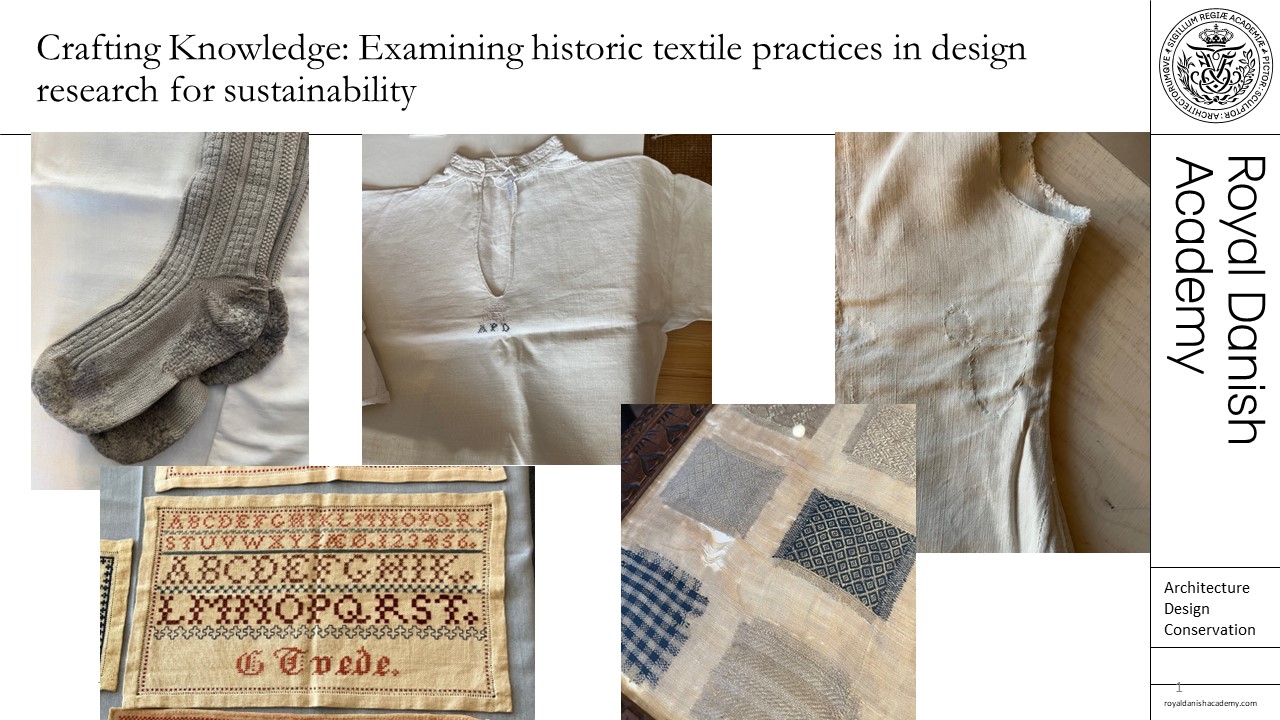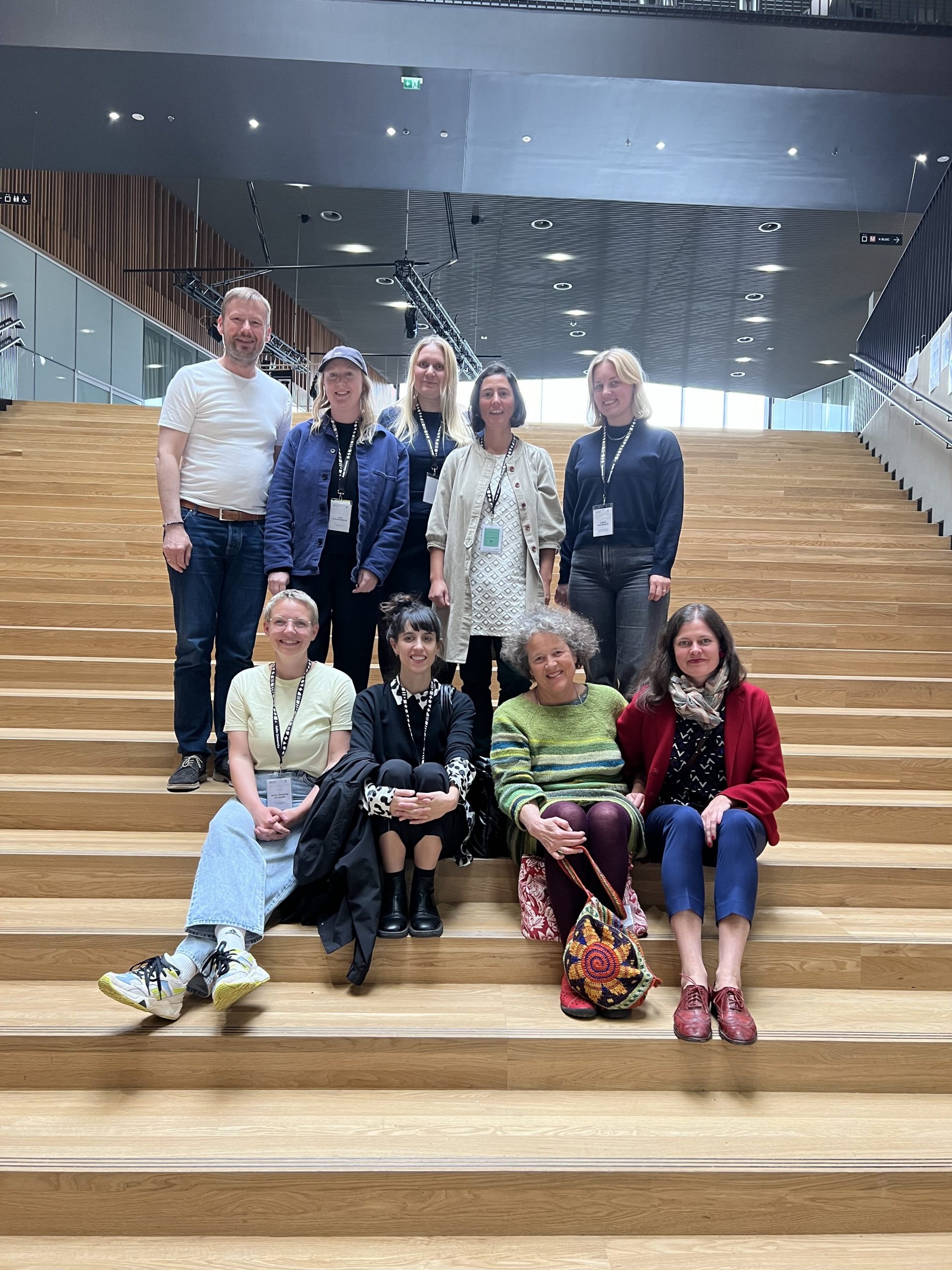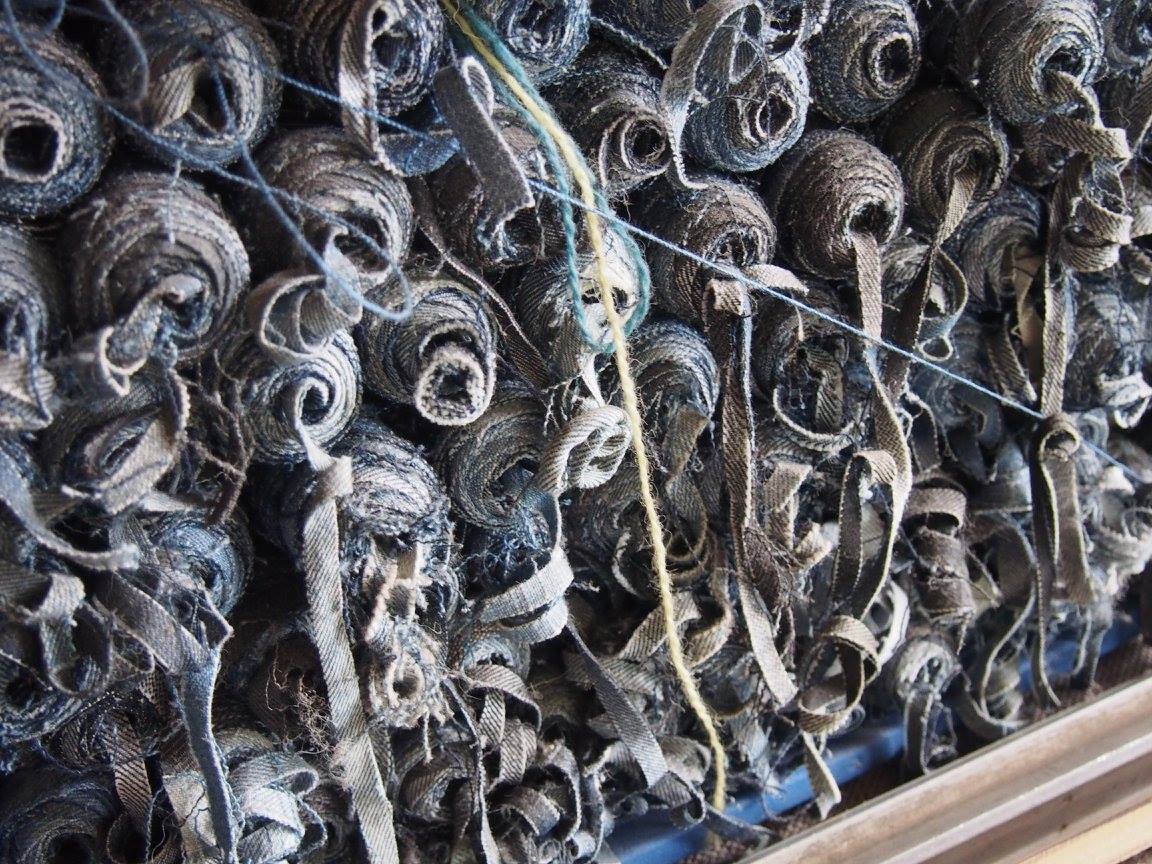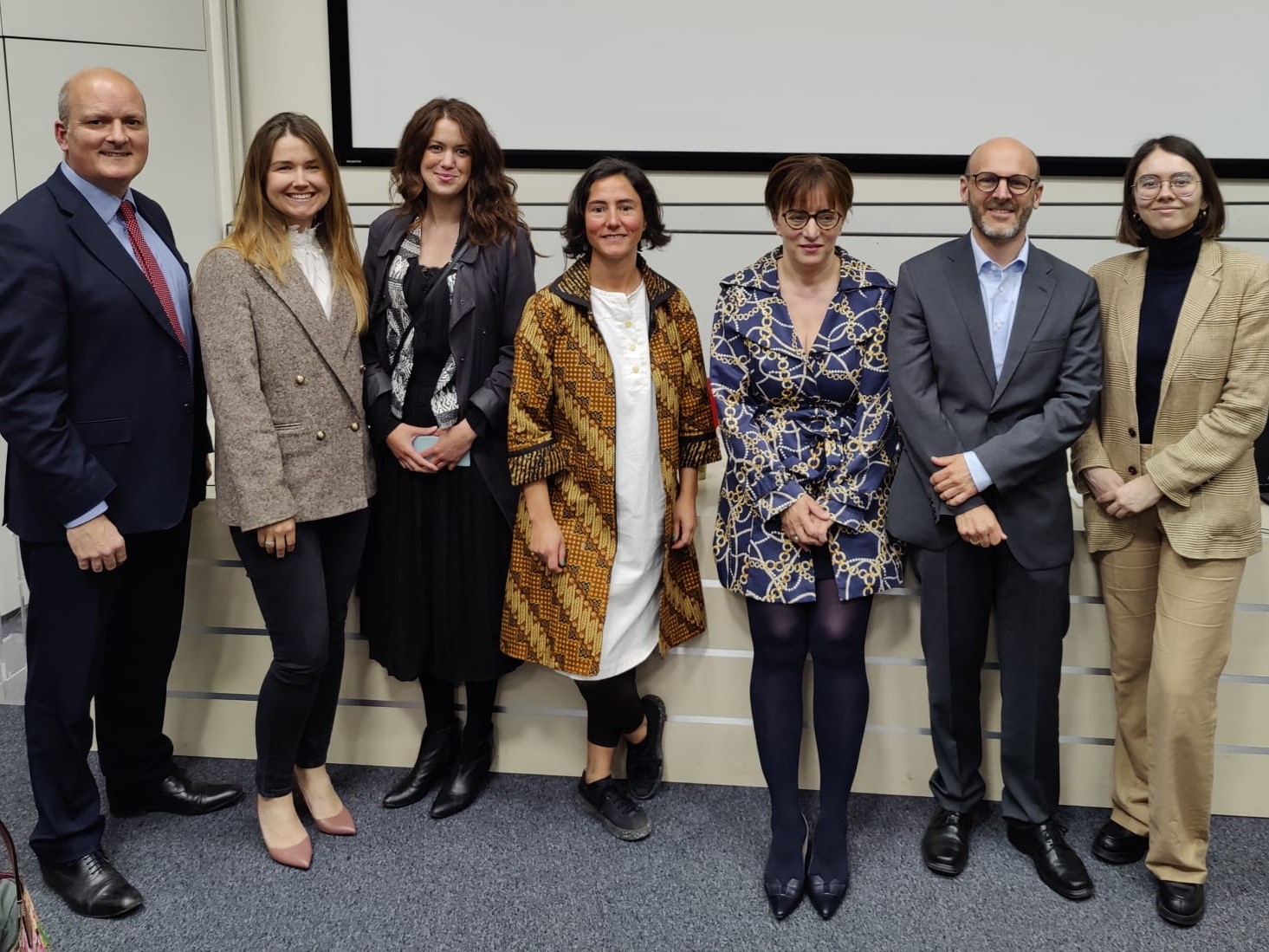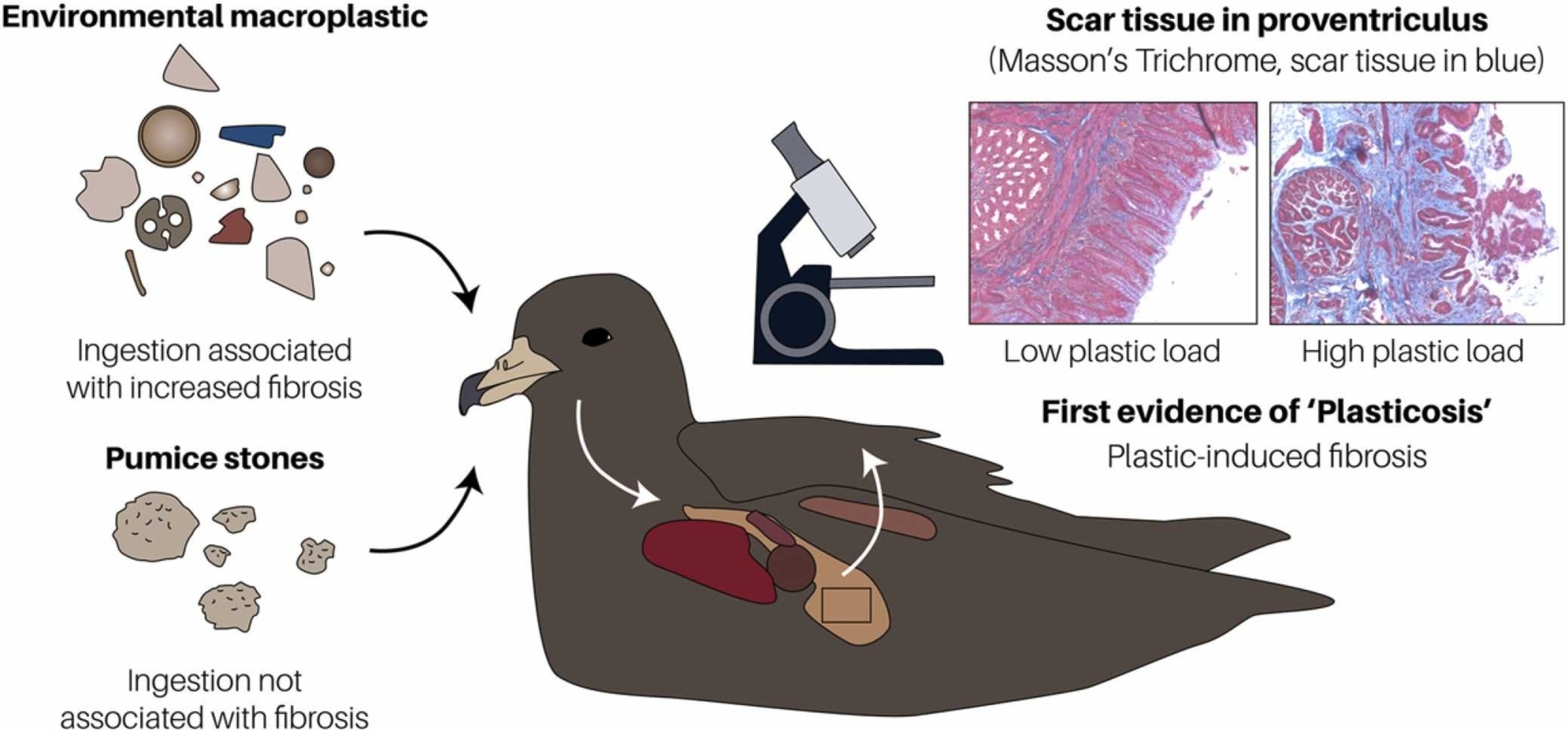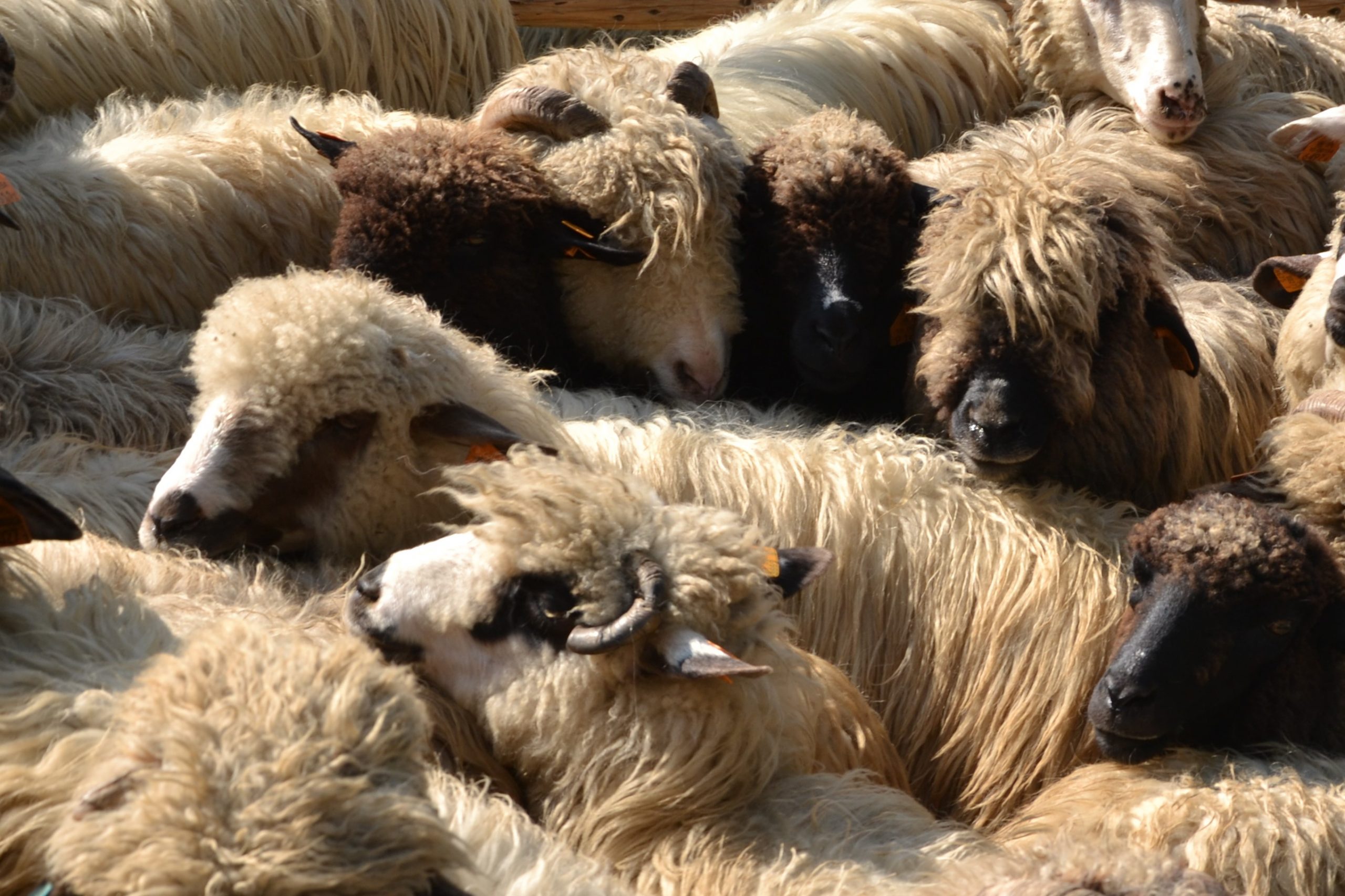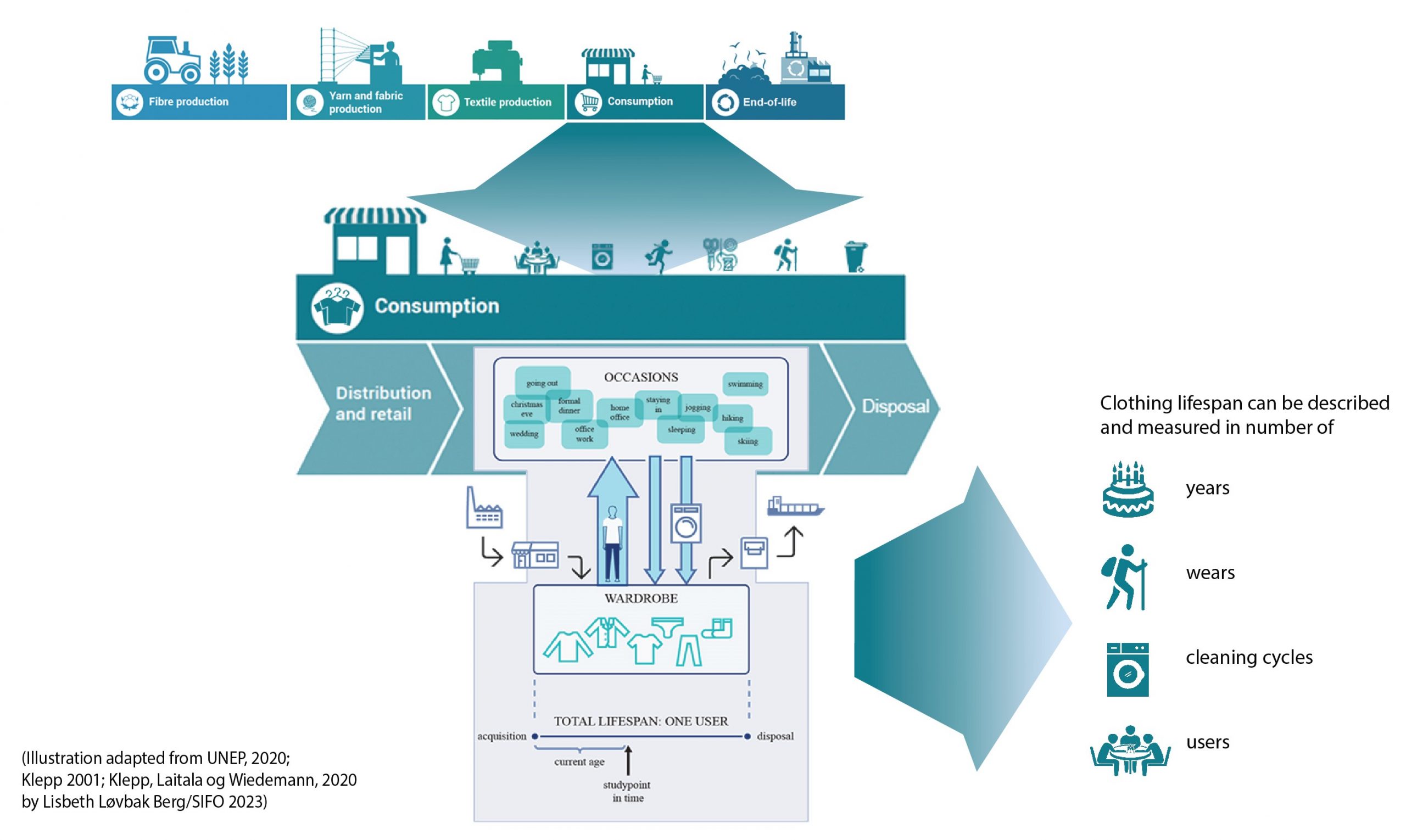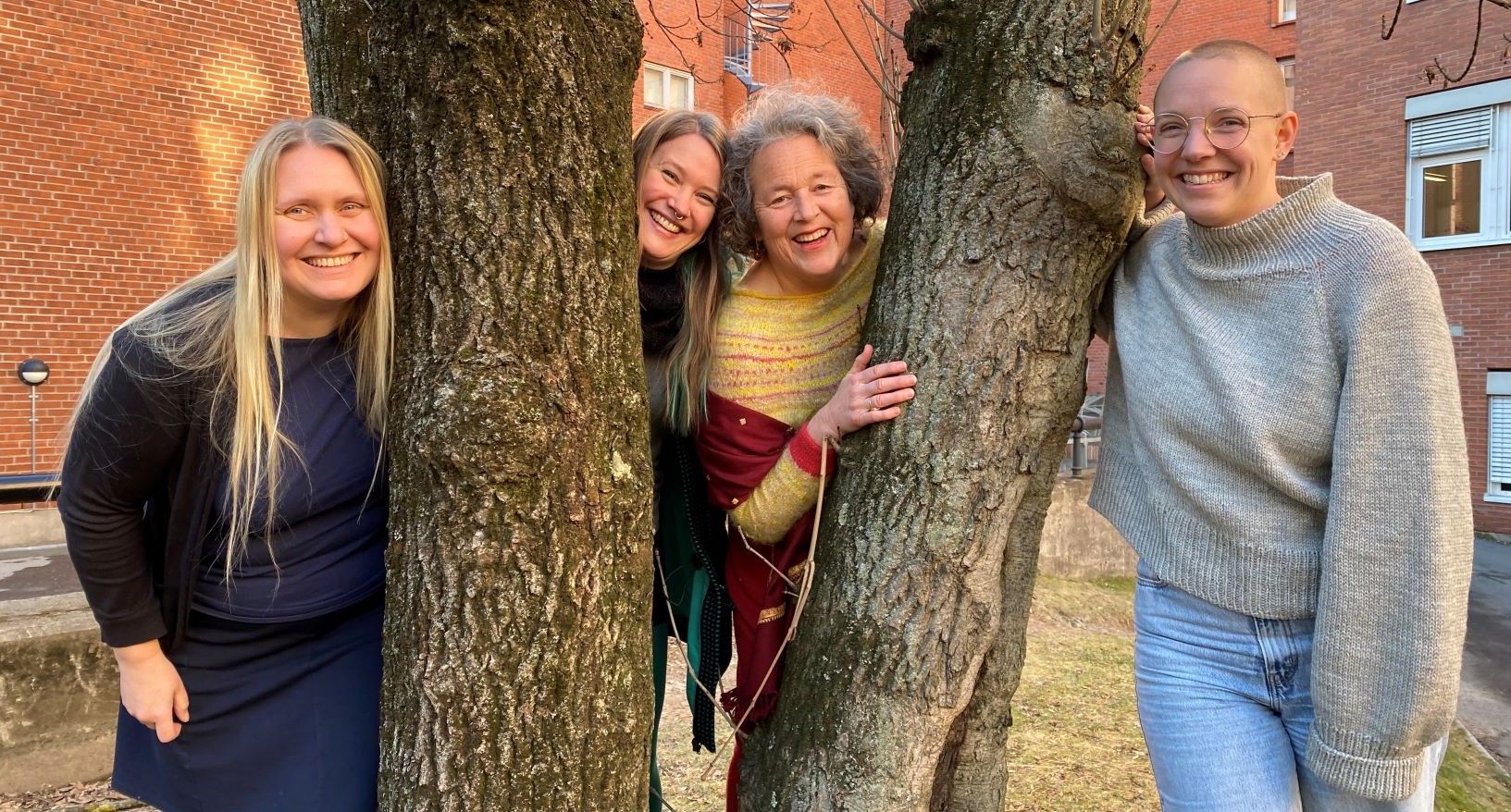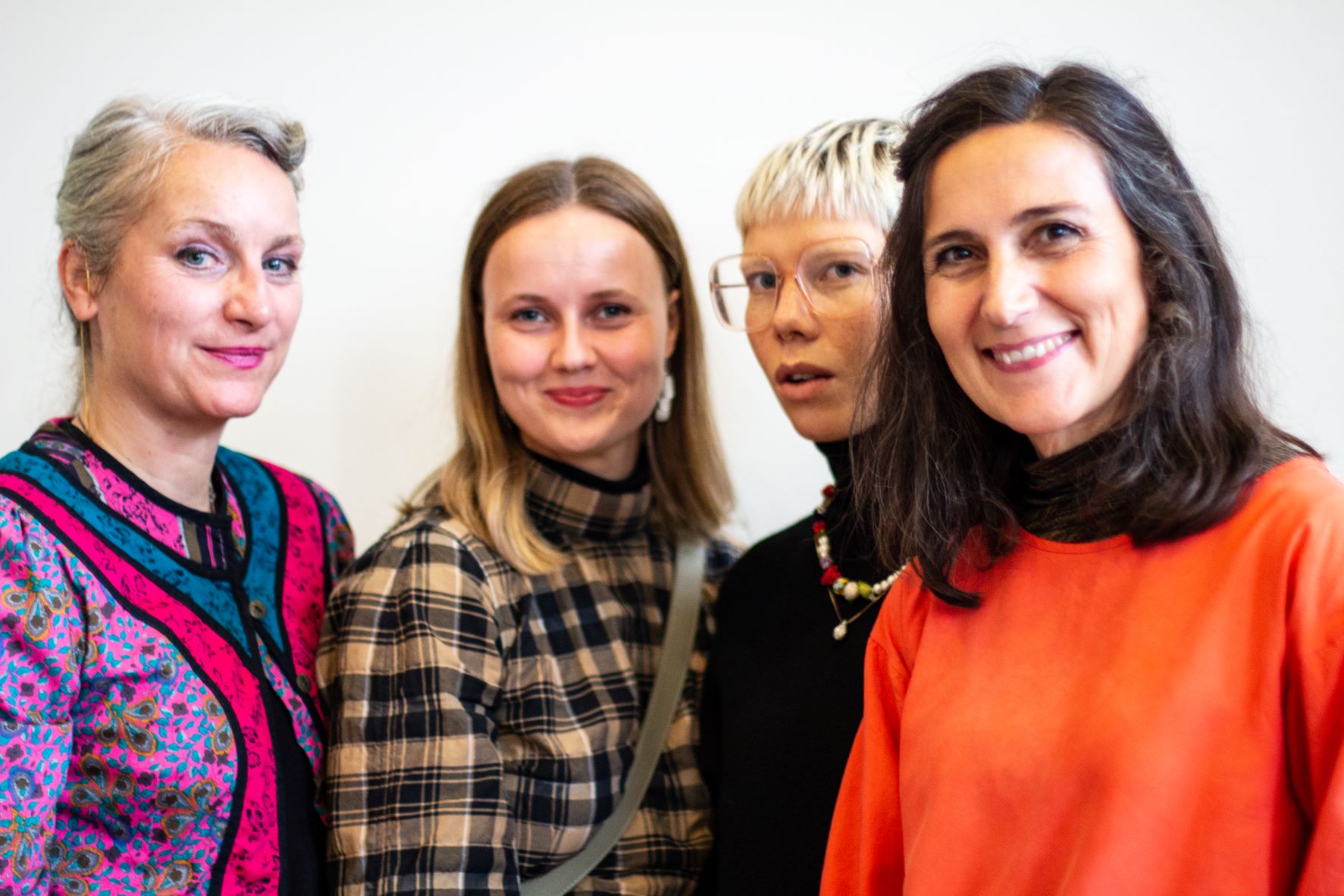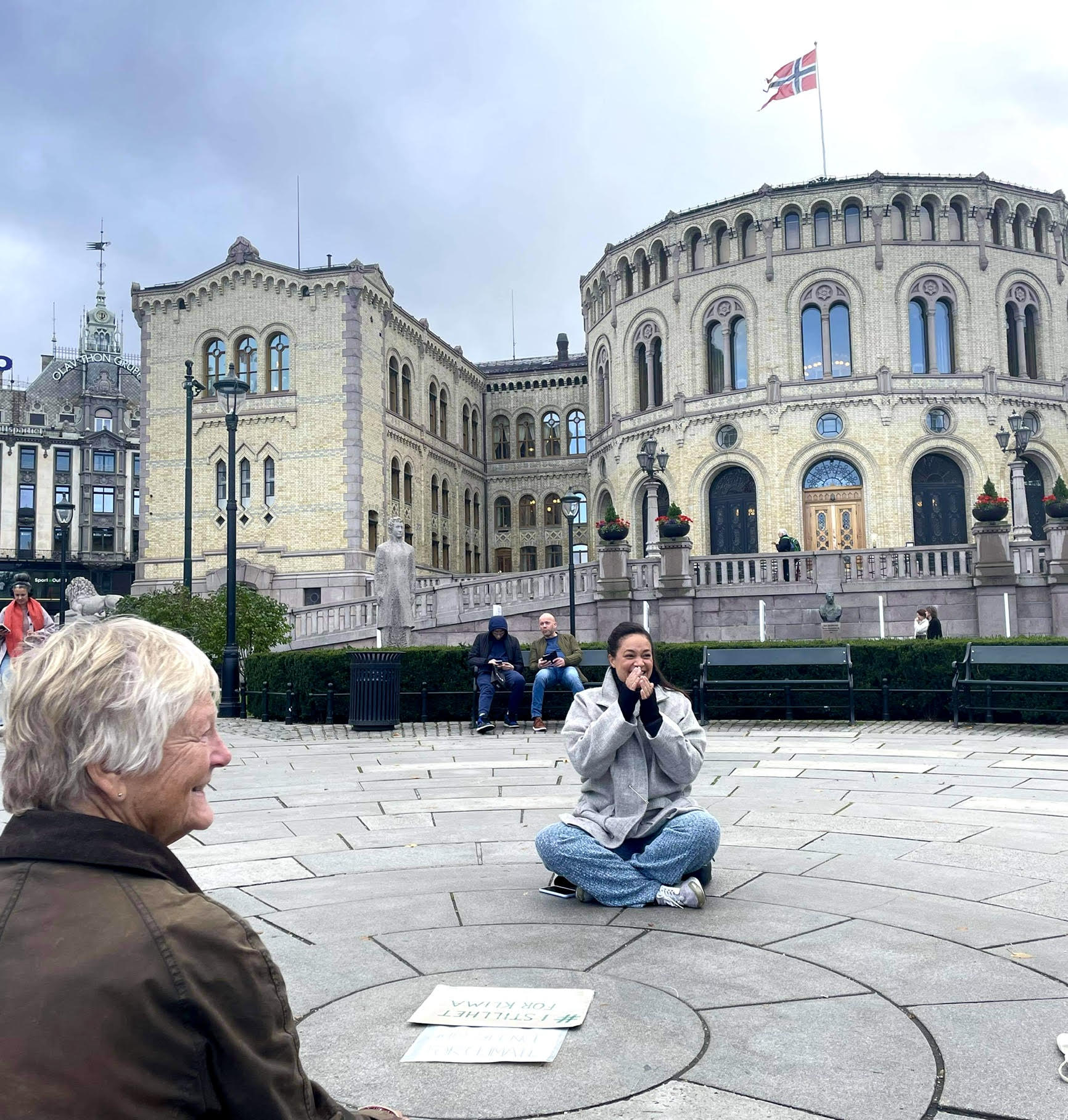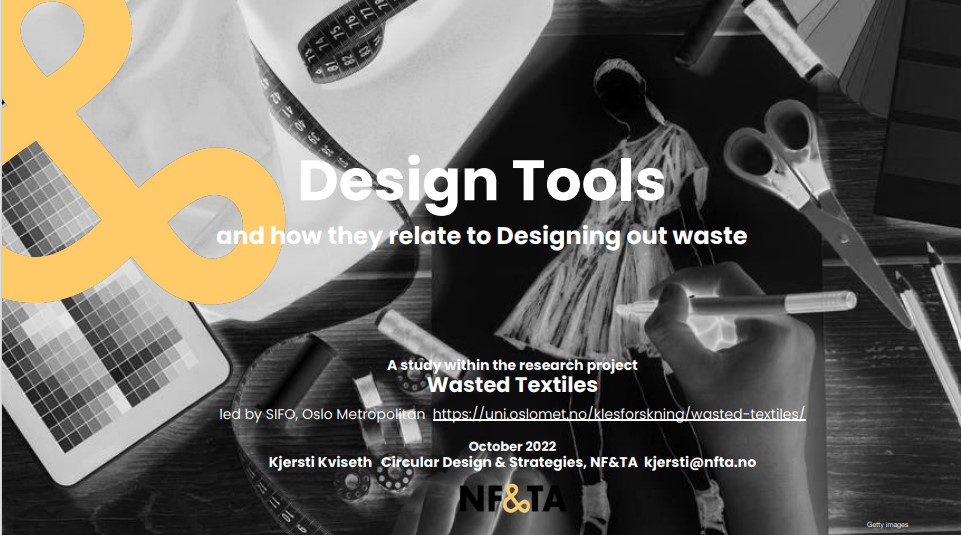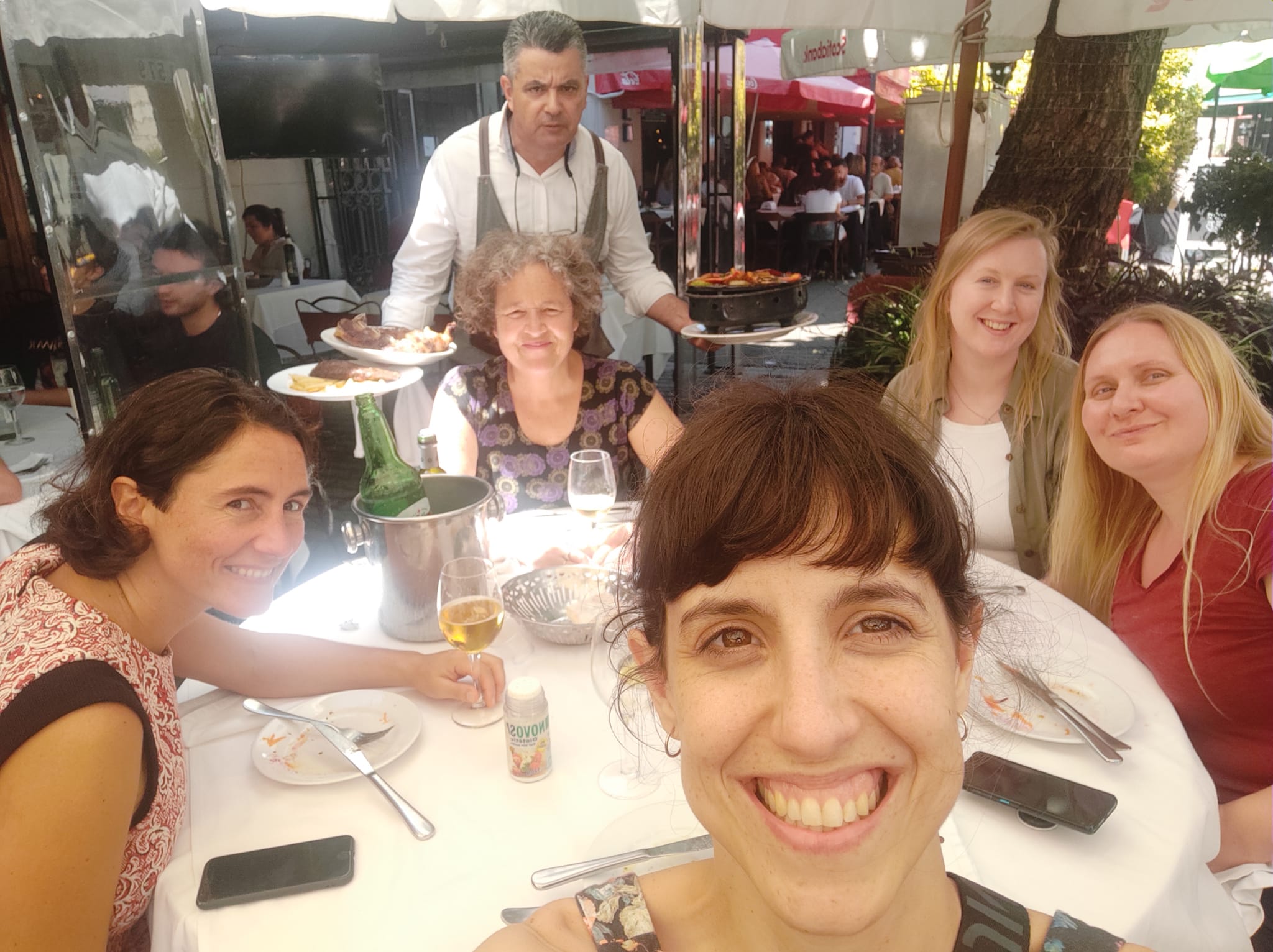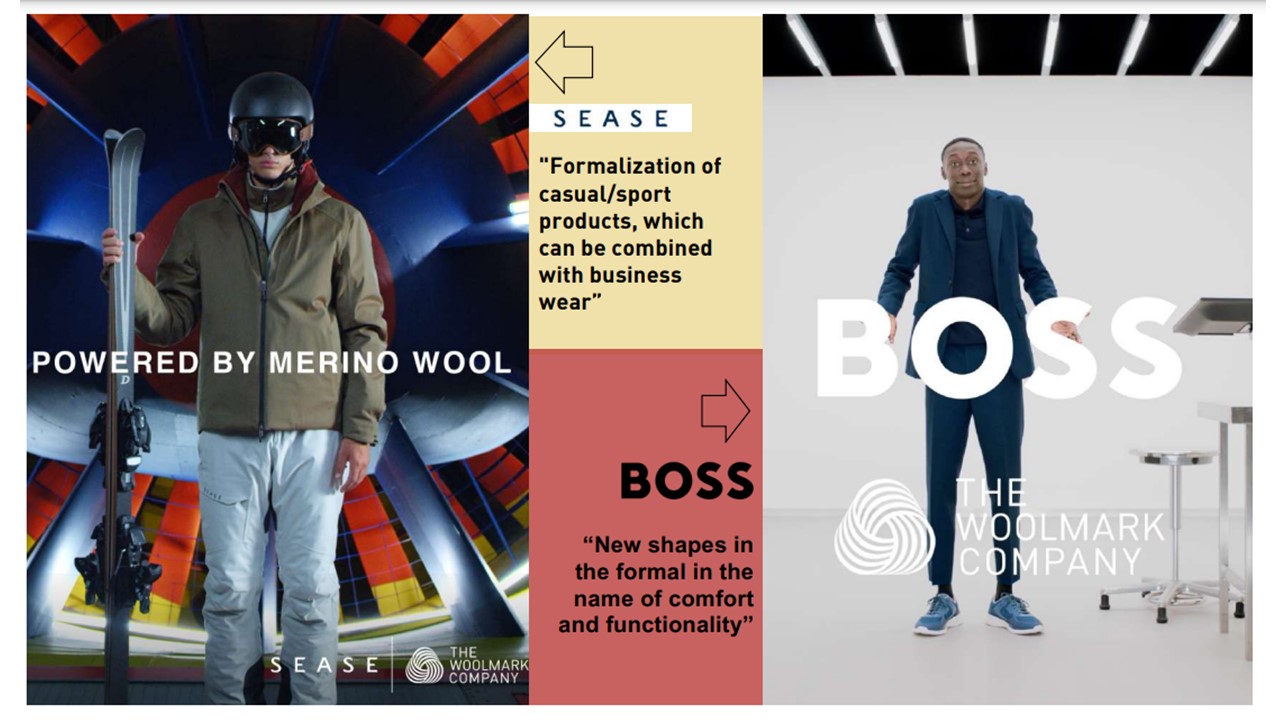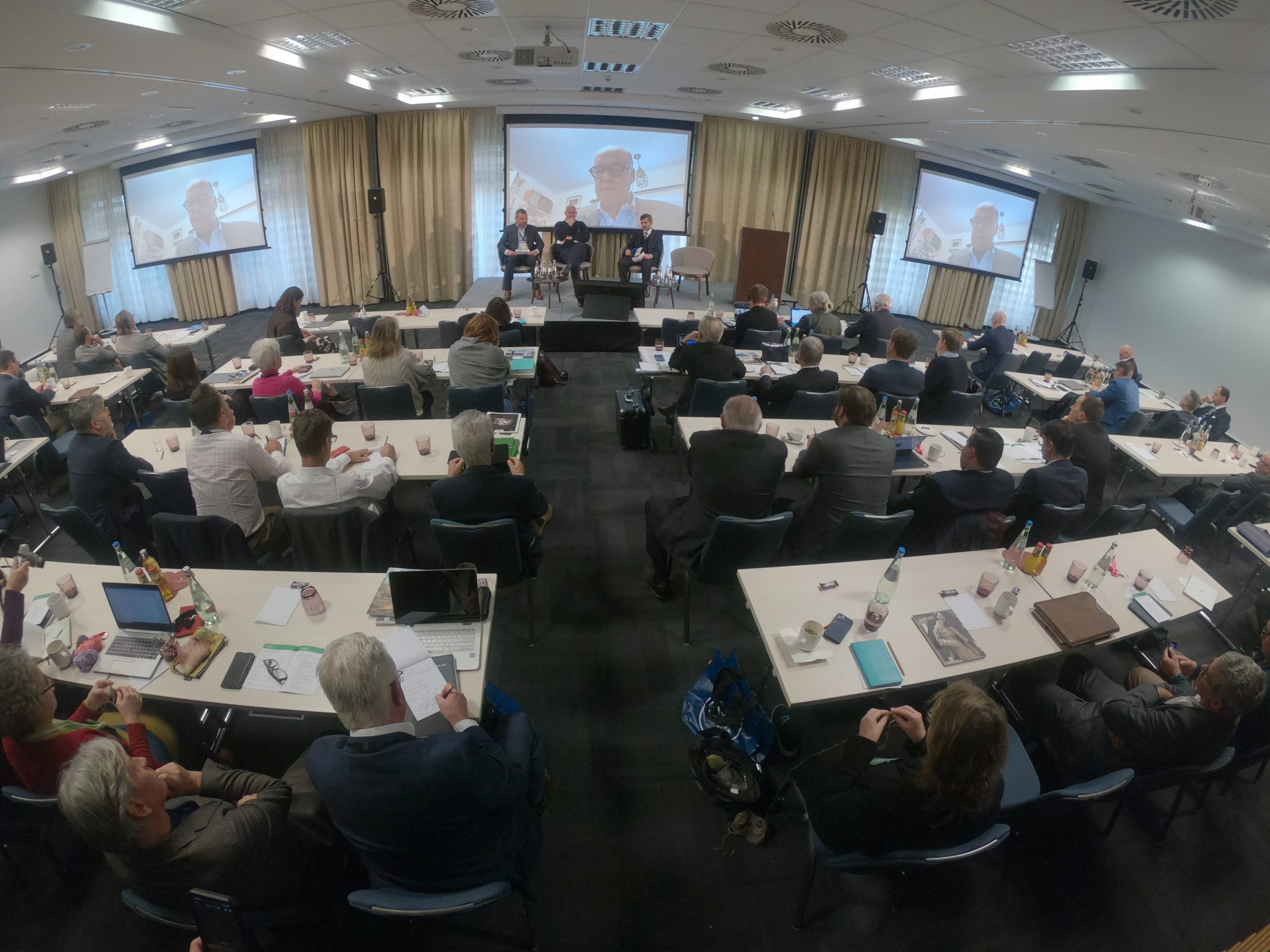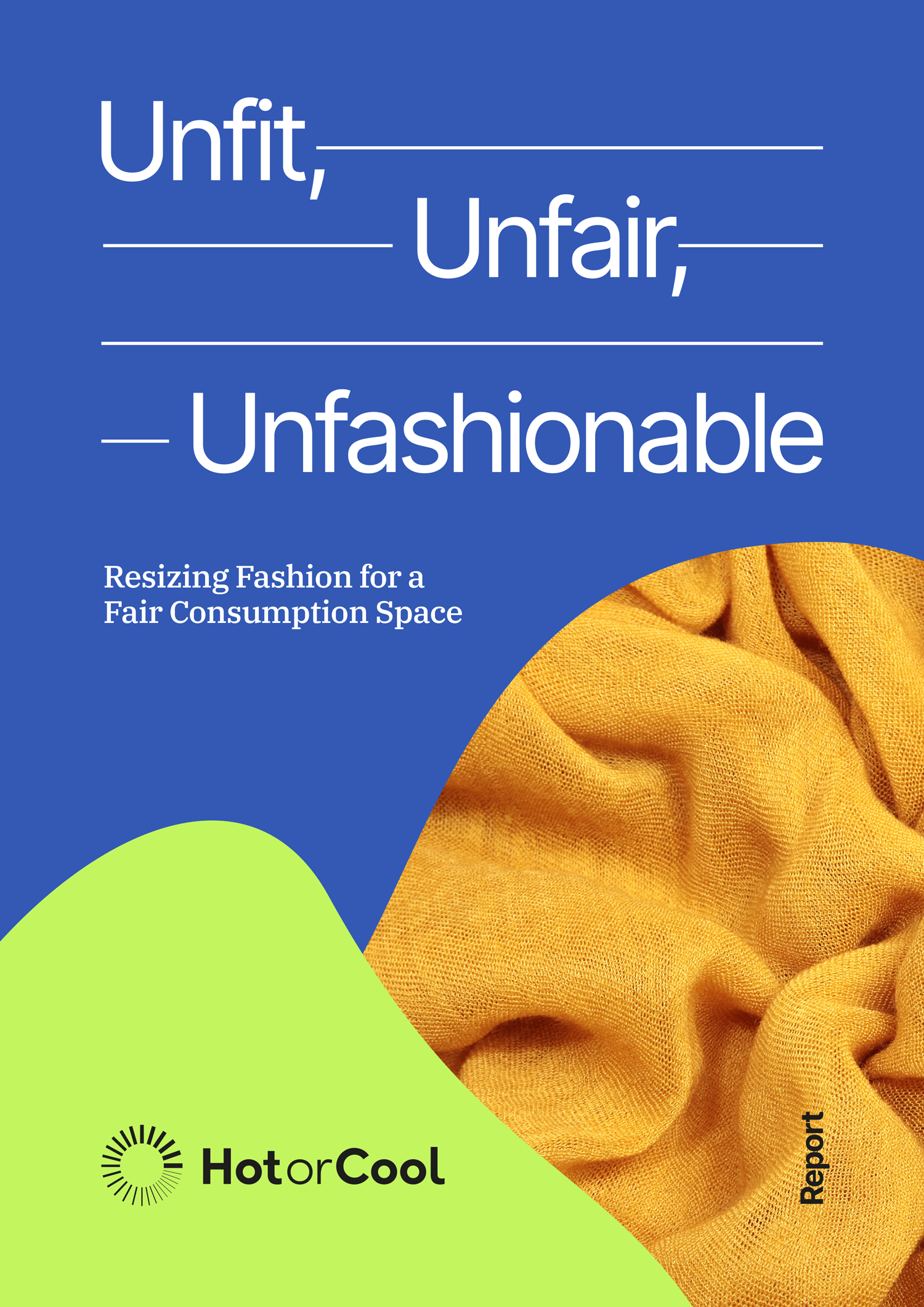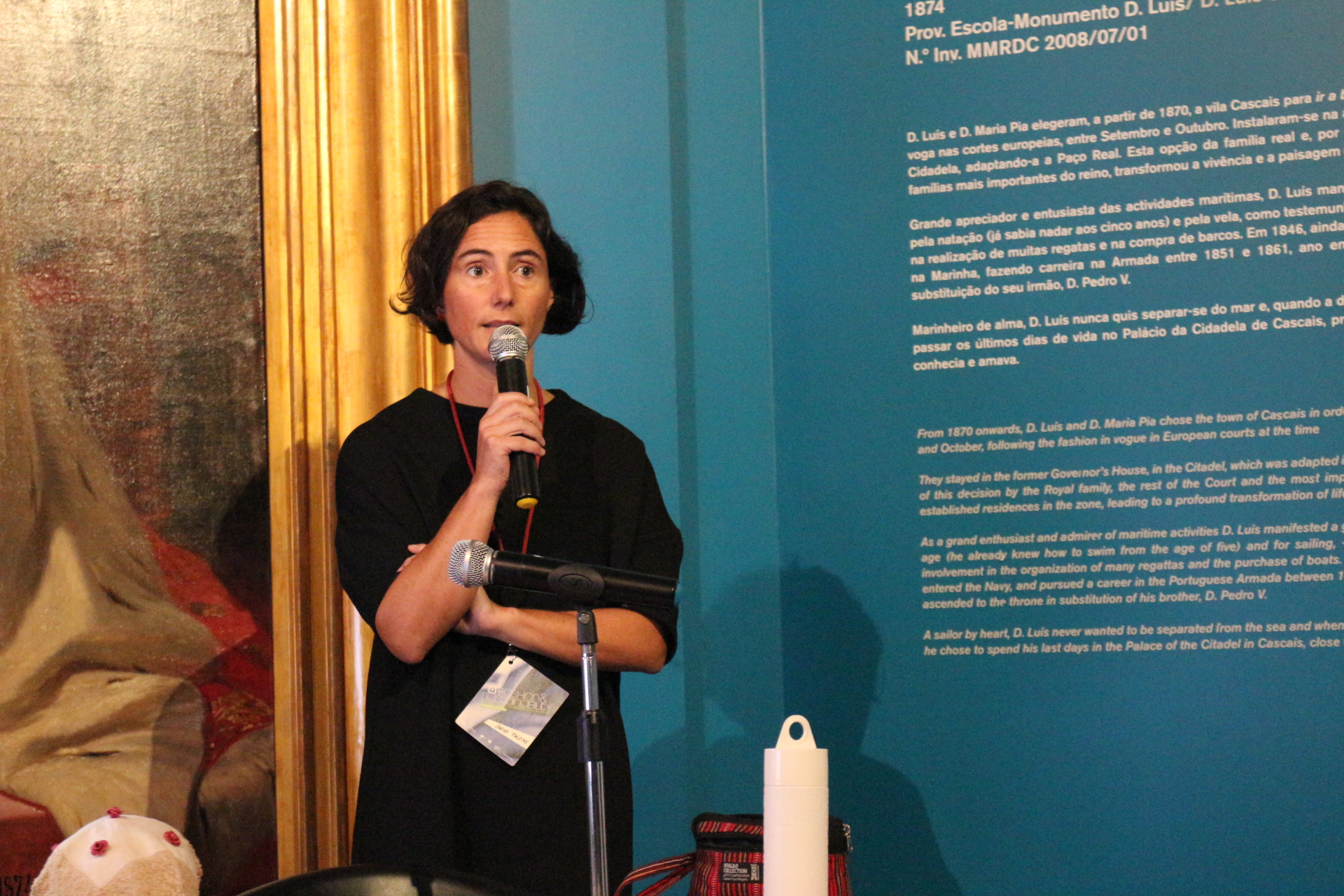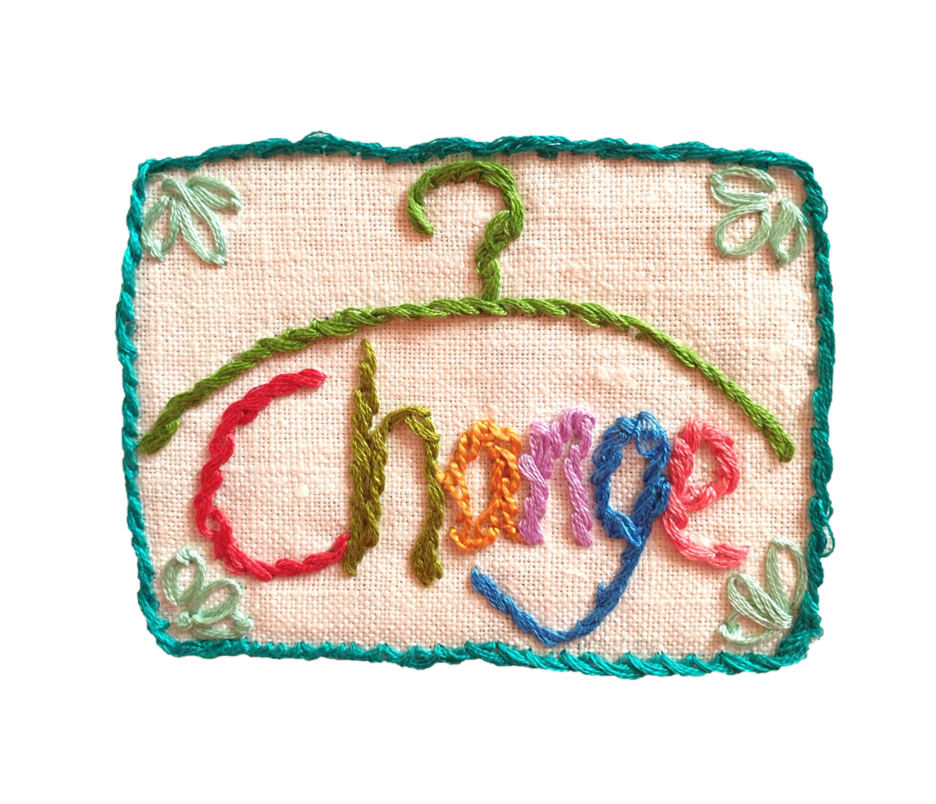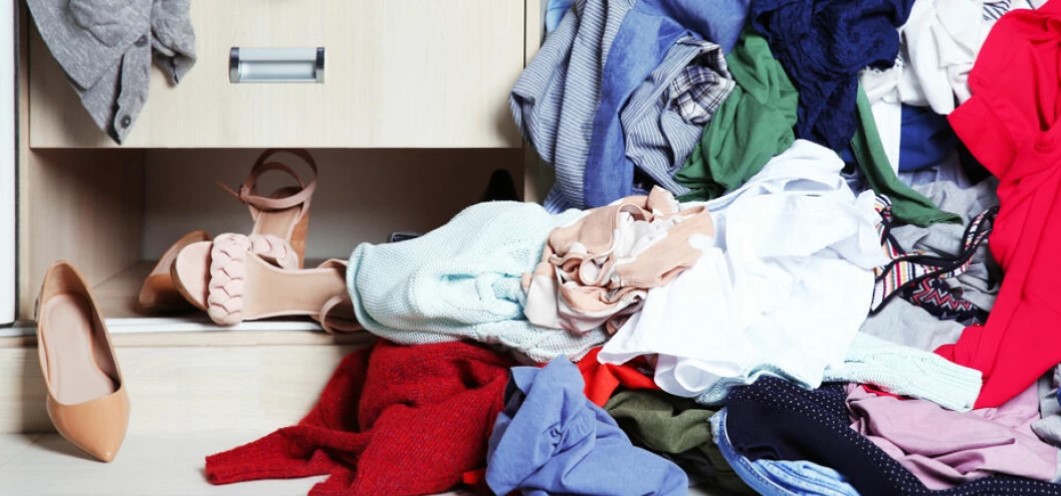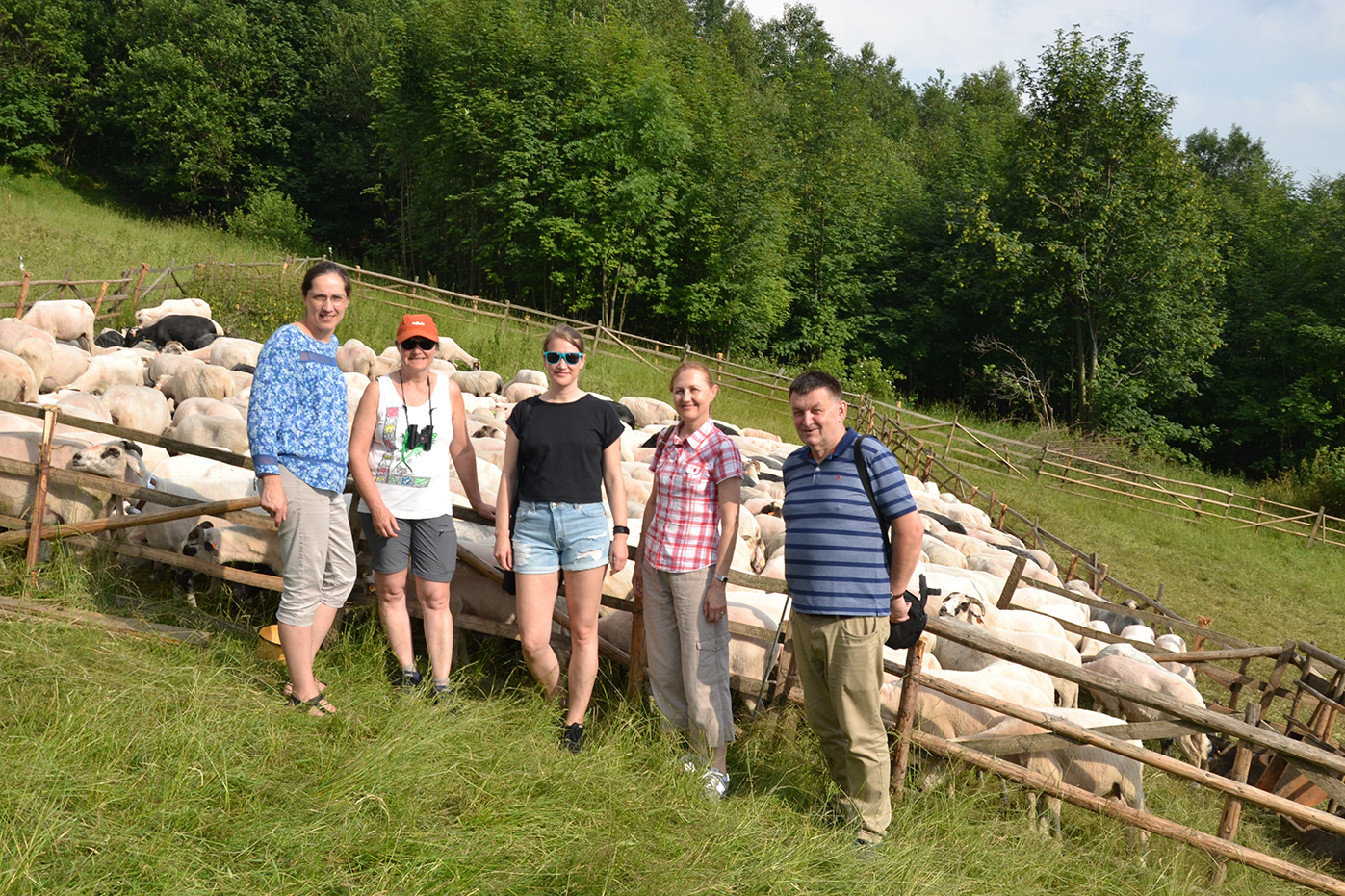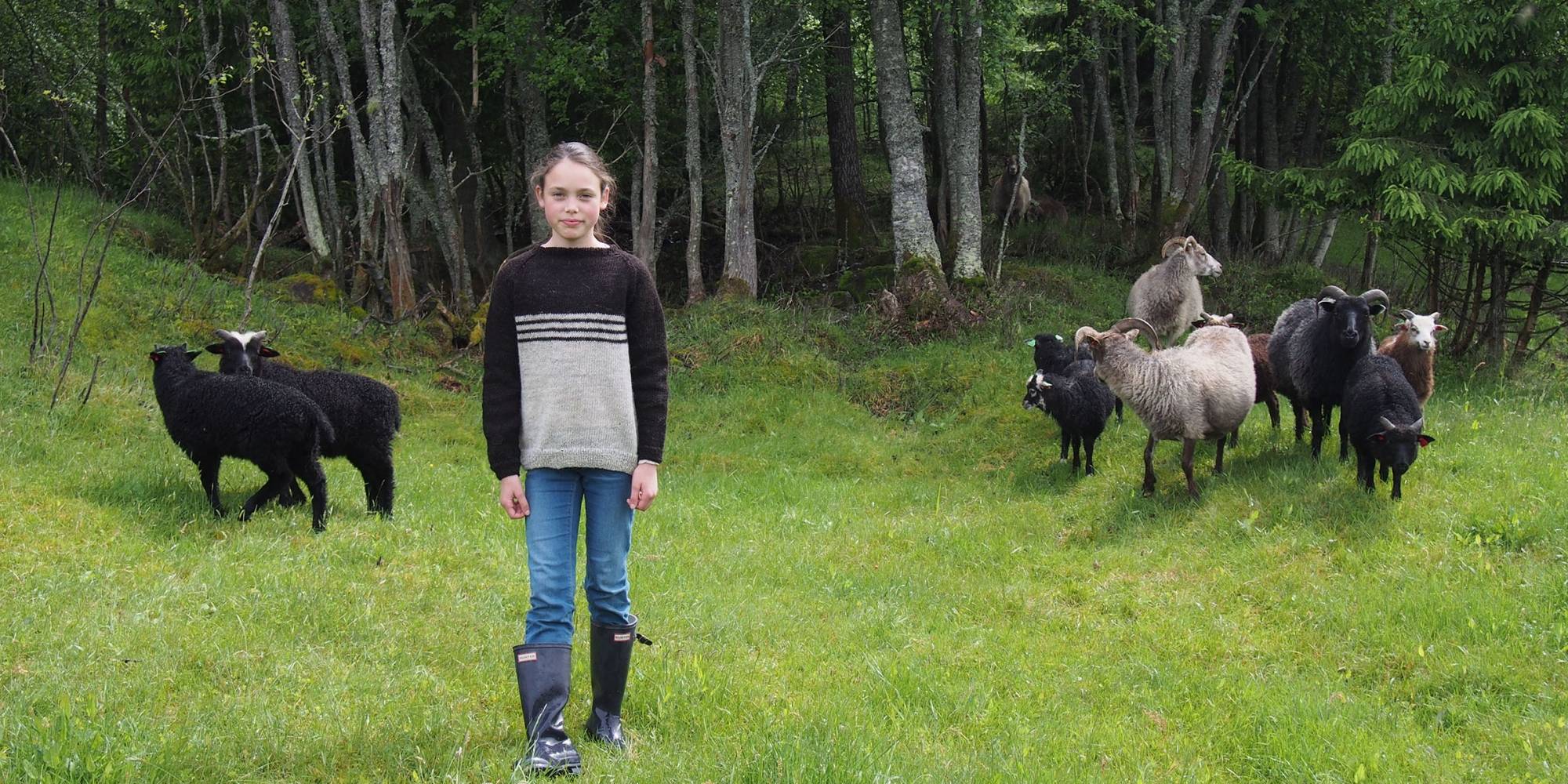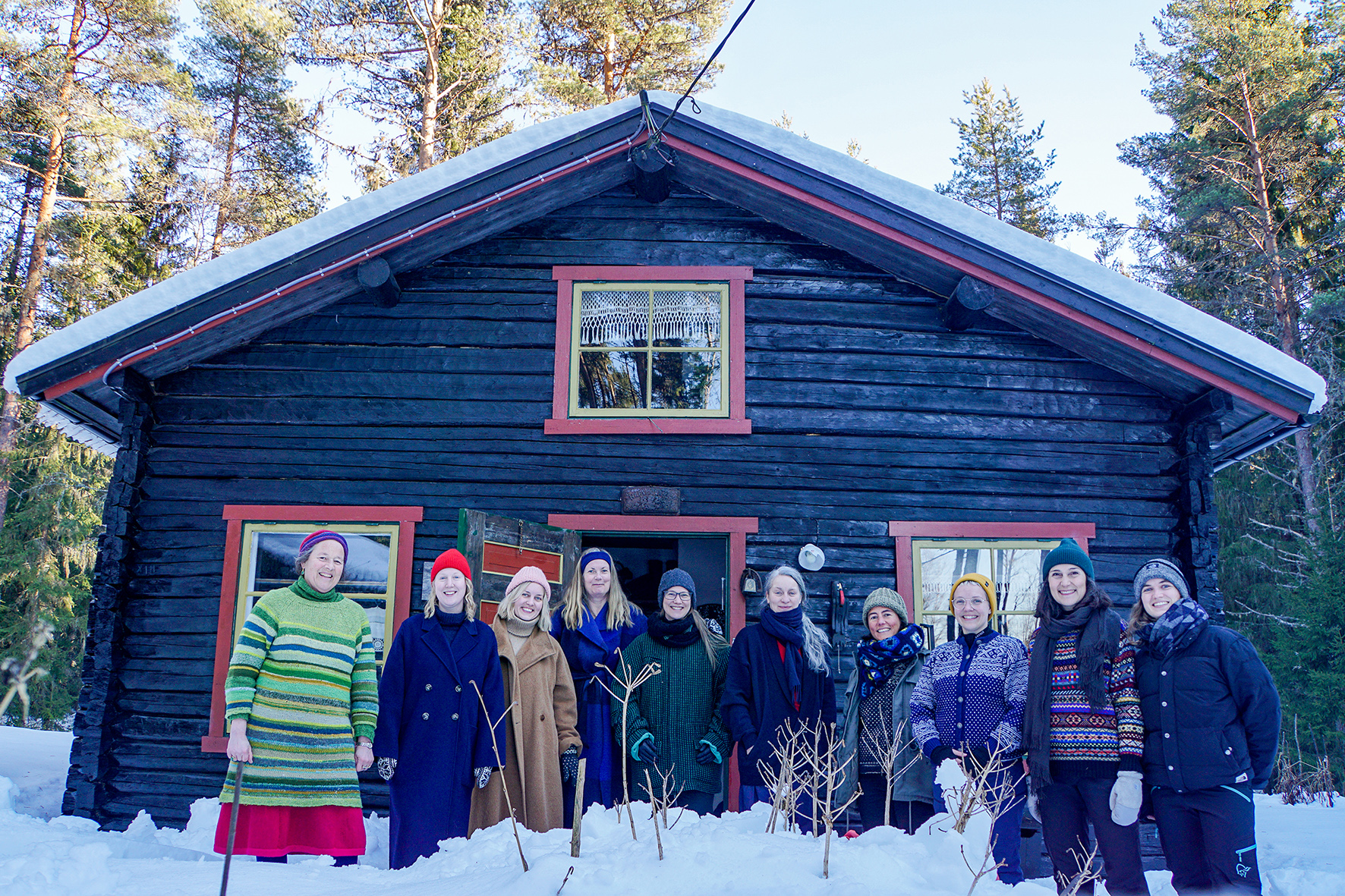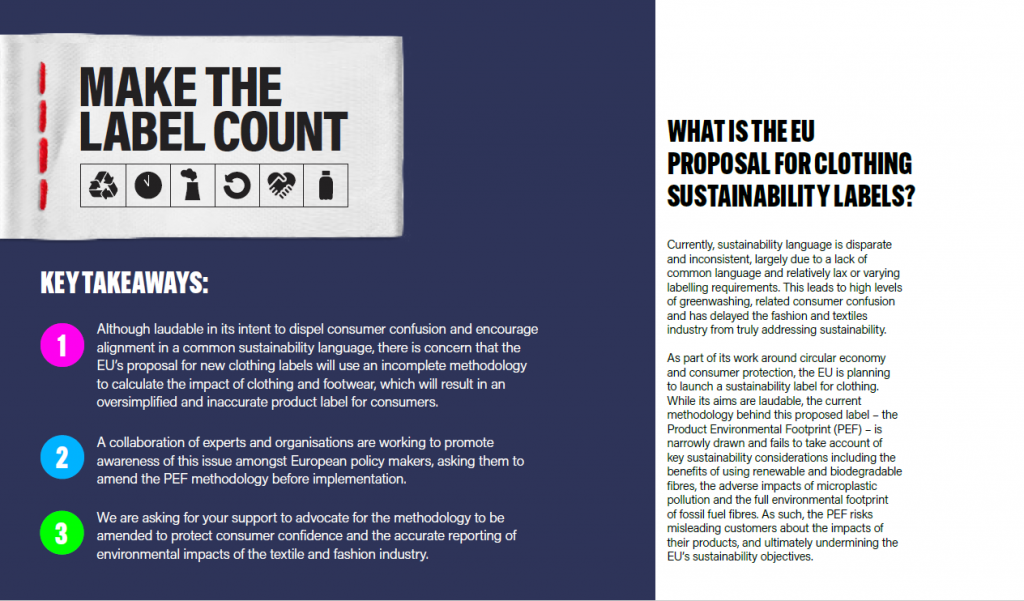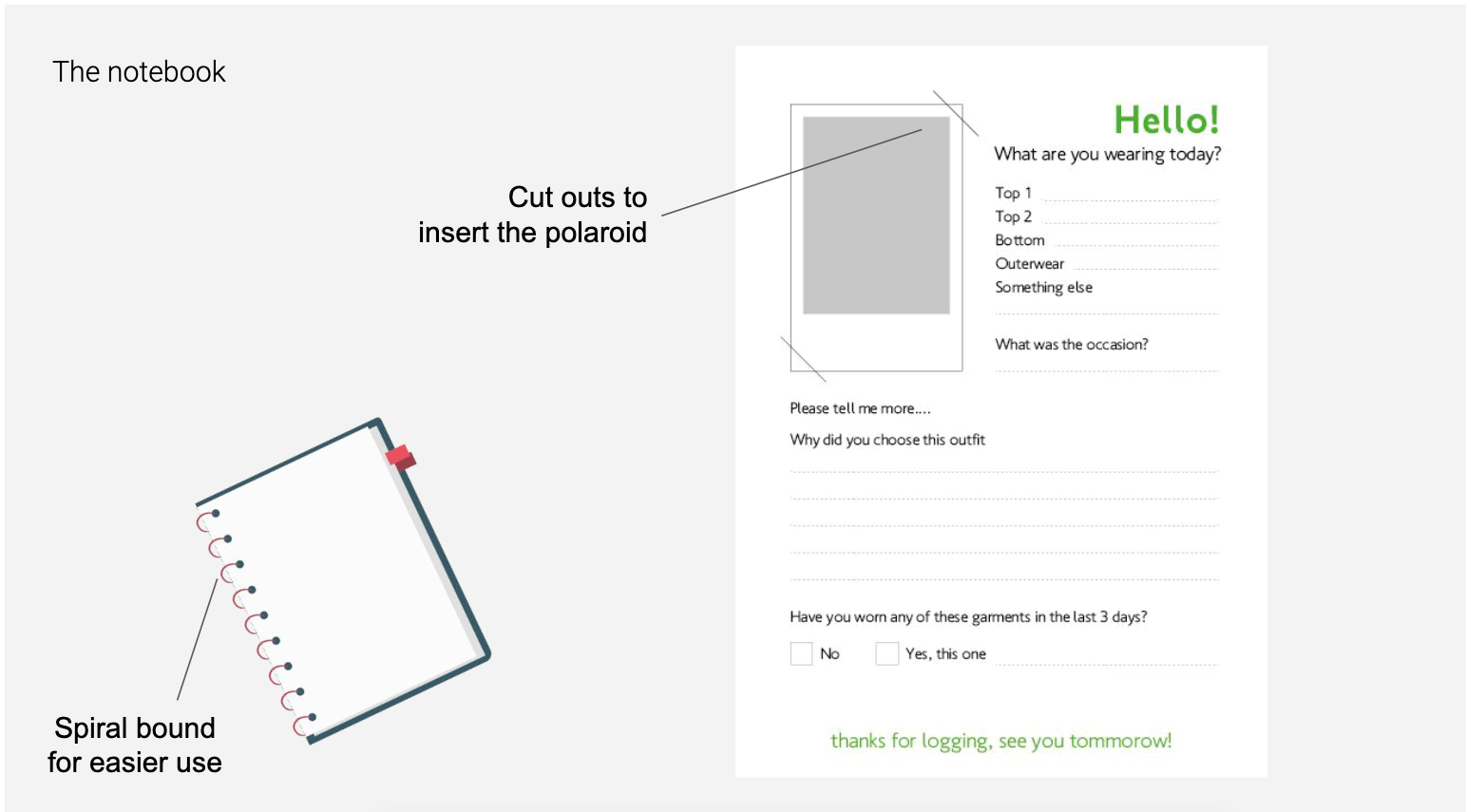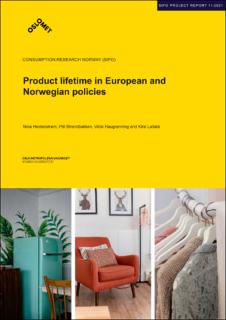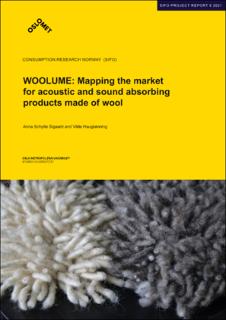News Archive
The proof ain’t in the pudding
It is common to hear and read about the environmental advantages of longer lasting products, it is everywhere from product advertisement to environmental policy and academic literature. But what is the empirical knowledge substantiating the “durability discourse” across consumer goods? In the recently published literature review in Sustainable Production and Consumption, The environmental impact of…
An Italian gaze on Oslo’s clothing habits
From the eyes of an Italian guest who has just spent her first month in Oslo, I’ve noticed some clear differences in fashion habits and the general relationship people have with clothing here compared to larger Italian cities like Rome, Milan, or Florence. By Rita Dominici What hit me almost immediately, especially during my early…
EU’s fear of addressing overproduction uncovered in eye-opening research
A new research article in Journal of Sustainable Marketing address EU’s Textile Strategy’s blatant avoidance of the volumes issue, and raises the question of why. In the Journal of Sustainable Marketing, a new article penned by Irene Maldini and Ingun Grimstad Klepp, The EU Textile Strategy: How to Avoid Overproduction and Overconsumption Measures in Environmental…
Continue Reading EU’s fear of addressing overproduction uncovered in eye-opening research
Clothing Research scores at SCORAI 2025
The 2025 SCORAI Europe Conference took place at Lund University in Sweden on April 8-10. SCORAI (Sustainable Consumption Research and Action Initiative) is an international network of researchers and practitioners focused on sustainable consumption. This year’s theme, Mainstreaming Sustainable Consumption, brought together a community of thinkers and doers – including several researchers from SIFO. By…
Changes for CHANGE
The Clothing Research Group warmly welcomes Rita Dominici who has come to SIFO for an internship. Rita Dominici is a second-year student in the master’s program in “Sociology and Social Research” at the University of Trento. She earned a bachelor’s degree in sociology at the University of Bologna with a thesis titled “Fashion as a…
Potential impacts of EPR in Norway: New study published
Scenarios for different Extended Producer Responsibility options has been explored in a report in Wasted Textiles.
Continue Reading Potential impacts of EPR in Norway: New study published
Artefacta conference
For the fourth time, University of Helsinki arranged the Artefacta conference. It brings together researchers and professionals interested in objects, material culture and our relationship to them (click here for full program helsinki.fi). I had the great honor of opening the event with the talk “Product attachment in politics and wardrobes”. I described the development…
When gender comes into play
Two portraits from the Local Wisdom project. Photo credits: Kerry Dean and Paige Green. The second article from CHANGE with gender as a main focus has been published, authored by Kate Fletcher: Gender, Fashion, Sustainability in Clothing Cultures. Text: Ingun Grimstad Klepp and Tone S. Tobiasson Kate begins the article with a review of what…
Defibering the future
The Wasted Textiles project took the trip to Norsk Tekstilgjenvinning in Sandefjord, and were privy to an introduction to one of the few recycling projects that can actually have something to offer, as the founder Pål Erik Haraldsen has understood the limitations and that it may sometimes be wise to say ‘no’. Photo, behind, from…
Dutch textile policy envisions consumption reductions and production and imports quotas.
SIFO’s advocacy work is influencing international public policy, step by step. The Dutch Circular Textile Policy Program for 2025-2030, released in December 2024, includes measures to reduce the volume of raw materials used in textiles, including the reduction of incentives that stimulate consumption (low price, advertising, sales), measures to help consumers to make sustainable choices,…
Telling it like it is: Lambasting consumer-facing Higg-based label
In a newly published article from Consumption Research Norway SIFO at Oslo Metropolitan University, Who Can Stop the Greenwashing, penned by Ingrid Haugsrud and Ingun Grimstad Klepp, the authors literally lambaste how the Sustainable Apparel Coalition (now Cascale) misused outdated and faulty data for their launch of a Higg (now Worldly) consumer-facing sustainability label. In…
Continue Reading Telling it like it is: Lambasting consumer-facing Higg-based label
Hello from Melbourne!
In September 2024, we left autumnal Oslo behind to embark on a research exchange at the University of Melbourne with the Critical Fashion Studies research collective. This group, led by Professor Natalya Lusty and Dr. Harriette Richards, brings together fashion scholars, practitioners, and industry members to advance research on sustainability, ethics, and innovation in fashion.…
New article from WOOLUME: Acoustic Performance of Tufted Carpets Coupled with Underlayment Produced from Tannery Wool Waste
Authors: Jan Broda, Katarzyna Kobiela-Mendrek, Marcin Baczek and Monika Rom Abstract Sheep wool is a precious, renewable raw material that is nowadays disregarded and wasted. To better use local sources of wool, it was used to manufacture tufted carpets. The coarse wool of mountain sheep was used to form a carpet pile layer, while the…
Clothing Care
“And he don’t even care for clothes” sang Nina Simone in “My Baby Just Cares For Me” which is how the chapter “Clothing Care” opens in the new, impressive and comprehensive book “The Palgrave Handbook of Sustainability in Fashion”. Clothing researchers in SIFO use the Nina Simone quote to discuss the connection between “care[ing] about…
Amazing international win!
Time to celebrate! Traditional costumes, the craftmanship and social practice from Norway, and summer farming (seter and fäbod) in both Norway and Sweden are now on UNESCO’s Intangible Cultural Heritage list! This gives an unexpected boost to the Amazing Grazing project and puts some recent and older publications in a new light. First and foremost…
Photo booth boots possible change
As part of the SIFO presence at the recent Friluftsliv conference, Kate Fletcher, ran a “Photo Booth” to record the thoughts (in a thought bubble!) of conference delegates about clothing and nature. Delegates responses ranged from desirable practical qualities of clothes for use outdoors, to the feelings that clothes imbue; and from aspiration about the…
Announcing the publication of Decentering Durability: Decarbonizing and Decolonizing Ideas and Practices of Long-Lasting Clothes
Just published in Fashion Theory, an article exploring durability through a decolonial lens. The research it builds on was conducted as part of the LASTING project, led by our very own Kirsi Laitala and funded by the Research Council of Norway. The article, written by Kate Fletcher and Anna Fitzpatrick, is open access. Please share…
New article published in the WOOLUME project
Big congrats in order! WOOLUME recently got some more good news: ‘We are pleased to inform you that “Thermoregulation and Soil Moisture Management in Strawberry Cultivation Mulched with Sheep Wool” by Jan Broda, Andrzej Gawlowski, Monika Rom, Tomasz Kukulski, Katarzyna Kobiela-Mendrek has been published in Applied Sciences and is available online’:Due to its beneficial and…
Continue Reading New article published in the WOOLUME project
Designa: Seeing design with new eyes
The Wool museum and universitty in Covilhã, Portugal hosted the Designa conference, where Clothing Research’s Ingun Grimstad Klepp and Kate Fletcher were both key note speakers. Here is their report: Kate and I felt very honoured and privileged to be able to open this conference together. Both the importance of the environmental crisis and of…
Thematic session at PLATE 2025
Join us for a thematic session at PLATE conference in Denmark (July 2025). 2025 is the last year for the CHANGE project and one of the closing activities is a thematic session at the Product Lifetimes and the Environment (PLATE) conference. The thematic session on “Rebound effects and critical views on product durability”, co-chaired by…
Clothing Research at ESA 2024
The European Sociological Association’s main biennial event this year took the clothing researchers to Porto! When: 27th – 30th August 2024Where: University of Porto, Portugal Set on the beautiful backdrop of Porto, the main themes of the 16th ESA conference were “Tension, Trust and Transformation”. About 20 researchers from Consumption Research Norway SIFO participated in…
The Good Wool Collective’s first webinar
A new initiative from Sweden has surfaced, The Good Wool Collective, started by Lisa Bergstrand. As part of their inaugural webinar, Australian Wool Innovation’s Angus Ireland and I gave talks. The theme was the shortcomings of EU’s Product Environmental Footprint (PEF) and how it disadvantages natural fibers. The audience was mainly Nordic brands, but also…
New PhD makes a splash: The function of the laundry and the limitation in self-reported data
Chalmers University In the heart of Gothenburg hosted the defense for Erik Klint on September 6th. Klint’s PhD, consisting of 5 published articles and some additional published material, was discussed with professional curiosity and benevolence, and the atmosphere was positive throughout. Author: Ingun Grimstad Klepp It is not easy to work interdisciplinary, but as the…
TPR brought forward in What Fuels Fashion? Report
In the recently published report, What Fuels Fashion?, issued by Fashion Revolution, Consumption Research Norway SIFO’s suggestion for a Targeted Producer Responsibility method has received substantial attention alongside the Plastic Elephant report. In addition, the ruling by the Norwegian Consumer Authority against the Higg consumer-facing label also is brought forward. All in all, What Fuels…
Continue Reading TPR brought forward in What Fuels Fashion? Report
SIFO-paper presented at Degrowth conference: More durable, or fewer products?
Three days of multidisciplinary perspectives to overcome our society’s obsession with economic growth, sounds like a good way to round out the month of June? Obviously… Consumption Research’s Irene Maldini took the trip to Spain to talk about durability’s role in our obsession with growing the textile sector, perhaps one of the sectors that really…
Continue Reading SIFO-paper presented at Degrowth conference: More durable, or fewer products?
Letter sent to the EU Council
Tanja Gotthardsen, a Danish anti-greenwashing specialist, Continual, and member of the advisory board for textiles at the Danish Consumer Council, Forbrugerrådet Tænk, has together with Professor Ingun Grimstad Klepp and Tone S. Tobiasson, penned a letter to the EU Council ahead of their vote on Green Claims Directive. If the EU’s Green Claims directive is…
On clothing and … love!
June 3rd, 2024, Ana Neto graduated as a Doctor in Design at the Lisbon School of Architecture, University of Lisbon with her research on “Usership in Fashion: A Grounded Theory on Wearer-Clothing Relationships”, which she carried out under the supervision of João Batalheiro Ferreira (IADE) and Gabriela Forman (ULisbon) SIFO researchers Kate Fletcher and Irene Maldini…
Socks – the most neglected of all garments
Maria Kupen With’s Master thesis is entitled A new narrative of Neglected Socks. An exploration of new value creation and narratives for materials through creative fashion practice. She recently delivered her Masters at the Department of Art, Design and Drama – Fashion and Society – at OsloMet. Inspired by the preliminary results from Anna Schytte…
How does repair affect the value of clothes?
Kinga Zablocka is one of the Master students at OsloMet’s Master of Aesthetic Practices in Society (Fashion and Society), Department of Art, Design and Drama. Professor in Clothing and Sustainability, Ingun Grimstad Klepp, has been one of her supervisors on her Master’s thesis, Is it worth it? An exploration of clothing repair and value using…
Continue Reading How does repair affect the value of clothes?
Wardrobe Methods webinar opens up the field
On 17th April 2024, UCRF (Union of Concerned Researchers in Fashion) hosted a Wardrobe Methods Event in conjunction with the CHANGE research project to explore a way of researching the contents and dynamics of wardrobes. 78 had registered for the event, and 41 attended the webinar on Wardrobe Methods, which is about the use phase…
Continue Reading Wardrobe Methods webinar opens up the field
Slovool webinar: A full day of sharing knowledge
The Slovool project, a cooperation between Norway and Slovakia, enabled cultural exchange around the use of wool, and especially in national dress traditions. It was funded by the Bilateral Relations Fund for the Culture Program, through the Ministry of Investment, Regional Development and Informatization of the Slovak Republic from grants from the EEA and Norway.…
Continue Reading Slovool webinar: A full day of sharing knowledge
A day worth marking for clothing research
April 8th, 2024, Iryna Kucher defended her PhD “Designing Engagements with Mending. An Exploration of Amateur Clothing Repair: Practices in Western and Post-Soviet contexts”. Iryna was a guest lecturer at Consumption Research Norway SIFO a period as research fellow, she has used wardrobe studies as a method and Ingun was her first opponent. This was…
TPR gets some serious airplay
Volumes, policy measures and Targeted Producer Responsibility all fitted into discussions the week before Easter, where some of us jumped back and forth between Webex, Zoom and Teams, recordings and live webinars. The take-aways are that several policy tools are mired in antiquated ideas that seriously need updating from research, and that the conversations around…
Fashionscapes for Transformation: EU addresses plastification and a just transition
The main point made during EcoAge and MEP Alessandra Moretti’s joint event in the EU Parliament was to link the increased plastification in the fashion sector with social injustice upstream and downstream in the value-chain. Livia Firth, founder of EcoAge and moderator of Fashionscapes for Transformation, has relentlessly these last months hammered in the point that…
Continue Reading Fashionscapes for Transformation: EU addresses plastification and a just transition
Removing the silk gloves and pulling a (historic) punch
Wardrobe and Climate was the over-arching theme for a CHANGE event at the Norwegian Folk Museum.
Continue Reading Removing the silk gloves and pulling a (historic) punch
Exploring design and nature
A new, limited-edition publication, edited by Kate Fletcher, Research Professor at SIFO, and Louise St. Pierre, Associate Professor at Emily Carr University in Vancouver, has been published, exploring design places, practices and senses – all in the context of how we relate to nature. According to the book-blurb, Nature Relations (Occasional Press, 2023) explores light,…
Woolume coming to its voluminous end
“Will I have to change my sheep?” was the first question Piotr Kohut had asked when the Center for Regional Produce in Koniaków was asked to be a partner in the Woolum bilateral project financed by Norway grants. The respect for keeping the sheep happy prevailed, and the project has amazing results, including a high-hanging…
Call for papers for the special issue of Fashion Theory
Mending matters: cultures and contexts of clothing repair
Continue Reading Call for papers for the special issue of Fashion Theory
Lasting, durability and lifespan: Looking closer at the terms
The Lasting project’s end seminar discussed if durability and lifespan is relevant for all product groups, or fails to address the actual pressing issues for some, such as textiles.
Continue Reading Lasting, durability and lifespan: Looking closer at the terms
Used but not used up – what do we know about textile waste?
Recording and presentations are now available from the hybrid event presenting state of knowledge on textile waste streams.
Continue Reading Used but not used up – what do we know about textile waste?
EcoAge Roundtable in Brussels: A fair phase-out of fossil fuels from the fashion industry
The ethical issues are often discussed separate from environmental issues, it is high time they are discussed in the same room. Therefore, a huge thanks to EcoAge who arranged an important roundtable, and in the Parliament in Brussels, with the heading Calling for a fair phase-out of fossil fuels from the fashion industry. Livia Firth,…
Klippe, klippe, klippe: A changing discussion of gender
There is little in our field of study that is not gendered, it concerns the clothes themselves, how they are used, who those of us who are actually studying clothes are and who our informants are.
Continue Reading Klippe, klippe, klippe: A changing discussion of gender
Thriving without growth
The Amsterdam Economic Board launches a learning journey for clothing companies to reduce their production volumes.
EU wants data on textile waste, and we have the answer
(…) we have found that food offers us two good guiding principles. The first one is to eat up what is on your plate. The second is waste audits as a means to gain meaningful knowledge on what gets “eaten up” and what doesn’t.
Continue Reading EU wants data on textile waste, and we have the answer
The plastic elephant in the room: Who dares to talk about it?
In the Consumption Research Norway SIFO report The plastic elephant: Overproduction and synthetic fibers in sustainable textile strategies we examine national, international and corporate strategies for sustainable textiles to understand whether, and if so, how they include the problem of increased production volumes based on synthetic materials that can be referred to as the ‘plastic…
Continue Reading The plastic elephant in the room: Who dares to talk about it?
Productive project publishes again
The scientific article Sound Absorption of Tufted Carpets Produced from Coarse Wool of Mountain Sheep has been published in Journal of Natural Fibers. The article is co-authored by Jan Broda, Katarzyna Kobiela-Mendrek, Marcin Bączek, Monika Rom and Ingvild Espelien, and is an important contribution to the study of wool’s properties. As part of the ongoing…
Garbage talk: Easily outdated, but difficult to date
Text by Tone Skårdal Tobiasson The results from the Wasted Textiles pilot study, executed by four Master-students Camilla Sunde (UiO), Eva Hovda (NTNU), Siri Vestengen (NTNU) and Saeid Sheikhi (Høyskolen Kristiania) has now been published. Avfall Norge and their summer program REdu, were able to get the pilot financed by The Norwegian Retail Environmental Fund,…
Continue Reading Garbage talk: Easily outdated, but difficult to date
PhD Masterclass on Wardrobe Research
13th of April this year an online PhD masterclass was conducted within the scope of the CHANGE work package 5. The masterclass was online and involved the currently eight PhD students working with the wardrobe method or closely related methods and had the purpose of facilitating exchange of shared methodological implications, involved issues of interest,…
Reflections from PLATE
We attended the PLATE-conference in Helsinki with 7 papers, you can read more here. The PLATE conference has over the years brought together very important profiles and institutions that all work with the concept of design for longevity, the use phase of products, systems and processes around products, and this was also the case in…
Ecodesign position paper: Textiles and footwear
In a position paper from the Change and Wasted Textiles projects, authors Kate Fletcher, Irene Maldini, Ingun Grimstad Klepp, Kirsi Laitala, Jens Måge and Tone Skårdal Tobiasson have addressed the background document from EU’s Joint Research Centre on Ecodesign for Sustainable Products Regulation (ESPR). The main theme in the position paper, is that the JRC…
Continue Reading Ecodesign position paper: Textiles and footwear
Sufficiency on the agenda
Sufficiency advocates from different sectors came together on May 4th at the Sufficiency Summit. Co-organised by Sciences Po (France) and University of South Australia, and chaired by Dr. Yamina Saheb and Professor David Ness, the Summit brought together governments, NGOs, and academics advocating for sufficiency in transport, the built environment, food, and clothing from different…
A full PLATE with a 7-course SIFO menu
Holding on or letting go? Why don’t consumers complain more? Why do we hang on to stuff that is flawed? How to make fast fashion out of fashion and actually degrow the textile sector? All these questions will be answered at the PLATE conference at Aalto University, in Espoo, Finland. At the end of May…
Microplastics or microfibers: Does anyone really get what this is about?
OPINION: What we do know, is that all synthetic clothing and materials, sooner or later, will become microplastics, a «time-delayed» pollution bomb. And thus, they will ultimately become a problem for seabirds, and us. A new report on microfibers in waterways is gaining attention, as it claims the results show more natural fibers than synthetic ones,…
Continue Reading Microplastics or microfibers: Does anyone really get what this is about?
Winter wheat + wool pellets work well
It turns out that Polish mountain sheep wool can be successfully used as a nitrogen-rich, organic fertilizer in organic farming. This enables utilization of coarse wool, which is not suitable for textile processing, to be used and lead to zero-waste from wool shearing. “Utilisation of waste wool from mountain sheep as fertiliser in winter wheat…
A conversation with Kate Fletcher
First of all, we would like to welcome you as a colleague! This is a very happy development for Consumption Research Norway (SIFO) and our clothing research group, alongside of course, the work in the projects you have the lead of work packages. So firstly: welcome! For such a long time, we have associated you…
Critical background paper on PEF for apparel and footwear
This week saw the publication of a critical background paper on concerns surrounding the Product Environmental Footprint Category Rules for Apparel and Footwear from a consortium representing the collaborative international research project Wasted Textiles at Consumption Research Norway SIFO at Oslo Metropolitan University. The consortium were asked to supply more background information to the EU Commission after a knowledge sharing meeting January 25 hosted by…
Continue Reading Critical background paper on PEF for apparel and footwear
Double whammy for Clothing Research
Two articles from Clothing Research at Consumption Research Norway have been accepted by the journal Fibers and are accessible online. The two articles are entitled Reducing plastic: Opportunities and obstacles for coarser wool in consumer goods and Natural and sustainable? Consumers’ textile fiber preferences. More than half of the team in the Clothing Research group…
A functioning ‘functional unit’
For LCA-based tools and category rules, there is a central idea of a “functional unit”. How this will function in the ongoing work with EU’s PEFCR (Product Environmental Footprint Category Rules), is based on the number of days of “usability”. A “functional unit” is most often described for paint. It is not the liter of…
New Research Centre in Copenhagen based on wardrobe research
The CHANGE masterclass seminar held at the Royal Danish Academy in Copenhagen September 30th 2022 hosted another interesting occasion. This was the launch of KLOTHING – Centre for Apparel, Textiles & Ecology Research. The first Danish research center on fashion, textiles and sustainability lead by me, Associate Professor, PhD, Else Skjold, who has been central…
Continue Reading New Research Centre in Copenhagen based on wardrobe research
We throw away clothes with the price tags on them
We throw away enormous amounts of clothing, and most of it contains polyester and other plastics. We need more knowledge to be able to meet the new EU requirement for separate textile collection by 2025, say researchers. Text Kjersti Lassen/Consumption Research Norway (SIFO) After cleaning out your wardrobe, you might be left with a pair…
Continue Reading We throw away clothes with the price tags on them
VikingGold: Weaving History and Fashion together
Fashion met cultural history in the project VikingGold, and the two were woven together into a beautiful wool fabric, that found its way to museum exhibits and Norwegian national tv as the most sustainable fabric of the future. During the annual event Oslo Runway, the Norwegian actress Iselin Shumba debuted as a catwalk model on a…
Continue Reading VikingGold: Weaving History and Fashion together
Mapping of the industry’s design tools
Lisbeth Løvbak Berg, Tone Skårdal Tobiasson, Ingun Grimstad Klepp One of NF&TA’s tasks in Wasted Textiles is to map what tools are being used by businesses, academia and organisations in the design and product development processes to ensure more environmentally friendly and circular production, and how these relate to the central questions in the project.…
Travel letter Uruguay December 2022
In the middle of Advent 2022, Vilde, Kirsi and Ingun traveled to Uruguay. Irene was already there with her family, and the trip was well planned in collaboration with Irene, who lives in Portugal, but is from Uruguay, and Lucrecia who works in Montevideo. Part of the background for the trip was the testing of…
A real CHANGE
Casual and formal on a trajectory to merge? This question is emerging both in research and when looking at consumer trends for clothing and fashion. As part of the CHANGE project, one trajectory being explored is a return to clothing that is more versatile and less defined by occasion. In this exploration, a “mix and…
Report from IWTO’s Round Table 2022
There seems to be renewed hope for strong wool and local production. Especially with a focus on regenerative grazing and looking at wool’s possible new (and perhaps old, but forgotten) applications. Regenerative agriculture was a major topic at the IWTO’s Round Table in Nuremberg, Germany, and the possibility of natural fibers to make a positive…
Clothing Research contributes to new report on over-consumption
The Clothing Research Group, SIFO at OsloMet, has contributed to the recent Hot or Cool Institute report Unfit, Unfair, Unfashionable: Resizing Fashion for a Fair Consumption Space (download the report from Hot or Cool here). The contribution is in the form of a critique of EU’s textile strategy which was launched in March 2022. The…
Continue Reading Clothing Research contributes to new report on over-consumption
The core challenge: Overproduction and growtharchy
During the Fashion & Sustainability (lusafona.pt) conference in Cascais, Portugal, Irene Maldini gave the key note speech entitled Overcoming growtharchy: why we need limits to (clothing) production volumes, concluded three days of exhibitions, parallel sessions, project presentations and keynote speeches in the first edition of this biannual event.
Continue Reading The core challenge: Overproduction and growtharchy
Selbu spinning mill’s pivotal role in wool projects
12 years ago, Selbu spinning mill was established, focusing on wool from traditional, Norwegian heritage sheep breeds. From the beginning, cooperation in projects has been important. Let’s do a deep dive! Why do Selbu work on projects? Well…. Exchange of competence and skills, development of own competence and skills, new challenges for the employees and…
Continue Reading Selbu spinning mill’s pivotal role in wool projects
CHANGE in Denmark
The CHANGE researchers met in Copenhagen the last week of September.
Clothing research at the ESA Sociology of Consumption Conference
Last week SIFO hosted a conference for The European Sociological Association (ESA)’s Research Network of Sociology of Consumption. The theme for the conference was “Consumption, justice and futures: Where do we go from here? (oslomet.no)”. 146 participants from all over Europe gathered for the event and most of SIFO’s clothing researchers were among them. The…
Continue Reading Clothing research at the ESA Sociology of Consumption Conference
Deep diving into wardrobes provides important knowledge on clothes and their environmental impact
Authors: Vilde Haugrønning, Ingun Grimstad Klepp and Anna Schytte Sigaard Norway leads the way in methods for studying the use of clothing. This is knowledge that is important in sustainability studies of apparel. How many clothes are there in our wardrobes? What is used a lot and what do you seldom wear, and why? Which…
Visit to Poland
Ingvild and Lisbeth visited Poland the last week of June. The goal of the trip was knowledge transfer and during it, they held three workshops/seminars. At the University of Bielsko-Biala, teachers and pedagogy students were invited to a workshop about teaching wool to children, emphasising the creative potential as well as cultural aspects of wool.…
Feedback on the Sustainable Products Initiative (EU)
Kirsi Laitala and Ingun Grimstad Klepp have submitted feedback on the Ecodesign for Sustainable Products Regulation proposal on behalf of Consumption Research Norway. In the following, you can read the introduction. Click this link to read the whole feedback document (eu.com). The clothing research group also sent feedback on the Sustainable textiles strategy to Miljødirektoratet…
Continue Reading Feedback on the Sustainable Products Initiative (EU)
New Make the Label Count White paper outlines important shortcomings for PEF
The report, that Ingun and Kirsi have contributed to, identifies key areas that are not aligned with other EU environmental strategies and that will have detrimental environmental effects if not amended. Key whitepaper findings: Issue #1: The PEF system does not currently take into account microplasticsOmitting microplastics as an indicator effectively assigns zero impacts to this…
Continue Reading New Make the Label Count White paper outlines important shortcomings for PEF
Local as a fashion change-maker
Hybrid event, 8th June 2022, 17:30-19:30 CET Online and at Sentralen, Oslo
Say hello (and goodbye) to our student intern Lea!
For the past three months Lea Gleisberg, a student from the Master in System Design program at HTW Berlin has been a part of our team. For her master’s project, she is developing a clothing swap concept for Berlin, to increase re-use and make it attractive to more people. While working with us and participating…
Continue Reading Say hello (and goodbye) to our student intern Lea!
Hit them where it hurts: Producers of fast fashion should pay the most
OPINION: How best to deal with the negative environmental impact of the clothing industry? The writers behind this opinion suggest a system in which those who sell large volumes of clothes that don’t last pay the most.
Continue Reading Hit them where it hurts: Producers of fast fashion should pay the most
Feedback to the EU Textile Strategy
The input is based on knowledge from these ongoing research projects on clothing and its environmental impact, supported by the Norwegian Research Council: Lasting: Sustainable prosperity through product durability CHANGE: Environmental system shift in clothing consumption Wasted Textiles: Reduced synthetic textile waste through the development of resource-efficient value chains Amazing Grazing: Sustainable products from rangeland-grazing…
What does the Minister of the Environment think about apparel and the environment?
This is not easy to ascertain from two answers sent to Conservative Member of Parliament Liv Kari Eskeland in response to her questions about the EU’s new Product Environmental Footprint (PEF) scheme, which is in danger of labeling natural fibers as the least environmentally friendly.
Continue Reading What does the Minister of the Environment think about apparel and the environment?
New book on local and sustainable clothes
Explores the importance of local practices in achieving global sustainability. This is a book about one fibre, wool, its role in the future of a more sustainable global textile industry, and a new approach to how we can organize how we use local resources in a better way. Why is this important? Because of the…
Make the Label Count
Wednesday the 13th October, Ingun Grimstad Klepp participated in the panel discussion at the launch of the Make the Label Count campaign – an international coalition of organisations that want to ensure that the EU’s new labelling system for sustainable clothing is credible and valid. They are critical of the EU commission’s proposed use of…
Design process: research tools for CHANGE
During the first week of September 2021, CHANGE researchers collaborated with the Master Digital Design of the Amsterdam University of Applied Sciences, in the context of its Design Processes Track. You can read about the course here (masterdigitaldesign.com). Guided by Angella Mackey, a diverse group of 48 international students proposed 12 research tools that could…
Product lifetime in European and Norwegian policies
The objective in this report is to better understand how the increased product lifetime option has been positioned in policies over the past twenty years. By means of policy document analysis, we explore product lifetime positioning in the EU’s circular economy policies, Norwegian political party programs and official documents, environmental NGO documents, consumer organisation policies…
Continue Reading Product lifetime in European and Norwegian policies
WOOLUME: Mapping the market for acoustic and sound absorbing products made of wool
This report is the first deliverable from work package 2 of the WOOLUME project. The main goal of WOOLUME is to explore different ways of using wool from Polish Mountain Sheep to achieve better utilisation of resources and value creation. The aim of the report has been to map the market for acoustic and sound…
Continue Reading WOOLUME: Mapping the market for acoustic and sound absorbing products made of wool
